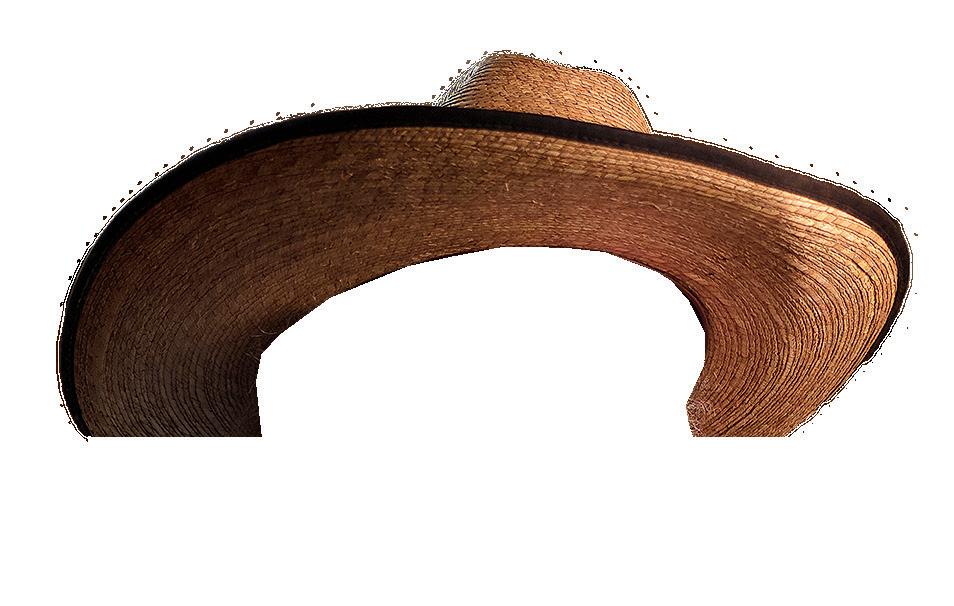
Of central Oregon
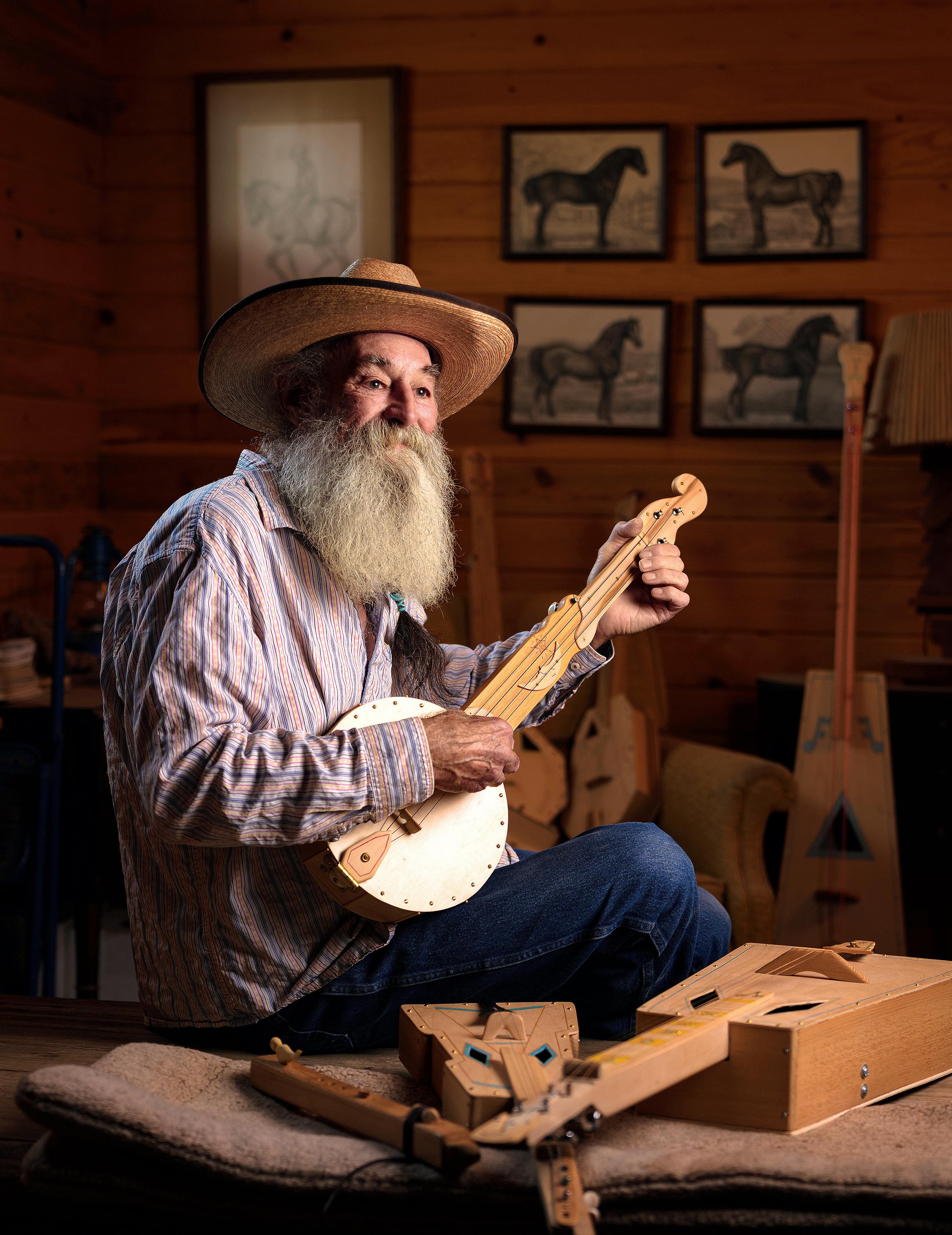
INSIDE:
FOLK ARTIST DOUG WILLIAMS
PAIGE WOOD
ATTORNEY GABRIELLE RICHARDS
WILDLIFE REHABBERS
GRANDVIEW & GENEVA
PLAYER OF THE YEAR AUDREY CORCORAN
LONG HOLLOW RANCH
SPARROW CLUBS
THE RANCH MARKET
EQUINE THERAPY
ALPACAS
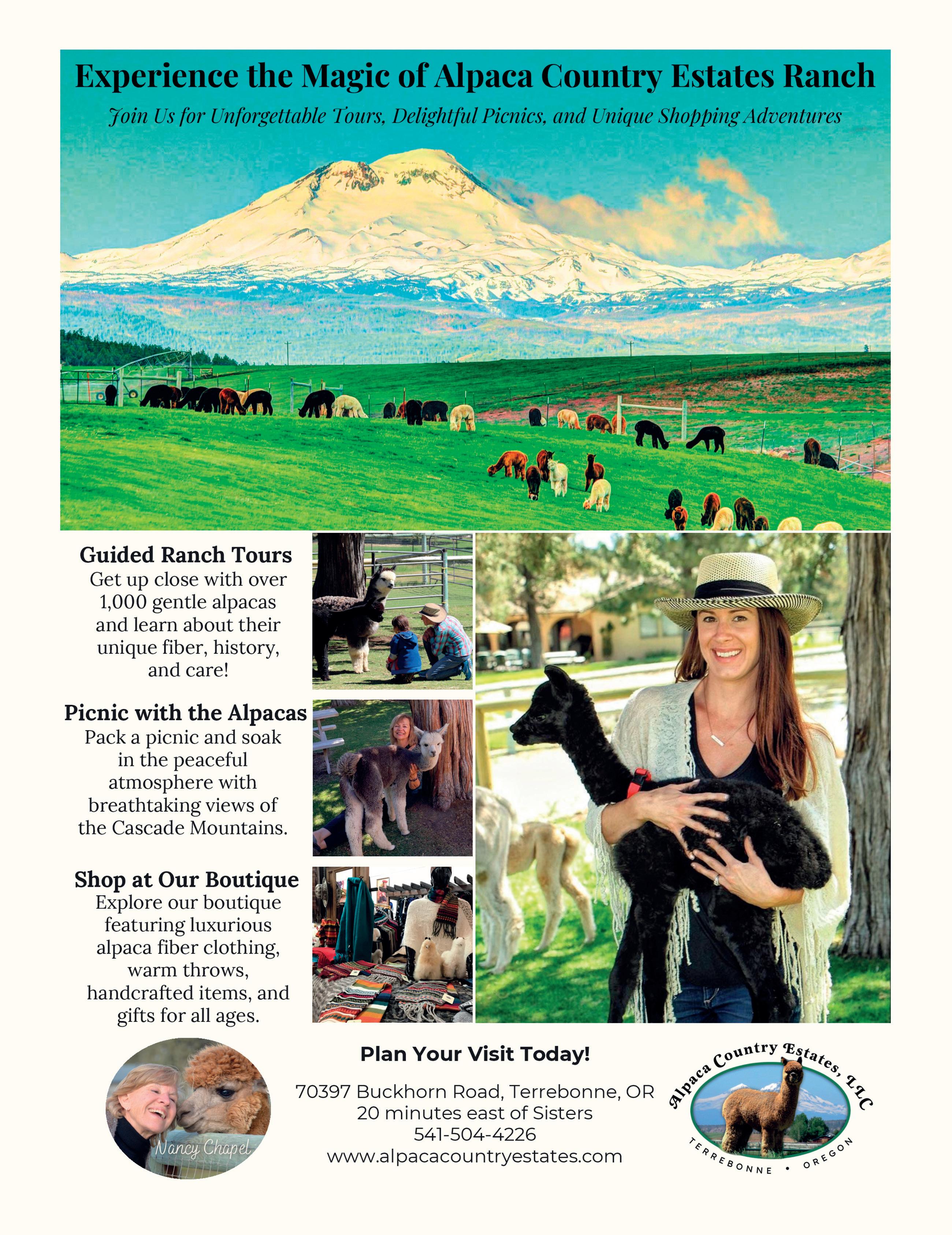

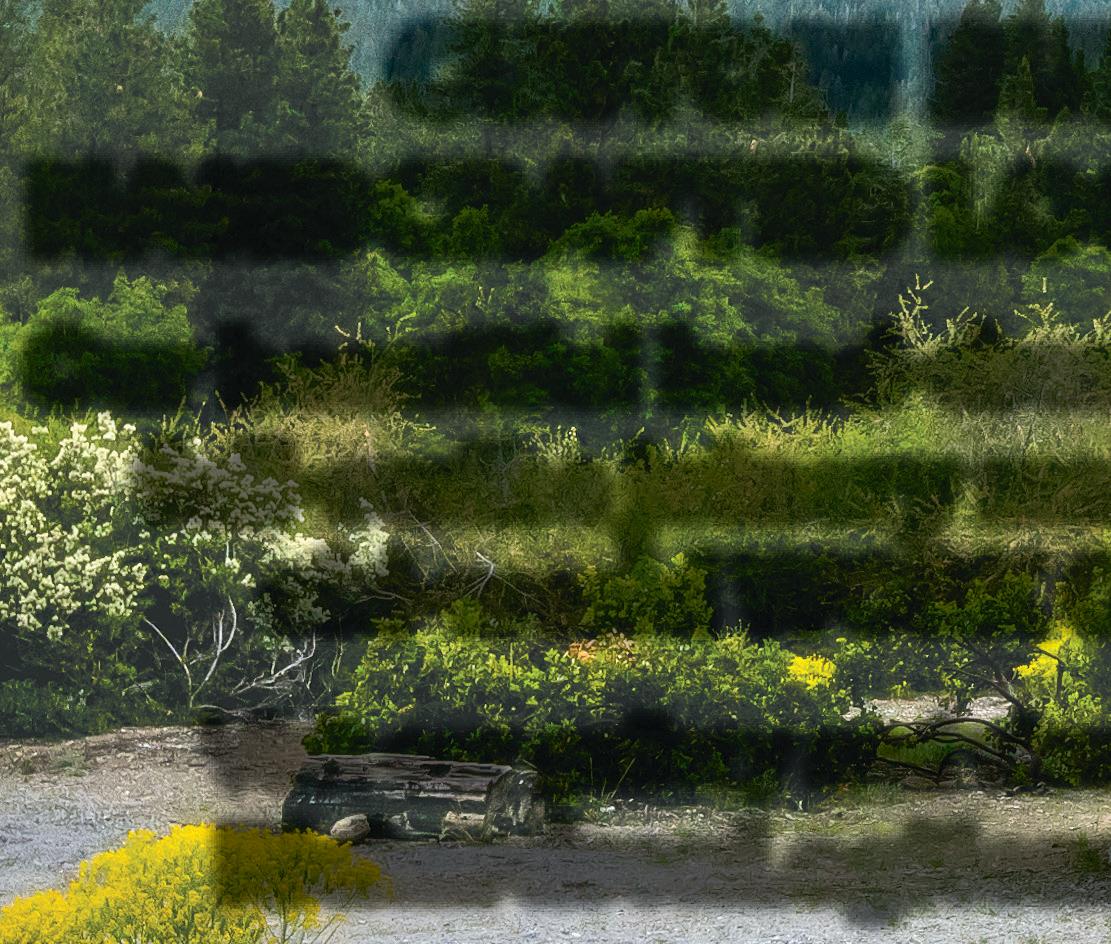
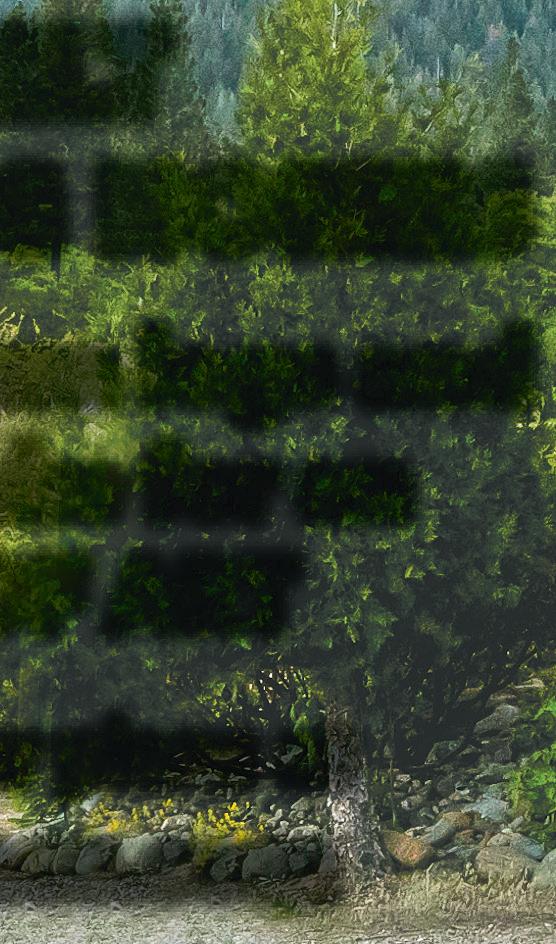
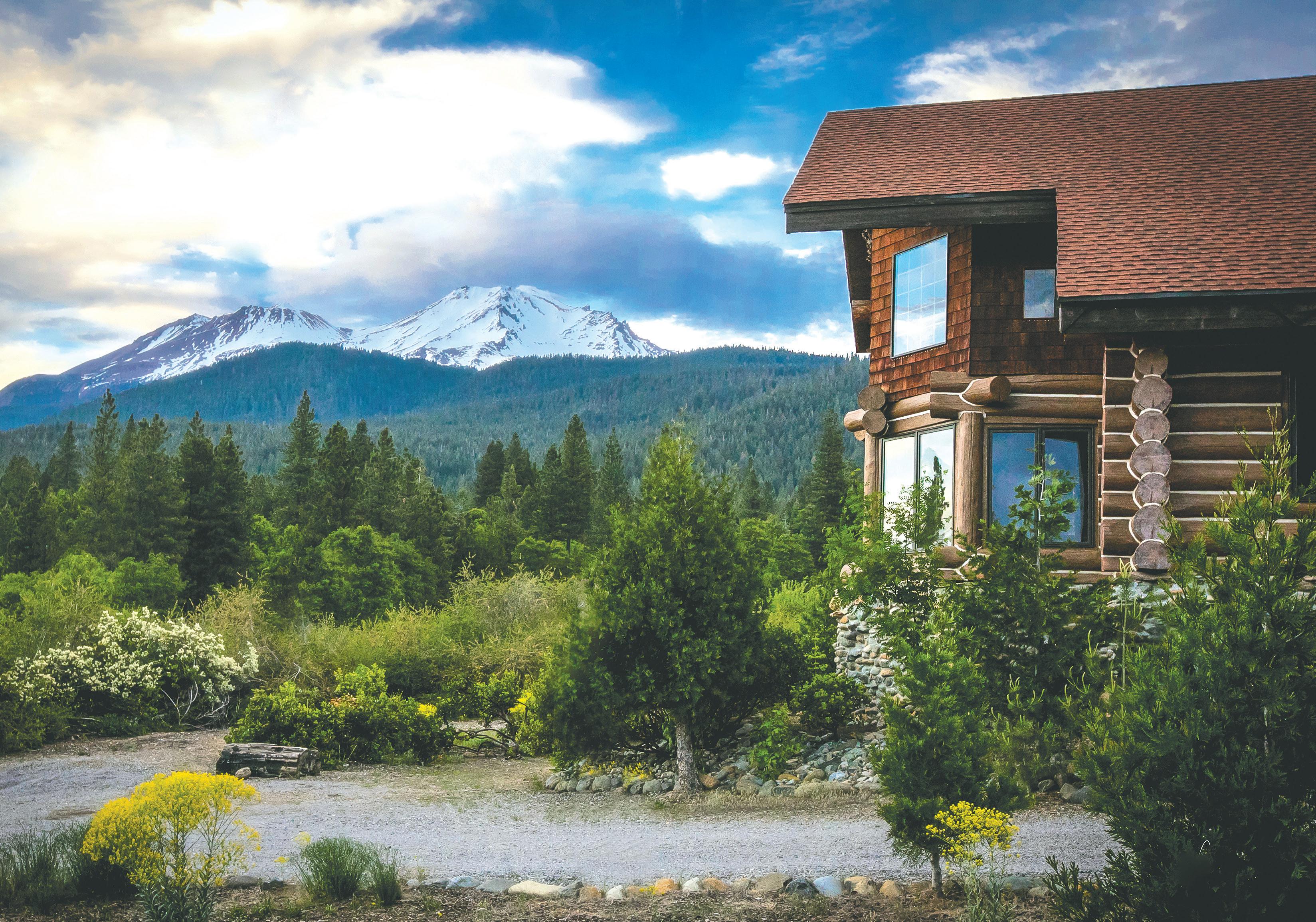
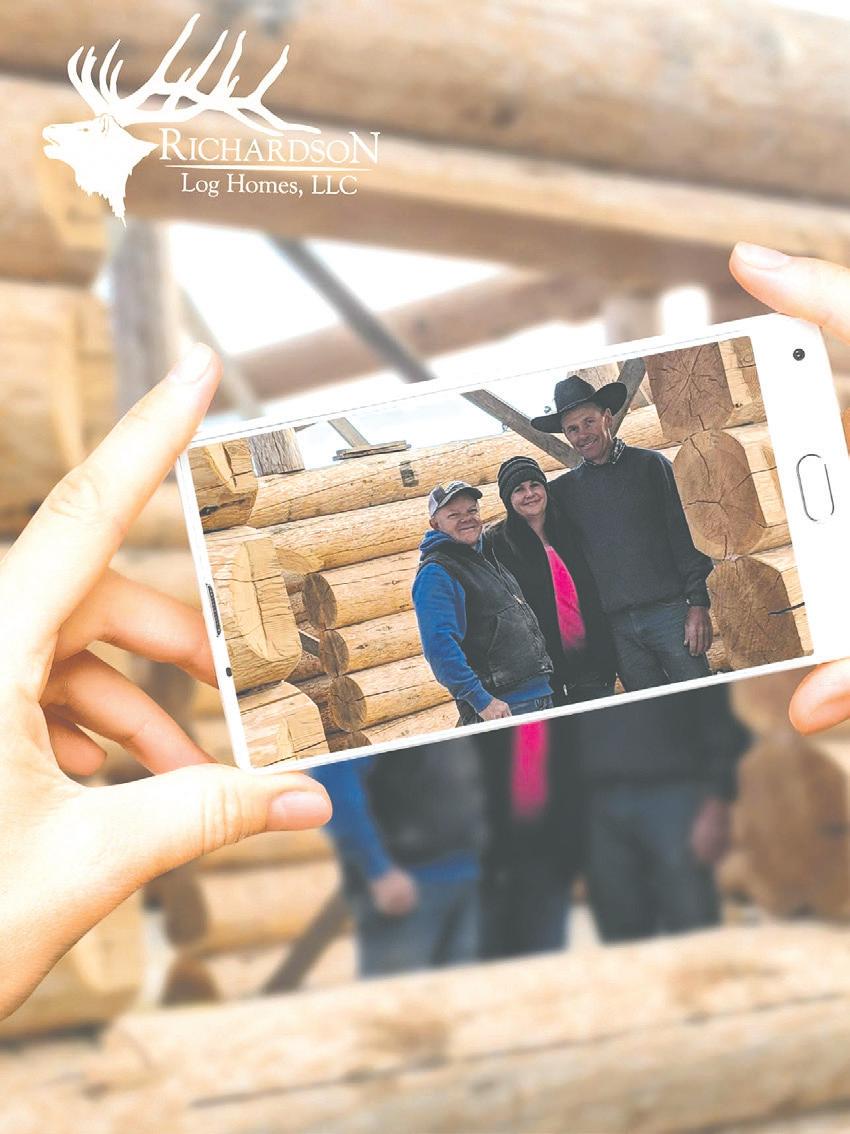




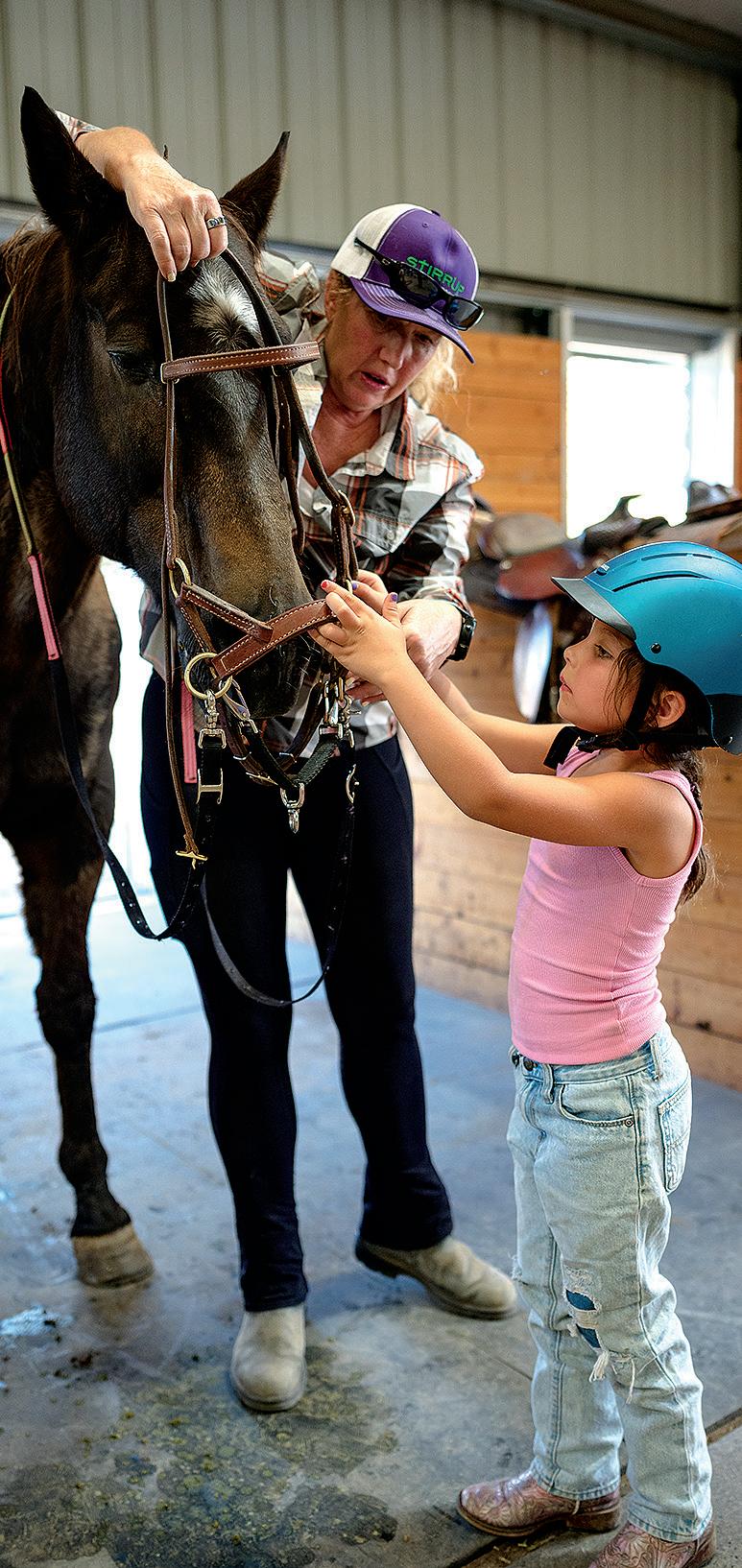





FOLK ARTIST DOUG WILLIAMS
PAIGE WOOD
ATTORNEY GABRIELLE RICHARDS
WILDLIFE REHABBERS
GRANDVIEW & GENEVA
PLAYER OF THE YEAR AUDREY CORCORAN
LONG HOLLOW RANCH
SPARROW CLUBS
THE RANCH MARKET
EQUINE THERAPY
ALPACAS













The Spirit of Central Oregon is a song. It sings of soaring natural beauty, and it sings of resilience in the face of hardship and struggle. It sings of a sense of community and a spirit of entrepreneurship.
There is nothing more satisfying to the staff and freelancers of The Nugget Newspaper than to tell the stories of our neighbors in this remarkable region. We find inspiration in these stories: Of people who honor tradition while embracing change. Of people who face adversity with profound grace and courage. Of people who serve their neighbors and communities, and the natural world that sustains and inspires us. Of a community that rallies when one of our own is in crisis.
It is all too easy to take for granted the truly special nature of this place we have chosen to call our home. The stories within remind us that there are exceptional stories and beautiful songs playing out amongst us every day. We see them, we hear them, we are inspired by them. You will be too.
Cornelius, Editor in Chief editor@nuggetnews.com
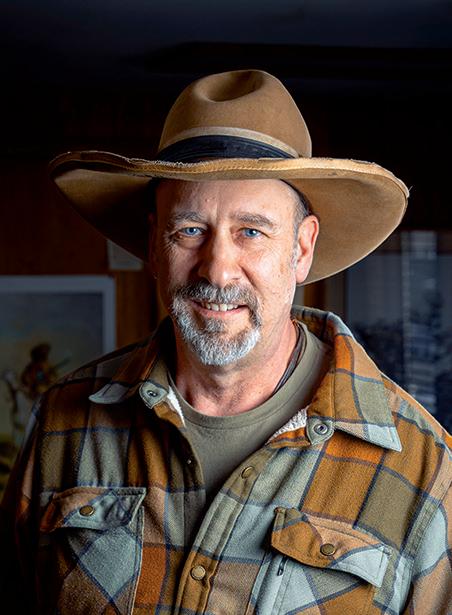
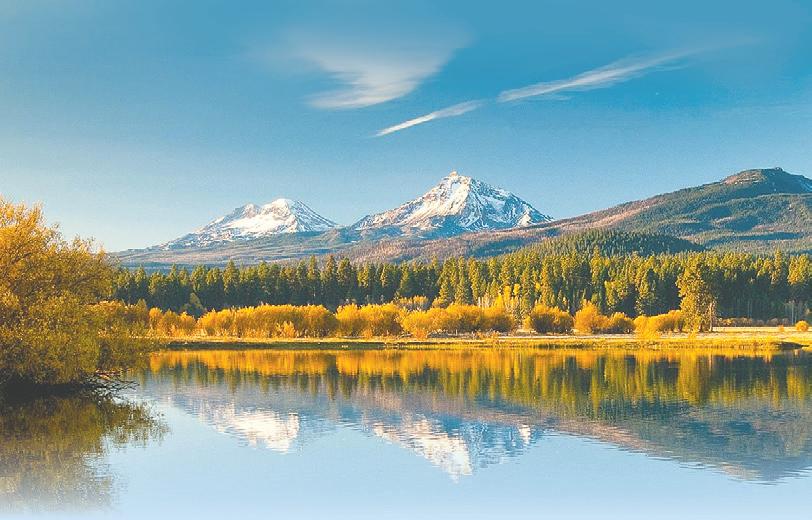
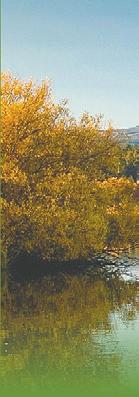


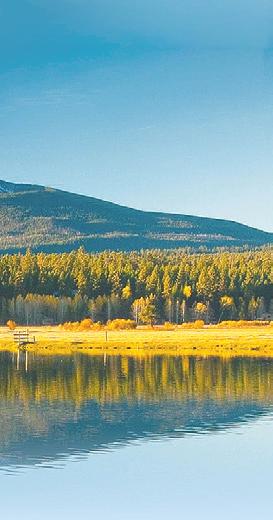
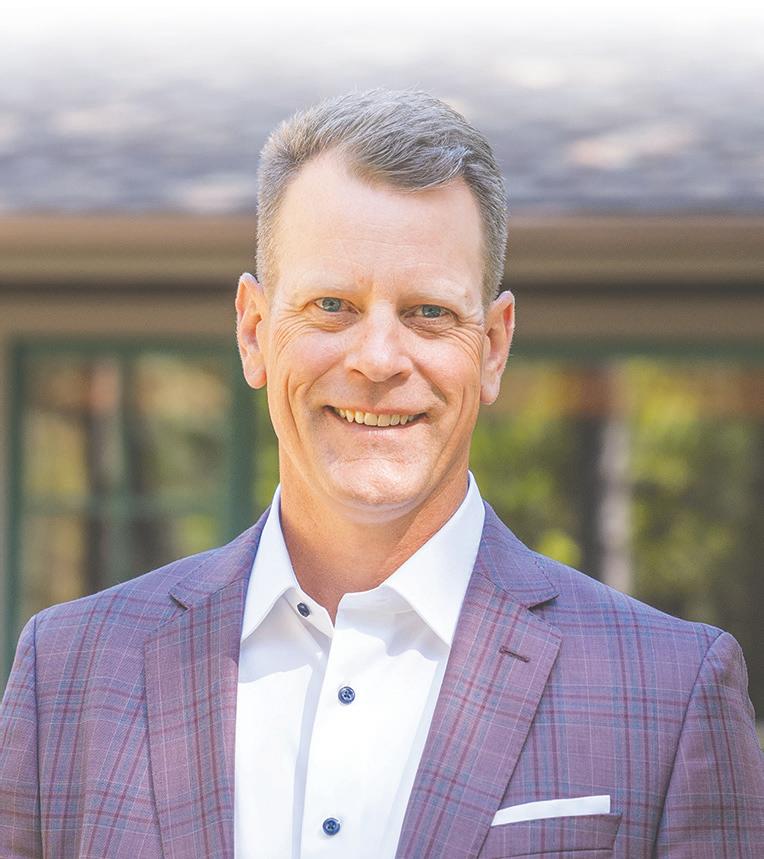
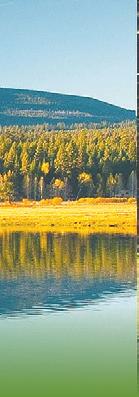

BY KATY YODER
BY CODY RHEAULT
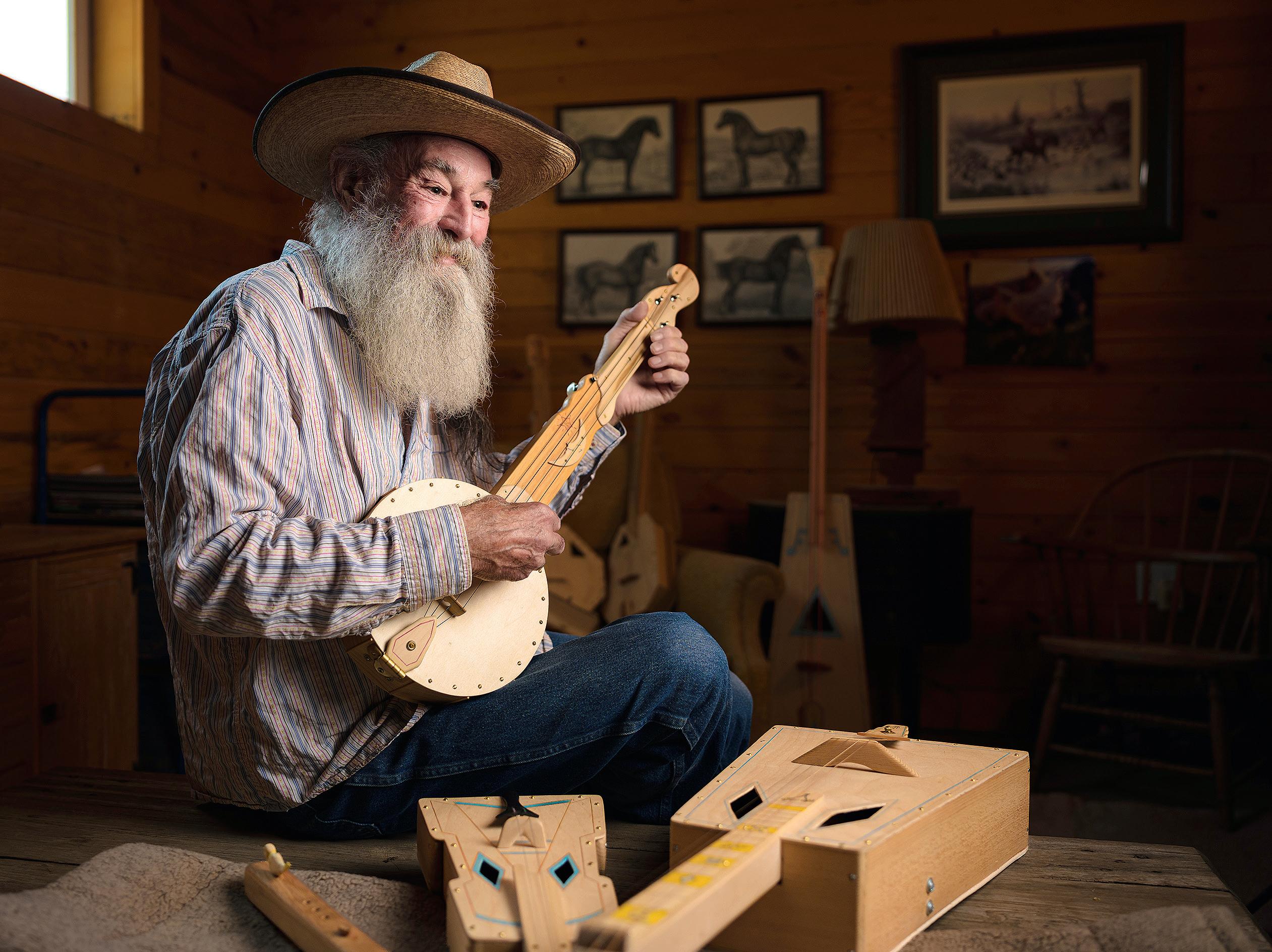
You can learn to make on the Internet. There are video tutorials for making flutes to guitars and harps, even instructions on how to turn a cigar box into a banjo or straws into a pan flute. Longtime Sisters local Doug Williams uses a different source: his experience as a self-taught musician, artist, and stringed instrument rescuer. He doesn’t own a cell phone or a computer, instead he’s plugged into his brand of creativity and a love of folk traditions. When he’s feeling inspired, he picks up a sharp pocketknife, screwdriver, or a ruler and pencil, and brings the image in his mind into reality.
Williams is a folk musician and songwriter, and has amassed a wealth of knowledge on the history of folk music. He can play just about any stringed instrument. A multi-faceted
artist, he’s written countless songs, drawn numerous colored pencil renditions of characters and landscapes, and makes musical instruments with a sweet sound close to their professionally made kin.
Before he tried building his first instrument he’d spent hours visiting pawn shops and thrift stores looking for old, abused instruments so badly damaged they were almost free. He took them home and gave them new life, repairing what he could, and leaving them with a luthier to do the intricate work he couldn’t.
Williams transformed an old Kay acoustic guitar he got at the Tygh Valley Bluegrass festival into a dobro. The neck was pulled up and wasn’t playable, so he set it up by raising the action so it could be played with a
metal bar. One of his favorite finds is a 1942 Gibson guitar that once had buckshot holes in the back and a blown off top. He said inside the body, you can see metal buckshot embedded in the braces. It was savable and is a beautiful, stunning sounding guitar.
“I found a flamenco guitar at Habitat for Humanity in Sisters,” he said. “It had a crack on the back all the way through it and there were no strings. Habitat used to have me come in and price instruments for them before they put them out. I saw the guitar and said I’d give them $10 for it,” said Williams from his home a few miles outside Sisters. "I took it to Peter at Bend Instrument Repair, and he repaired it all. It’s probably from the 1930s and is a beautifully sounding guitar. That’s one I call a keeper. It’s my favorite guitar.”
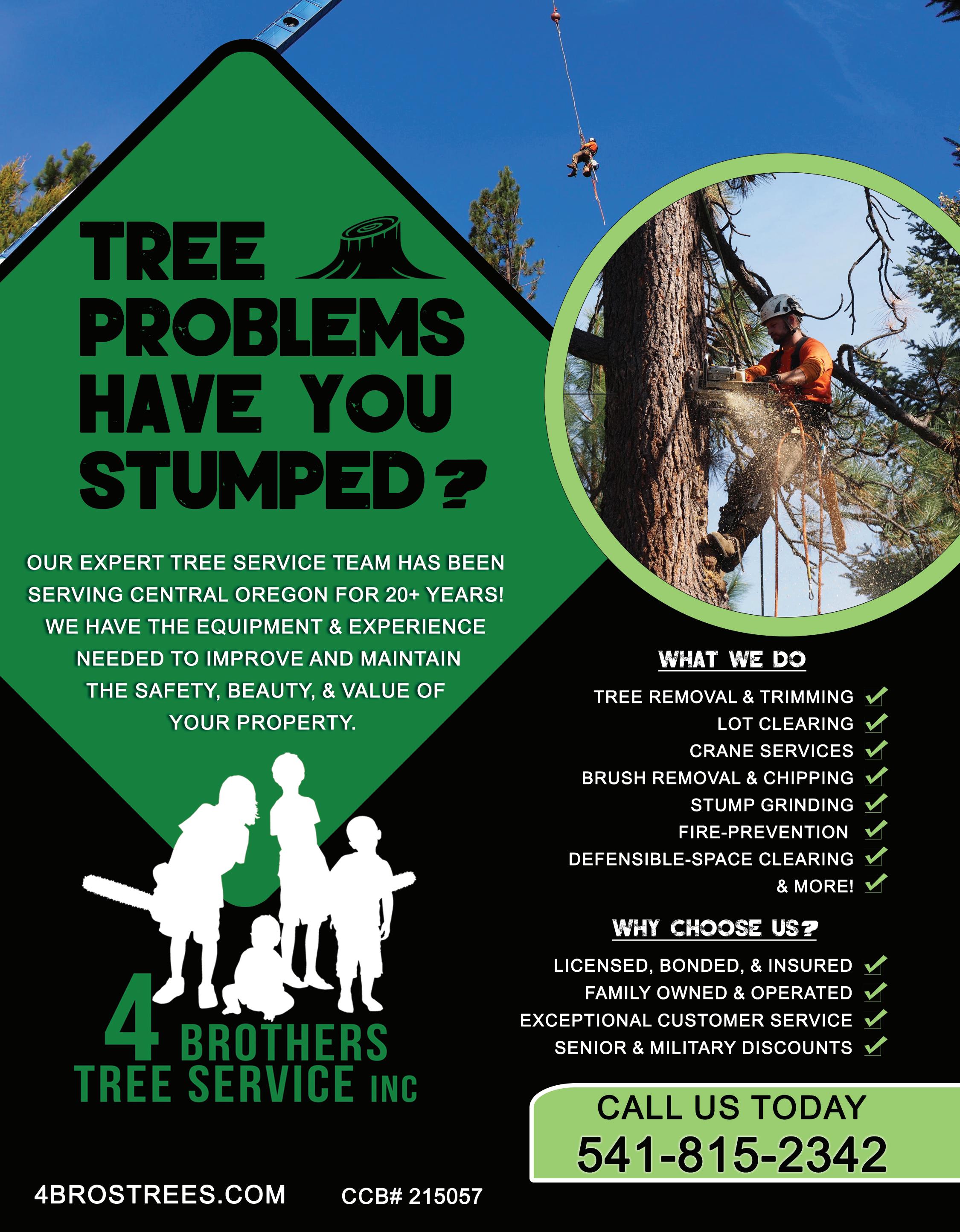
"I just love the instruments and their sound. That’s my thing. I live with about 20 instruments. They’re part of my family and they’re always happy."
— Doug Williams
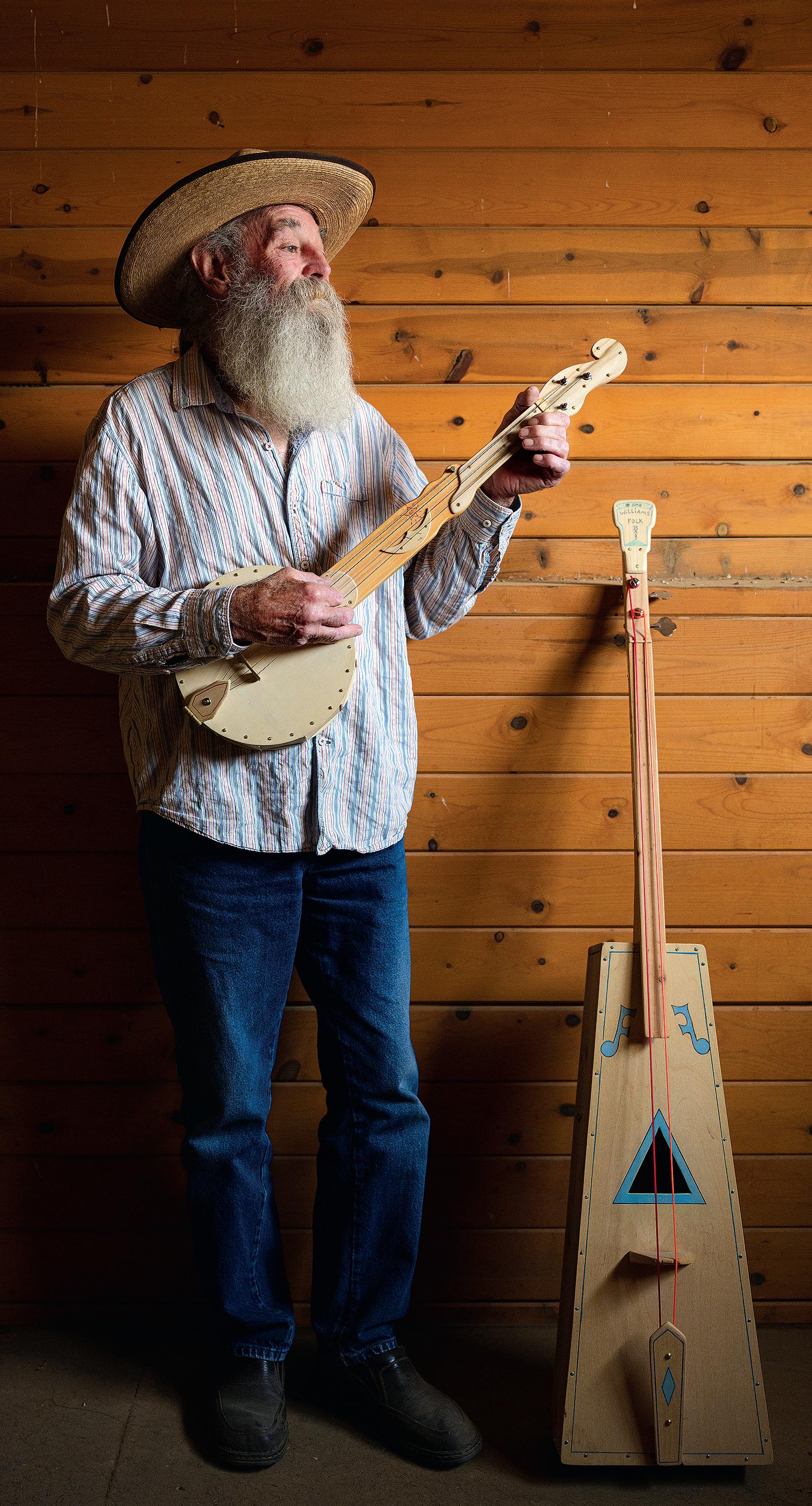
A few years ago, William’s friend Artie Davis showed him a video of musician Seasick Steve shredding on a bluesy, one-string, electric washboard slide guitar put together with duct tape and disparate parts. His friend told him he thought Williams could do something like that too.
Williams is a self-taught luthier who refers to himself as a folk artist. He knows his homemade things may look a bit funky, but he appreciates that they’re different. They’ve got that sound he likes. At first, he was surprised that they sounded just like the original instruments he plays.
A methodical perfectionist, Williams started making instruments from simple designs to more complicated ones.
“I started real simple with a little one-string guitar,” he said. “I slowly built up to deciding what instruments I wanted to build. I only use hand tools, no power tools and do my work at a small table in front of my home. For a banjo I start with the body which is the round part called the pot. I put that all together with different little pieces.
“It’s a really slow process, but I’m in no hurry,” he said with chuckle. “After the pot is done, I build the neck, then attach that to the body. Then I put a hole in the side of the hoop and do all the inside construction. Then I put the back on it. After that I make the bridge and put the tuners on. I have a box full of instrument parts, and I pull from that.”
Williams recalled, “I grew up on a ranch in Nevada and my dad played banjo and mandolin. So, I was introduced to it at about 4 years old. It just really stuck with me and then when I got to being a teenager in Sisters, we had little bands. I just love the instruments and their sound. That’s my thing. I grew up with dad and the neighbors playing, so it’s in my blood. I live with about 20 instruments. They’re part of my family and they’re always happy.”
Looking at his handmade instruments, it’s obvious that Williams is a visual artist too. His instruments are
decorated with colored pencil drawings, borders and carved embellishments. The sound holes on his mandolin and guitar are cut in long angular shapes that set the designs apart. His twostringed base has red and orange strings made from weed trimmer line. It has a pleasing, deep low sound that’s akin to the traditional instruments.
“I get materials from discarded wood from construction sites. I get a lot from Ace Hardware in Sisters or the lumberyard for the tops and backs of the instruments. I use real thin plywood, they’re crude but very playable. I’m building instruments that are meant to be played, not just hung on the wall. I use poplar or what’s available. I prefer woods with a medium hardness, so it works good for fingerboards. For the tops I use the thinnest material I can get because that’s where all your sound’s coming from. The back and sides are just your sound blocks that push the sound up through the sound hole. You want the top as limber as
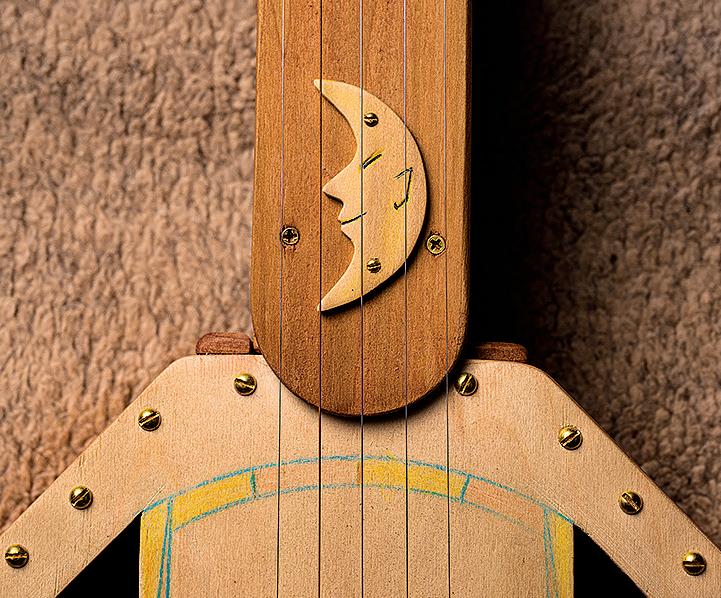
possible,” he explained.
“I just take my time and go really slow so I can figure out how each part is going to work together. I don’t hurry and rush through it. I’ve learned to take my time and do it right. Sometimes I draw out on paper and write down measurements like the scale length, so I have things to go on.”
Williams enjoys working on all kinds of art projects. He got interested in art at Sisters High School where he took a few years of art classes. He says he goes through creative phases going from colored pencil drawings for a few months then drops back into instrument making. You can see
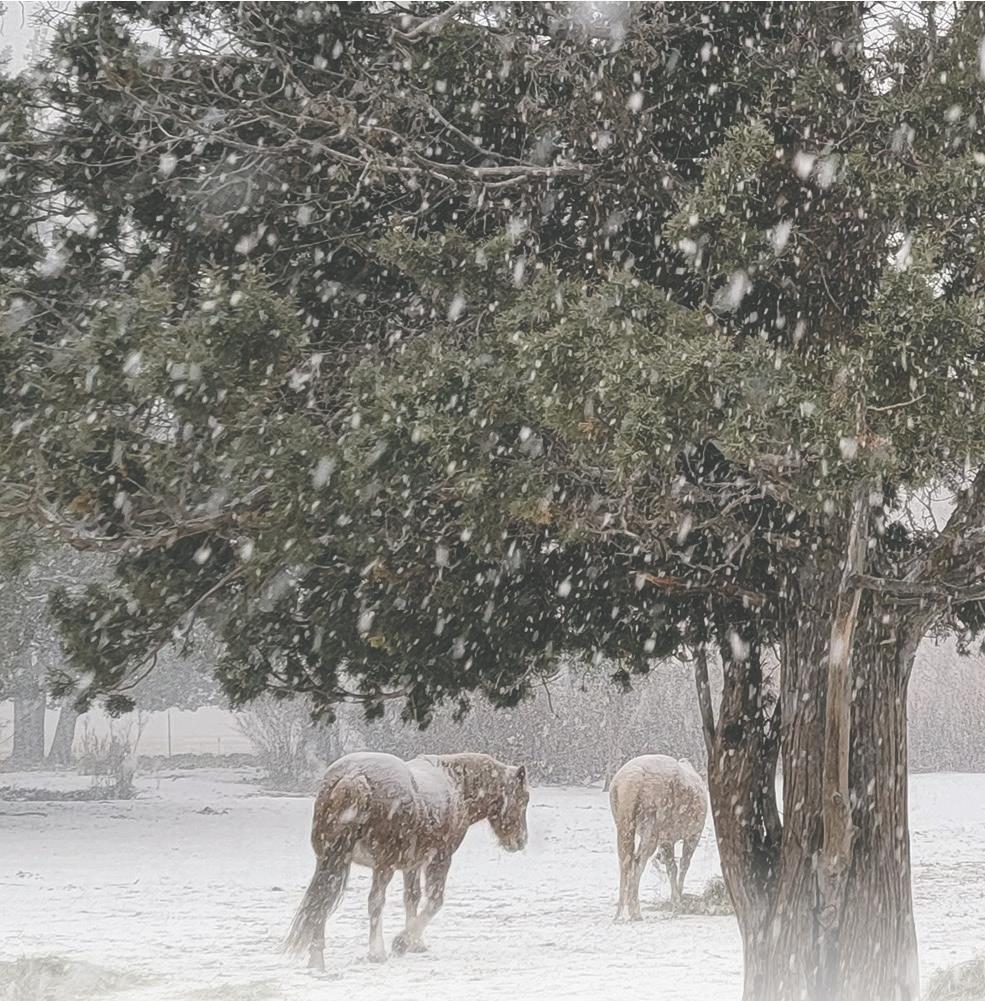




the crossover between the two with wooden moons and stars and gently curved decorations on the instruments. He laughs saying he likes a little bling. Then there’s the question of what to do with all the art and instruments he’s made.
“I’ve made a few Native Americanstyle flutes and have given some away,” Williams said. “I don’t know where I want these instruments to go. I do know I’d like to take them into the schools and show them handmade instruments and how they sound. I did that years ago and would like to do it again.”
Williams lives a quiet life — except for the sound of folk, blues, and his own tunes wafting into the desert sky. He doesn’t create to make money. It’s about the process, getting images and words down on paper or revealed through a lovingly carved coyote or mandolin. Art and music define him as a man, at peace and living his life exactly as he likes.
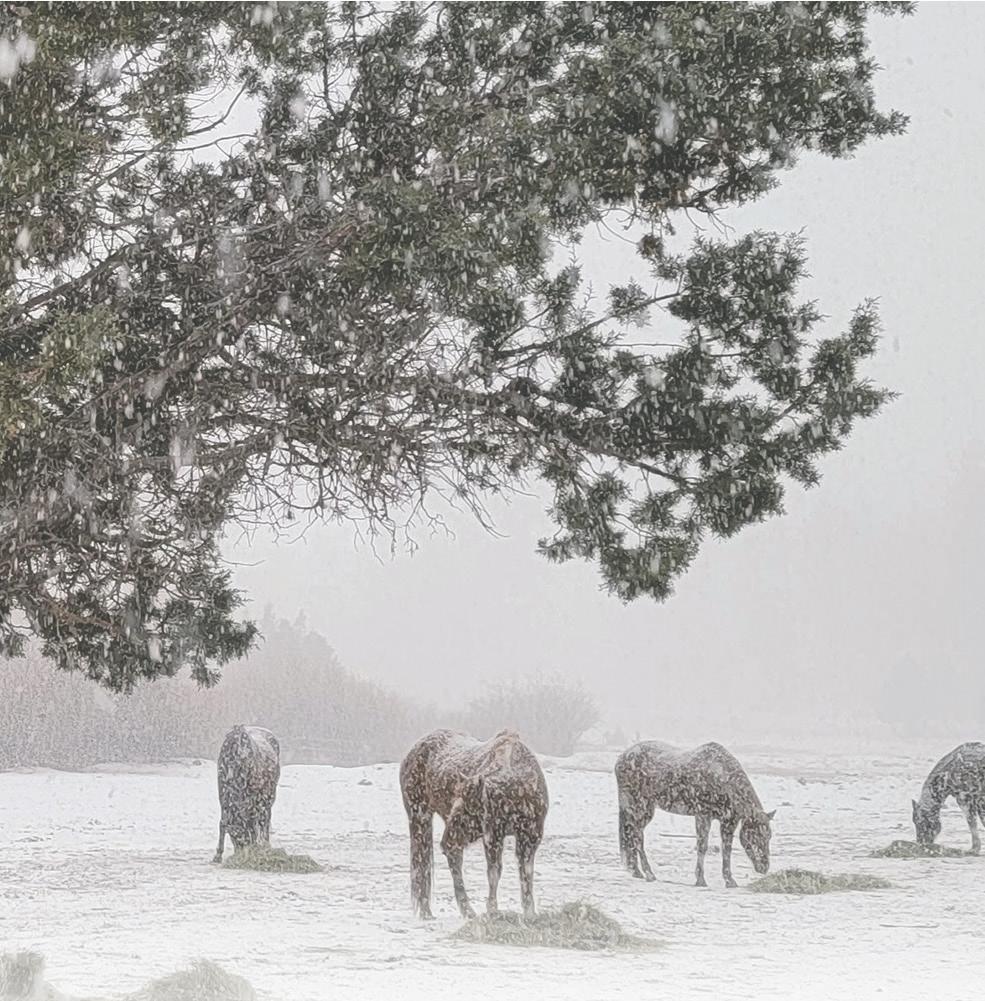

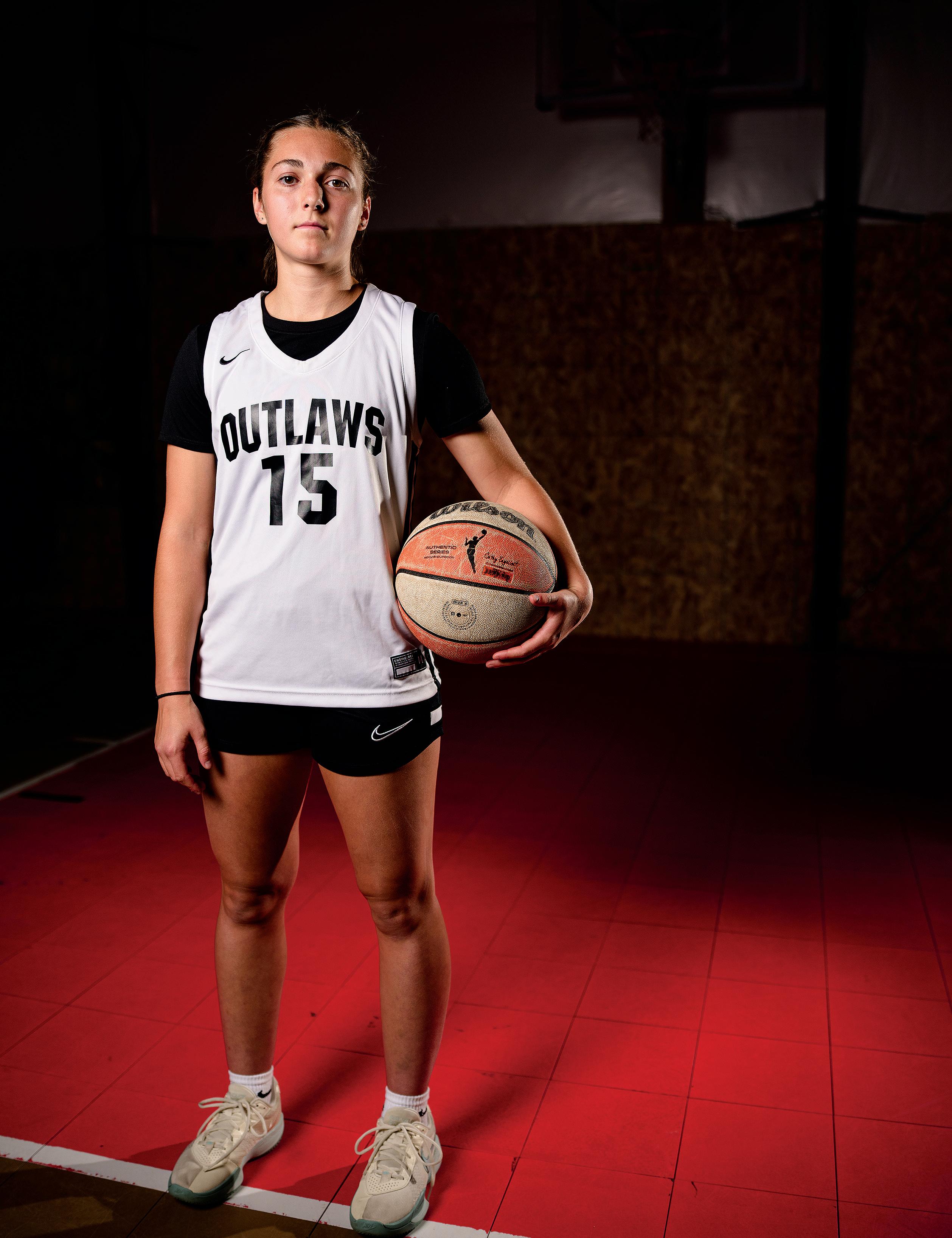
BY MATT VAN SLYKE
PHOTOS BY CODY RHEAULT
Inside a shop building on her family’s property in Sisters, Audrey Corcoran works up a sweat. A weight gym takes up one wall, and a loft overlooks a homemade half-court. Her father, Chris, built it in 2023 as Audrey was entering high school.
“She shoots a lot. If we can’t find her in the house, we know where she’s at,” said Chris.
The reigning 3A Mountain Valley Conference Player of the Year outscored every other girl in the league as a 15-year-old sophomore.
“She would drive right in; maybe she’d make it, maybe she wouldn’t, but she’d always knock down the free throws. She has this little 10-foot jumper in her pull-up game, and she’s got springs, too. She’ll jump right over them and just put the ball right in. She probably scored 10-plus a game on that little jump shot, and then she’ll hit some threes, too,” Chris said.

Yet her third-place Sisters High School team failed to make the playoffs last year. Her goal is to hang a banner in the school gym. The Lady Outlaws basketball team has never won a league title.
She has a shot. Audrey broke Sisters’ single-game scoring record last December, putting up 37 points vs. 2A Gervais. She’s twice earned second-team all-league honors.
Preparing for her third season at Sisters High School, Audrey plays club basketball with Bend-based Three Peaks Performance, which travels for tournaments in Oregon’s capital city.
“In the fall, they mainly focus on skills. The tournaments are good. It’s definitely different levels of competition than Sisters, playing in Salem with all the six-foot girls. They are just huge,” said Audrey, who stands 5’4” “on a good day” and is working on using her body to create space.
“In my middle school years, I would go in, there would be a tall girl, and I’d fade away, trying to make a jump shot. Going into taller people has been a struggle but it’s definitely good to work on.”
She attributes her on-court success to increased court awareness, quickness, and “shiftiness — just knowing how to handle the ball and get around those taller people; being smart. You don’t necessarily have to be tall, just quick with your movements.”
Audrey Corcoran knows speed.
During her freshman year, she helped Sisters bring home a fourth-place trophy from the 2024 Oregon School Activities Association (OSAA) Track and Field Championships. Corcoran placed in four events: second in the 100 meters and 4x400-meter relay, third in the 200, and eighth in the long jump. She also flashed the leather on the softball field that spring, impressing
her coach and teammates.
“I’ve just always played it. I love it. I used to play volleyball, too, but decided to focus more on basketball in high school,” she said.
It was a good choice. The point guard averaged 17.2 points per game last year on top of 3.6 assists and 4.3 steals per game.
Her first year, the Lady Outlaws pushed past the first round of the OSAA state playoffs for the first time.
“Being that scared freshman, I was less of a leader and more of that quiet person on the court, doing whatever she could do. I became a little bit more of a leader my sophomore year — not necessarily by being loud but showing by example and listening to the coach. I think it was a big improvement, skilland ability-wise.”

Chris and Audrey’s new coach, Kevin Cotner, say her work ethic stands out.
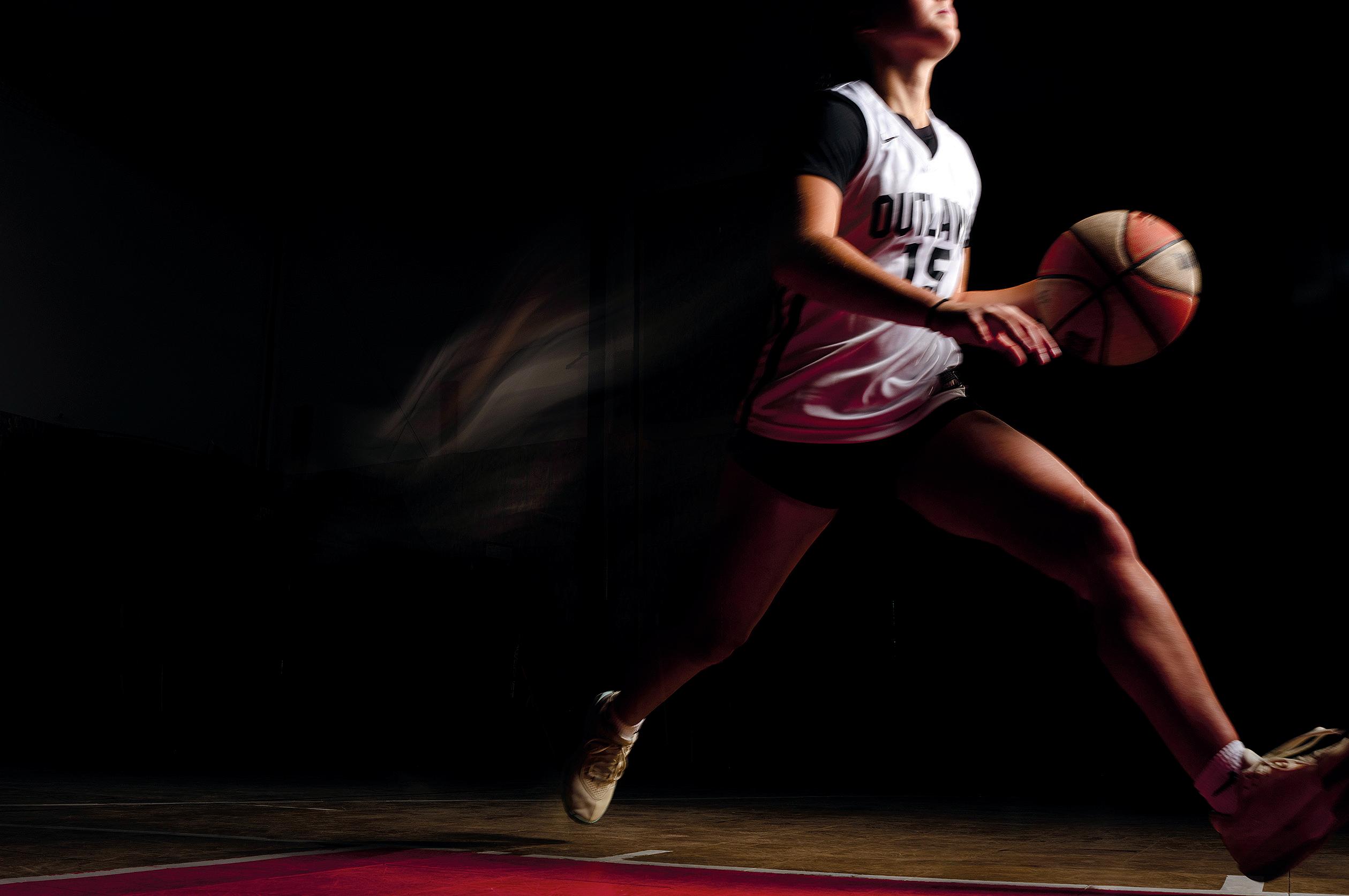
“I came in as a scared freshman — scared of the seniors. They ended up being the people who brought me in and welcomed me. The whole team was just really good by the end of the season. We found our groove.”
— Audrey Corcoran
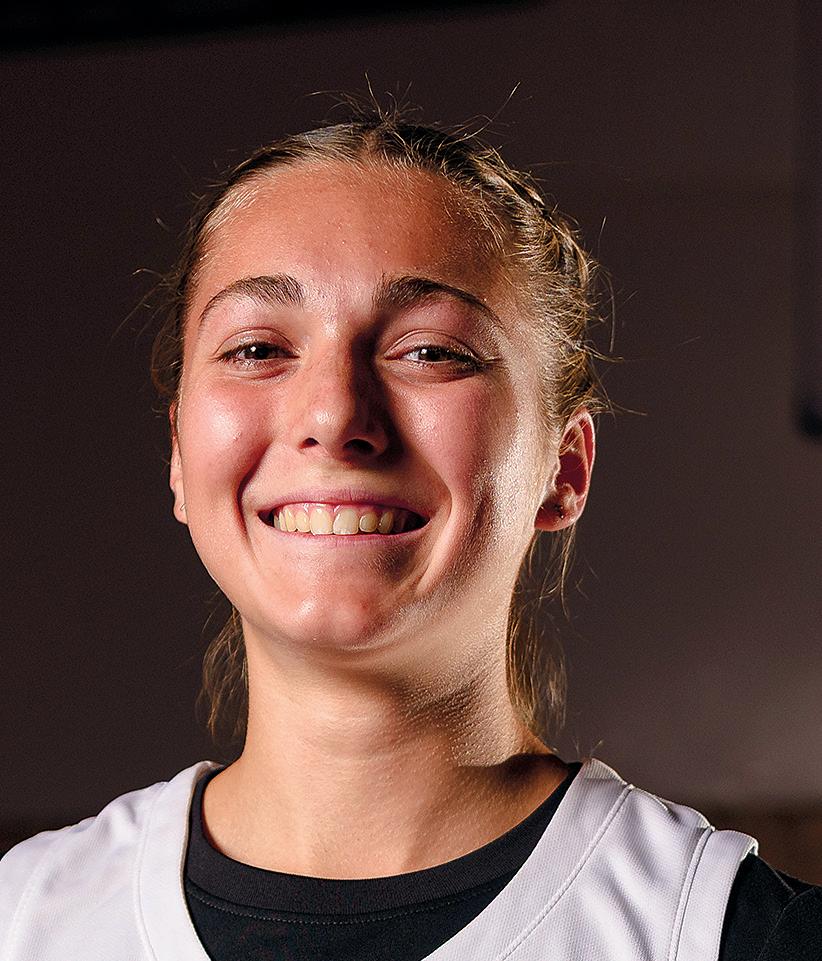
“Audrey is a special player who has a very rare combination of speed and basketball-specific skills. She is able to beat people off the dribble with her speed and is an exceptional finisher at the basket as well,” said Cotner. “Audrey is an elite scorer, but I think the thing that excites me the most is her tenacity on defense. She wants to defend the length of the court and that is rare. For our team to continue to improve, we have to become a better defensive team, and when your best scorer is also one of your best defenders, it makes you a competitive team night in and night out.”
A quiet 4.0 student who leads by example, Audrey plans to step up this season: show a little more emotion, speak up, and help direct her teammates on the court as her opponents come up with new ways to try to slow her down.
“Audrey was a little under the radar last year and most teams played her straight-up defensively. I would expect to see more junk defense combinations and defensive traps geared at keeping the ball away from her as much as possible,” Cotner said. “She is the player that everyone will focus on this year, and I know that she will rise to the challenge.”
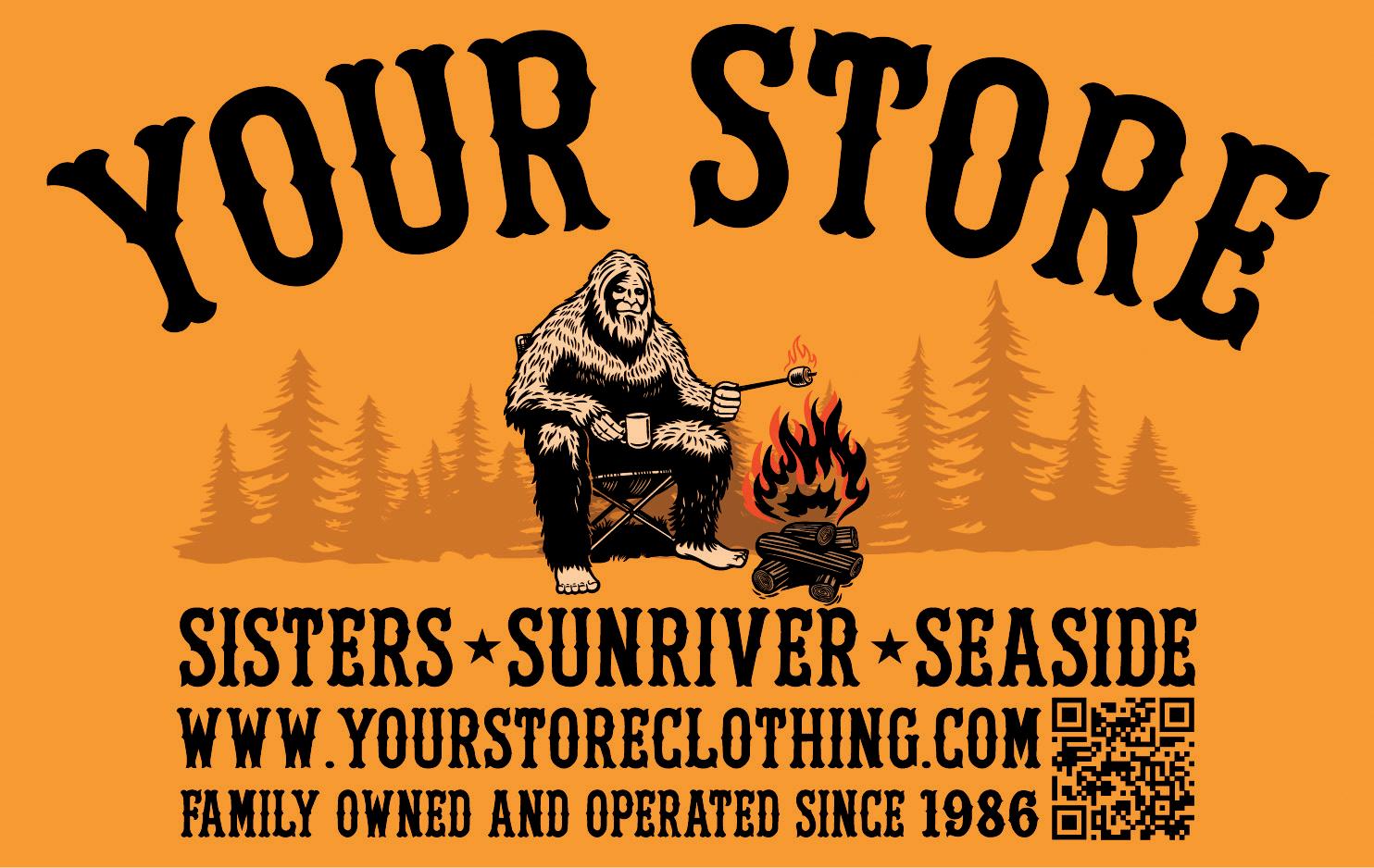
OPEN YEAR-ROUND

From our local farms to your table, bringing Central Oregon together with fresh, quality produce! follow us online @tumalofarmstand or visit our website at tumalofarmstand.com 541-948-7118 • 19885 7th Street, downtown Tumalo
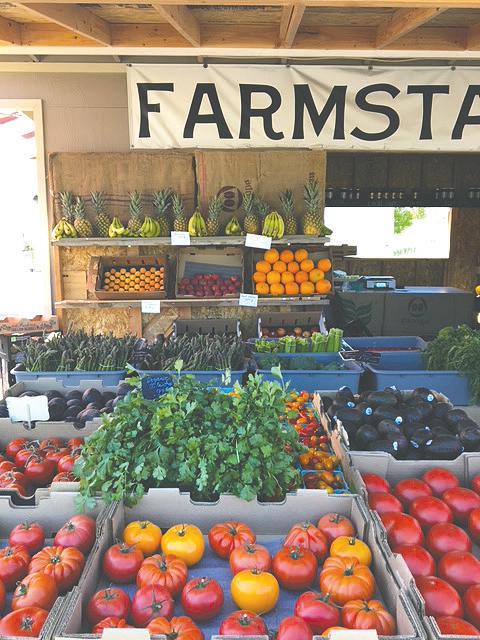
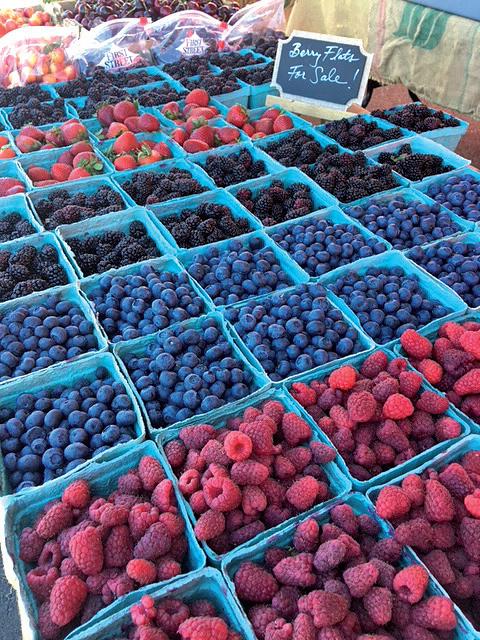
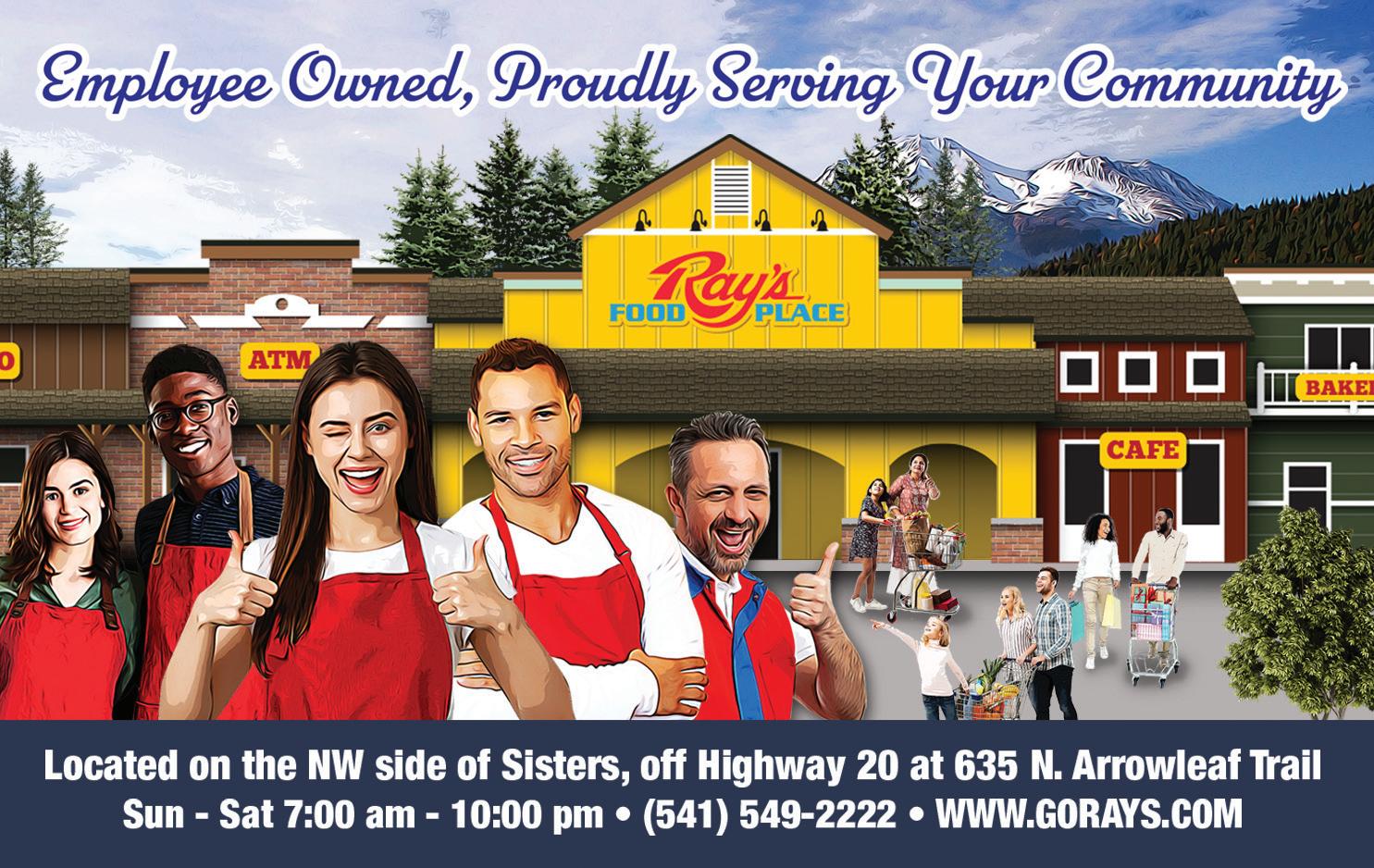
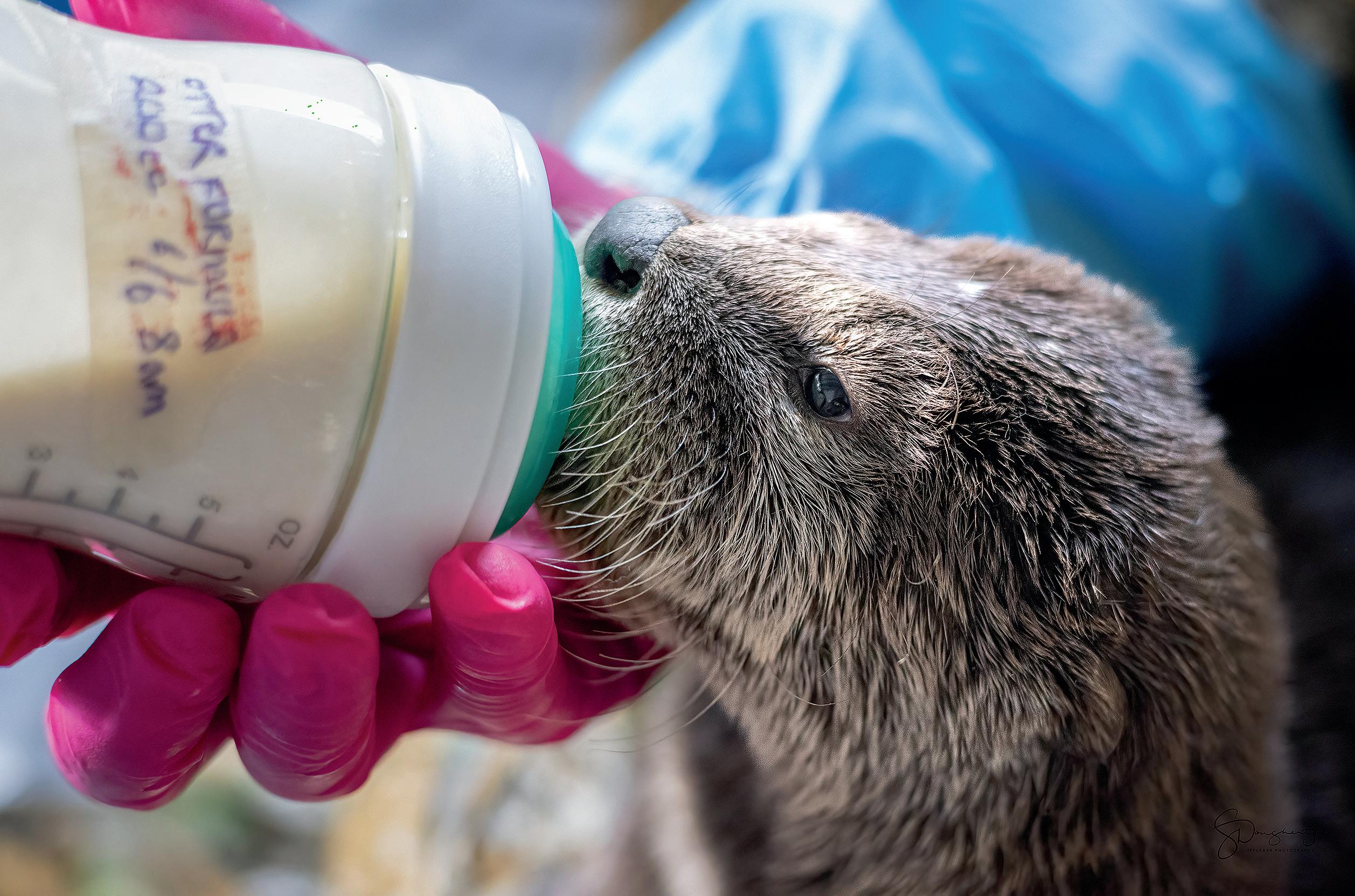
BY KATY YODER | PHOTOS PROVIDED
Oregon’s licensed wildlife rehabilitators care for sick, injured, and truly orphaned wildlife. They are permitted by Oregon Department of Fish and Wildlife (ODFW) and are governed by a set of rules. In Central Oregon there are four permitted organizations: Think Wild in Bend, Wildside Rehabilitation in Redmond, Kimberly Farasyn in Terrebonne, and Native Bird Care in Sisters. All of the organizations are privately run and rely on donations from donors and grantors.
Sandy McCurdy-Thompson is the sole rehabber for Wildside Rehabilitation in Redmond. She receives animals from around Central Oregon. She began saving animals when she was 11 years old and was later mentored by rehabilitation specialists Jane Stevens and Tracy Leonhardy. McCurdy-Thompson specializes in squirrels, and rabbits like desert hares, black tailed jackrabbits, and several types of cottontail rabbits.
McCurdy-Thompson can be reached at 541-610-9962 regarding rabbit and squirrel emergencies or questions.
“We encourage the public to watch for sick rabbits which we can try to rehabilitate. Ninety-eight percent of bunny intakes are cat or dog caught. I encourage people to use ‘Catios,’ and have control of their animals, especially until baby rabbit nests are dispersed."
She asks people to keep domestic animals under control because they aren’t natural predators for native animals.
"I’ve heard from people after we talked about curtailing their cat’s activities, and that their wildlife was saved the next year.”
Elise Wolf started Native Bird Care in Sisters 15 years ago. The facility has grown over the years and has saved countless songbirds and waterfowl.
Sadly, the Native Bird Care facility was almost destroyed by the Flat Fire. Wolf says she hopes to reopen in a new capacity by this winter. Timing
will depend on funding and acquiring lost equipment. One of her aviaries was spared as well as a few pools used for waterbirds. She’s already seen many birds she released in years past, returning to her feed stations and water sources. That’s giving her the hope and energy to rebuild and come back stronger than ever. Wolf is welcoming donations to help her rebuild. Her website nativebirdcare.org is the best way to donate and keep up with her progress.
Think Wild opened their doors in Bend in 2020. Executive Director Sally Compton says founders first focused on what was missing in wildlife rehabilitation in Central Oregon.
“We identified gaps and areas where there was a need in Central Oregon, where more support for the community and wildlife and wildlife habitat was needed. There was a lack of centralized resource support and a hotline for wildlife resource support. There wasn’t
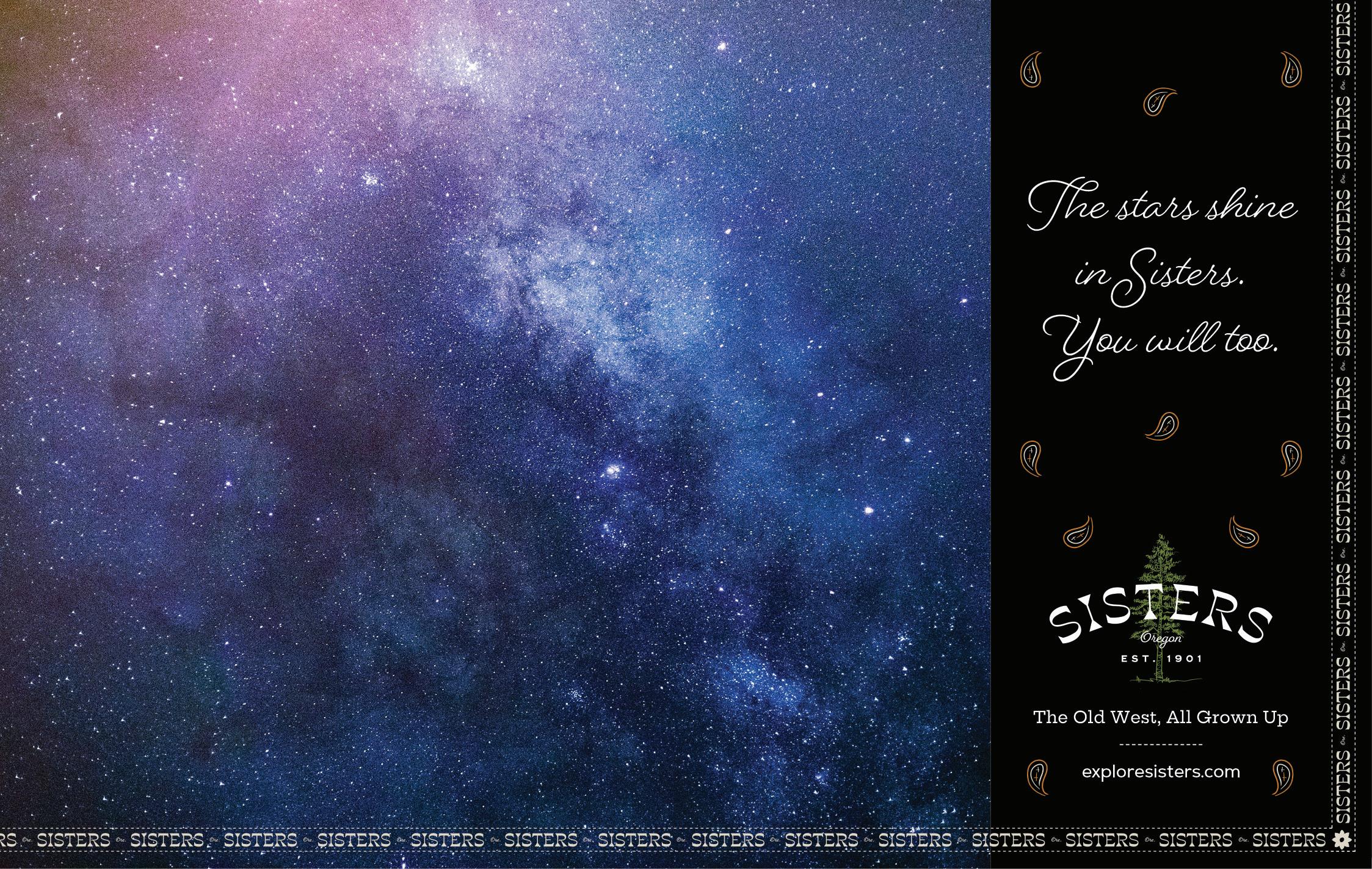


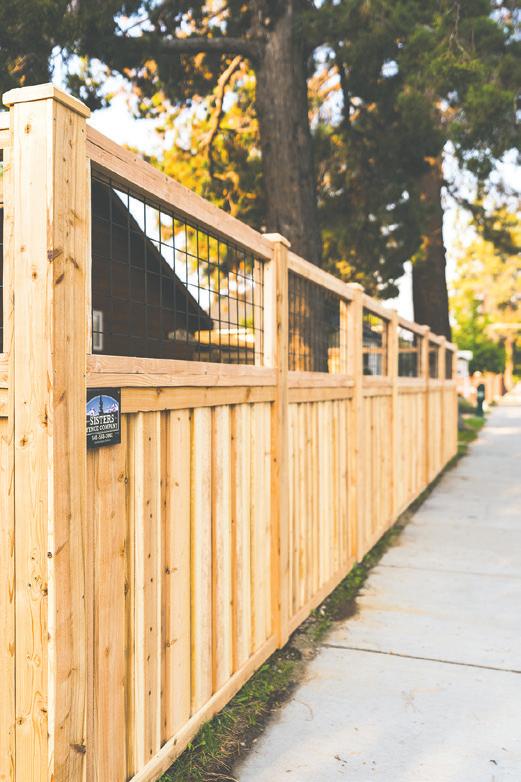


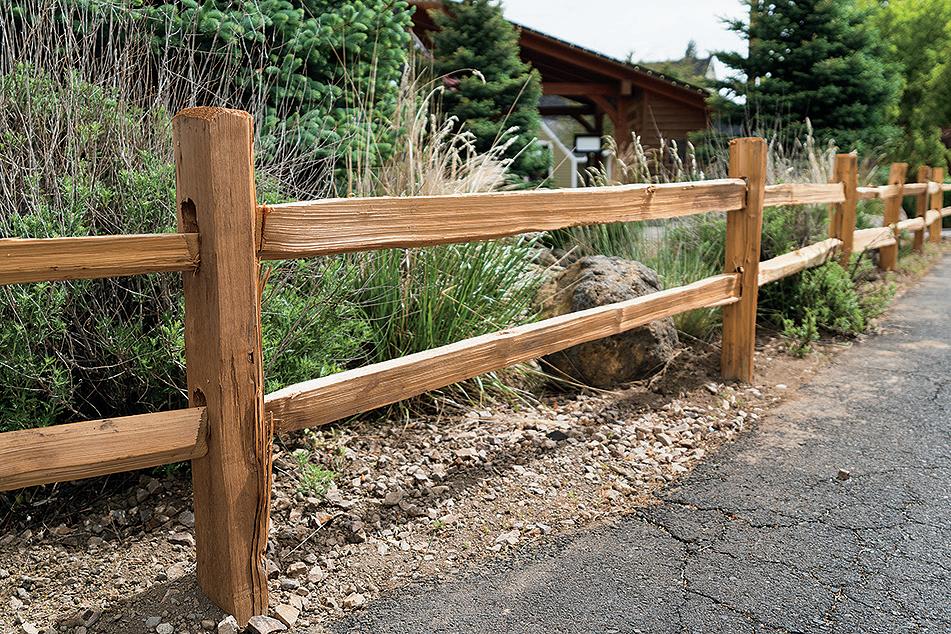









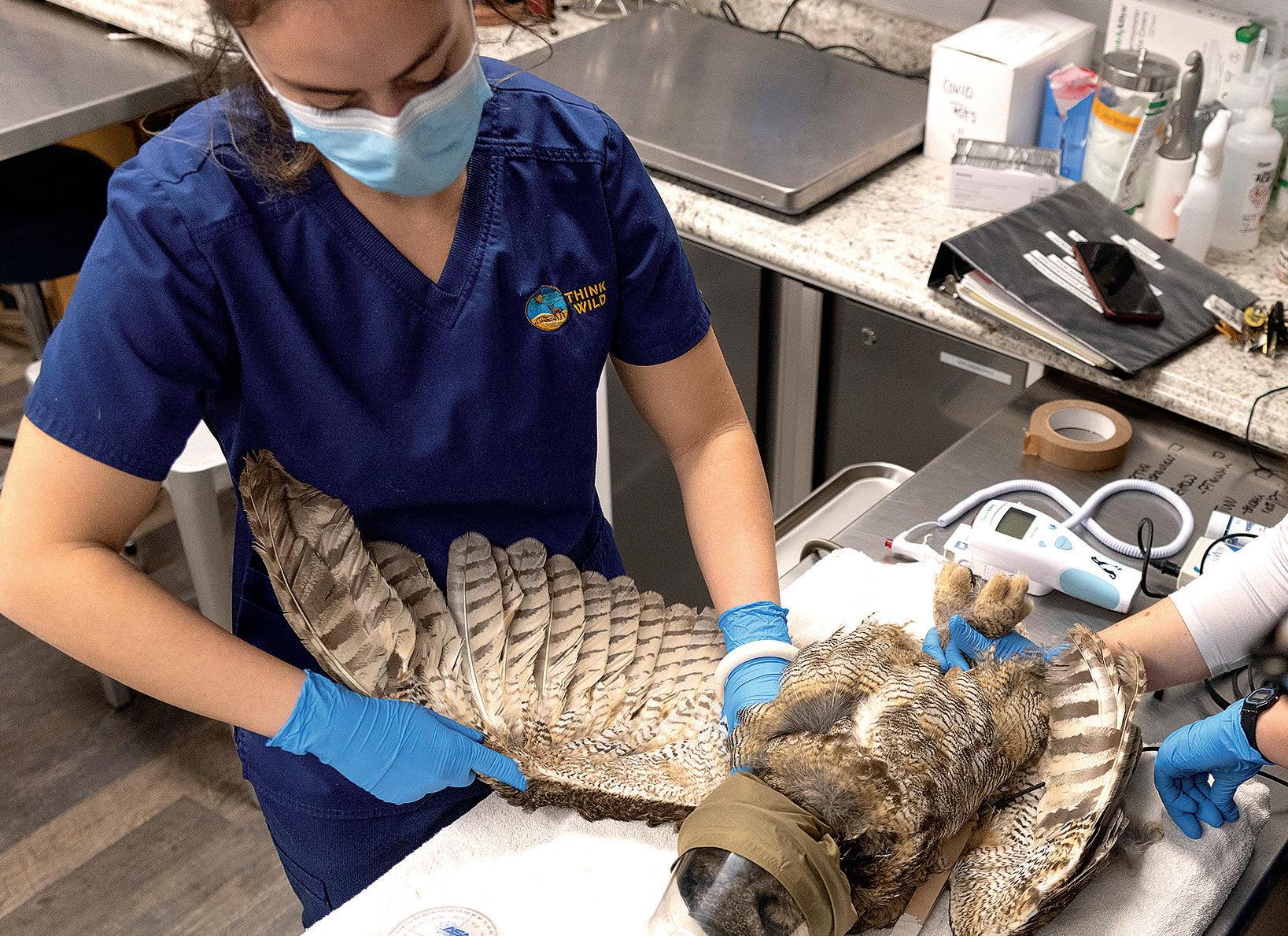
a public center for injured or orphaned wildlife; or a number to call besides ODFW. A lot of the other resources and organizations were at capacity. We’re open seven days a week from 8 a.m.–5 p.m. Our goal is to expand that to 24/7. We’re there to answer any kind of wildlife questions including conflicts. When we opened, a lot of the private rehabilitators who specialized in certain species in Central Oregon were getting ready for retirement or specializing even more. There was no one-size-fits-all facility for all native wildlife with a veterinarian on staff, and a place where people could volunteer and get involved.”
As they started taking in patients and talking to people, Think Wild staff found there wasn’t a resource for humane wildlife assistance services, and a lack of services for beaver co-existence or services. Think Wild can also reunite or renest animals, so they don’t have to come into a hospital in the first place.
“Our goal is to help animals stay in the wild,” said Compton. “We provide that one-on-one guidance so there’s the best outcome for the animal. Until funding comes through, there’s no after-hours or weekend resource for wildlife emergencies. We’re a privately funded nonprofit relying on funding
from community donations. We don’t have a 24/7 hotline yet. That won’t happen until we get the donations to do that. Funding for wildlife facilities is hard to come by. We run on a shoestring budget.”
Rehabbers offer advice for those who find young animals:
Don’t assume an animal is orphaned because it’s alone. Animal parents will leave their babies for hours at a time to forage. So, coming across a fawn and seeing it’s still there a few hours later doesn’t mean it’s been orphaned.
“We don’t want to take in a baby if we’re not sure,” said Compton. “Keep your distance and keep an eye on it without disturbing it or its parents. If it’s more than 24 hours, then it might mean it needs help. We can care for a baby and bring them back where we found them and reunite them with their parents. Sometimes we’ll play their call and attract the parents. The myth that if you touch a baby animal the parents will abandon them is not true. But for your own safety don’t touch baby animals with bare hands.”
Compton hopes that people learn how to live with wildlife rather than against them. Understanding an animal’s behavior patterns can avoid the necessity for relocation or extermination. Think Wild offers one-on-one
consultations where a wildlife services coordinator who’s a licensed wildlife control operator will come out to your property, do an evaluation and then provide recommendations based on the situation. Often, he comes out for one issue and ends up helping with other issues which might mean installing bat boxes, etc. Wildlife emergencies are varied and have levels of intensity based on what people can tolerate. Spring and Fall are the busy times for Think Wild’s wildlife expert. If your issue is urgent, Compton says he can often accommodate that.
“One of our biggest priorities is wildlife education. Since our property is used for very sensitive wildlife rehabilitation most of our education programming is off-site in rural areas. We invite teachers to get in touch with us about classes. We want it to be accessible to all people and offer them in both English and Spanish. If you’re new to Central Oregon, you might not know what it’s like living so close to wildlife or how to handle interactions when you’re out recreating,” said Compton. Think Wild’s website is: www.thinkwildco.org.
ODFW’s Wildlife Division web page clearly states if you see a sick or injured animal call the ODFW, Oregon State Police (OSP), or a licensed wildlife rehabilitator before picking up or moving any wildlife. Removing or “capturing” wildlife from the wild and keeping it in captivity without a permit is against the law. It is considered a Class A misdemeanor, punishable by up to one year in jail and a $6,250 fine. It’s good to know there are licensed professionals who can assist the public when an intervention is needed.
All of the organizations in this story rely on donations to do their work. Volunteers are also an integral part of keeping the doors open and services available for the public. Donations can be made on their websites. Helpful information is available about the animals they care for and services they provide.

BY SUE STAFFORD
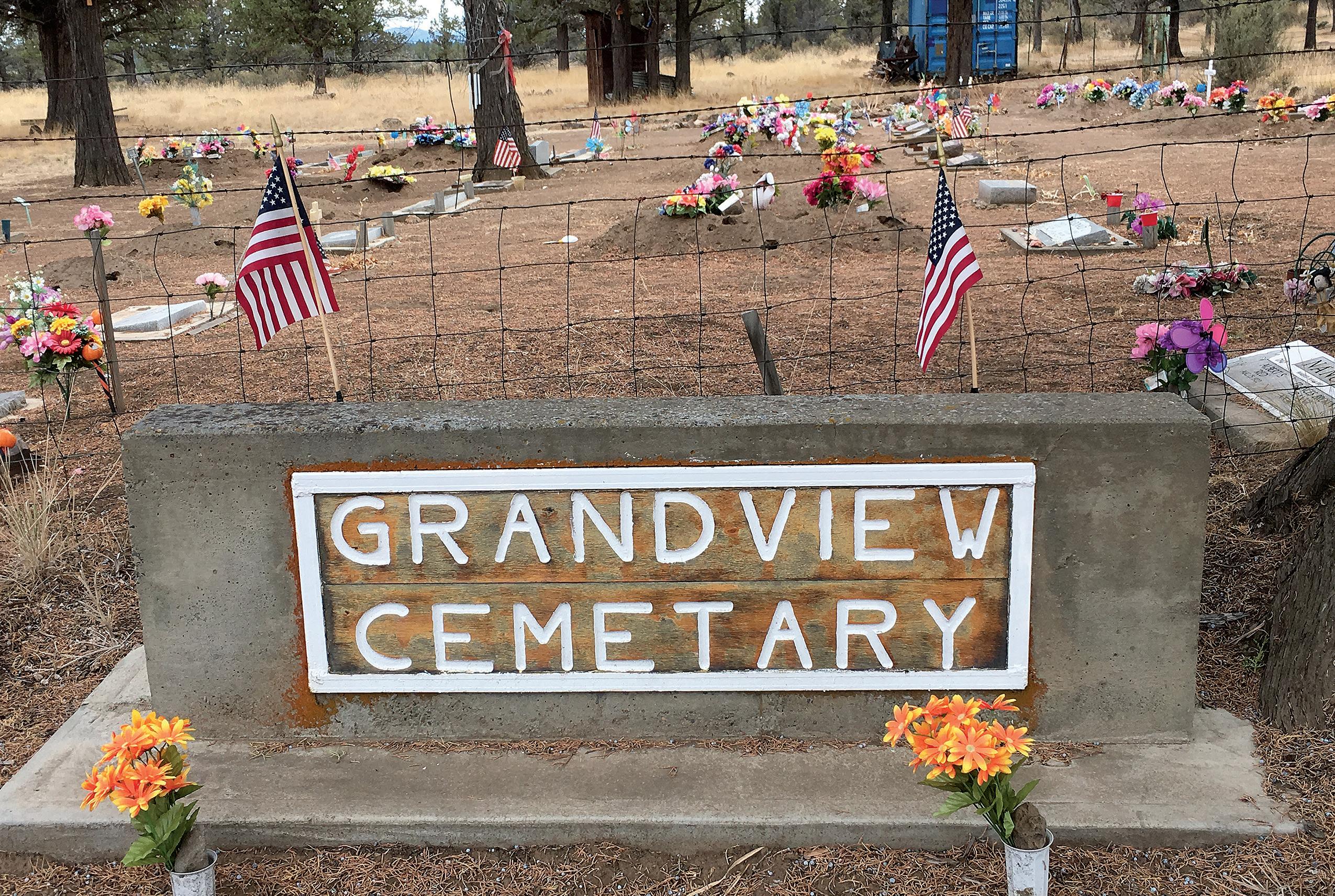
There is a place in Jefferson County that has an interesting, if brief, history. Only a cemetery remains of the former towns of Grandview and Geneva, farming communities in the first third of the 20th century. Wandering among the grave markers, hearing only the sighing of the wind and the resident birds chirping, an appreciation develops for the diligent homesteaders who arrived full of hope and worked the arid soil of the Lower Desert until nature won. Families lie in clustered graves, adorned with plastic flowers and memorabilia.
The area known as the Central Oregon Lower Desert, located northeast of Sisters, is a semi-arid plain with sagebrush and juniper, that lies west and southwest of Lake Billy Chinook, at an elevation of 2,800-2,900 feet. The deep canyons of the Deschutes and Metolius rivers form the east and north edges of the Lower Desert respectively. Sheets of old lava in the flat north
half of the Lower Desert are covered with thin, rocky soils. The rolling land of the southern half is made up of a variety of volcanic layers covered with thicker soils. Just recently, it was the ignition point of the 23,000+ acre Flat Fire that raced 14 miles southwest toward Sisters, being contained two miles from town.
To encourage settlement of the Great Plains and the West, in 1862 Congress enacted the Homestead Act which approved the sale of 160-acre parcels of Federal land to individuals.
For many, the land was free. Between 1900 and 1930, homesteaders from the East and Midwest, responding to ads by the railroads and eastern newspaper stories, eagerly arrived to claim their 160-acres of land.
Two towns grew up among the farms. Grandview lay to the north with a post office, school with 70 students at its peak, general store, and blacksmith shop. Its name was chosen
because of the spectacular views of the Cascade Mountains to the west. Geneva lay about five miles south of Grandview where J. T. Monical located the post office on his property. Mrs. Monical’s given name, Geneva, was selected as the name for the new post office. In 1914, Geneva also had its own school district and schoolhouse, which were partially financed by the nearby pine forests. At its peak, 40 students attended the Geneva school, which was also used for church services.
In the late 1800s, before the homesteaders arrived, hearty cattlemen and sheepherders established ranches and livestock grazing on big meadows of waist-high bunch grasses on the Lower Desert and beyond. David and Margaret Allingham settled to the west along the Metolius with cattle and horses. In 1885, Bill and Matty Edmonson settled in Grandview. They had the first threshing machine in the area, brought over the old Santiam Road from Salem.
They and the other settlers had to endure the “double winter” of 188687 which brought five-foot snows and minus-50-degree temperatures, wiping out livestock, game animals, and settlers who weren’t prepared for the hostile conditions.
Following that harsh winter, Nick Lambert moved to the Lower Desert and built a cabin in Allen Canyon (today’s Big Canyon), about two miles south of the Metolius River. He was fortunate to have seven springs on his property and the Big Canyon with its steep walls provided a natural corral for Lambert to establish his cattle ranch.
In 1902, The Black Butte Land and Livestock Company was formed by Lambert and two other ranchers and included five ranches in the Grandview and Sisters area. Those ranches included the Nye Ranch at Grandview, Squaw Flat Ranch at Geneva, and Swamp Ranch at Black Butte. Over the following 30 years, Lambert’s herd grew, and his land holdings reached
4,500 acres. There was also some mineral exploration and limited mining at the time on the Lower Desert.
In the 20th century, nature’s influence on the Lower Desert was quixotic, with a period of deceptively plentiful rainfall, followed by drought, and a cyclonic windstorm in 1931. In 1907, Bend recorded rainfall of 25.75 inches and crops thrived in the volcanic, well-watered soil. The Madras newspaper reported that settlers planted orchards, and grew bountiful crops of potatoes, onions, and other vegetables, as well as rye, wheat, clover, and alfalfa. Some farmers took their produce to Sisters to sell. With the advent of World War I, Central Oregon supplied wheat, cattle, horses, wool, and other war supplies to England, via the new Panama Canal, returning higher commodity prices to Central Oregon farmers.
In 1911, two new bridges over the Crooked and Deschutes rivers provided access to Grandview from the
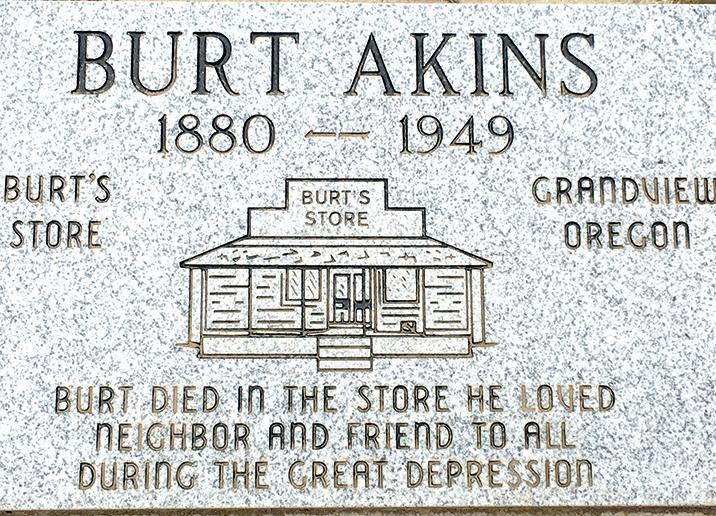
growing towns of Madras, Culver, and Metolius. Located along Graham Road near Grandview were Burt Akin’s general store, the grange hall, and the new Grandview school, to which children came from many miles on foot and horseback.
According to Guy Swanson in the Jefferson County Historical Society’s The Agate, “By 1920, the school was filled to overflowing with children during the week and on Sunday the school served as a church for a circuit minister…Grandview chartered its first grange in 1912 and every other Saturday there was a grange meeting followed by a dance. The Kalamas were musicians from Warm Springs who

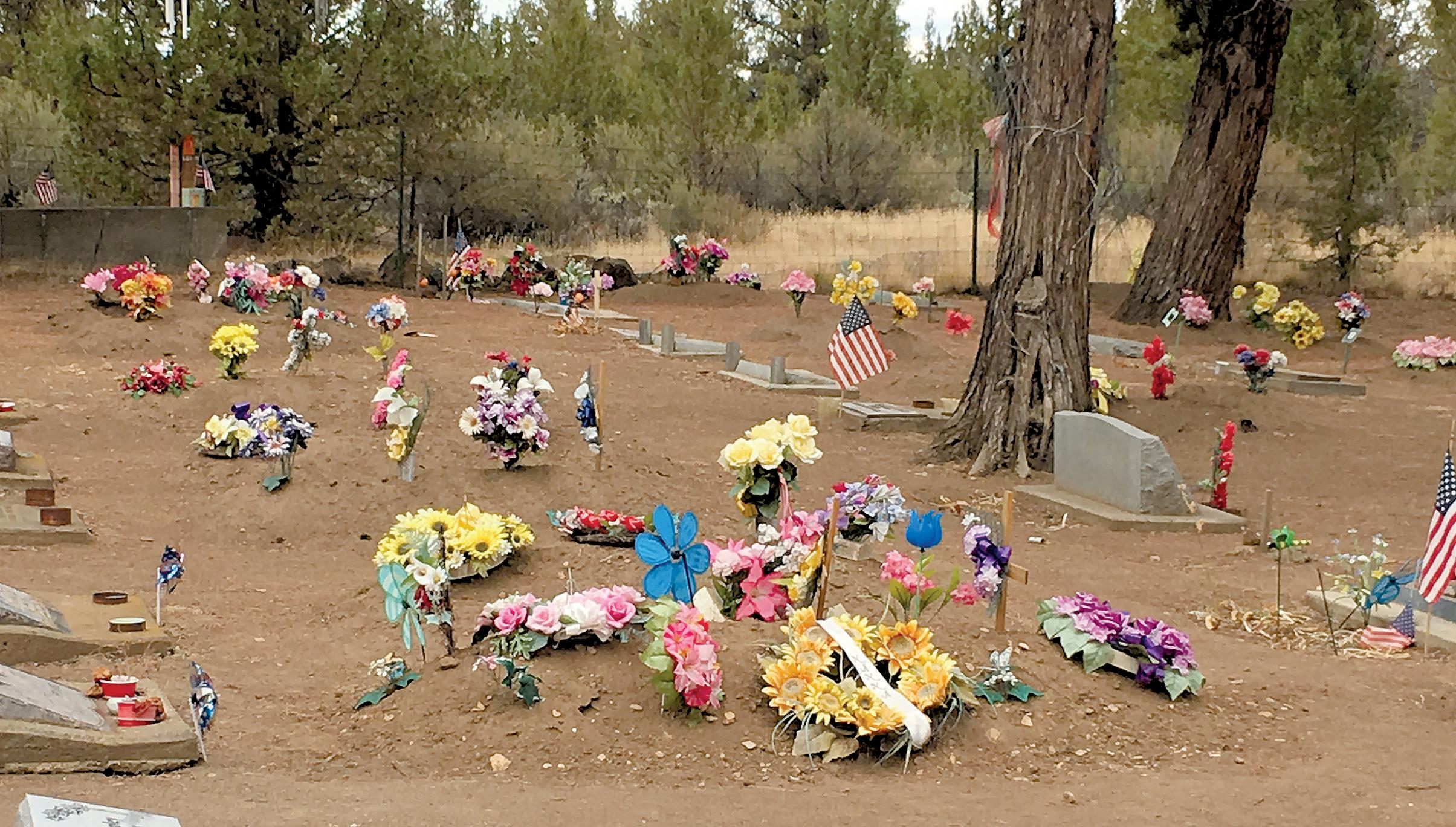
sometimes played until daybreak on Sunday morning. The grange was the center of Grandview social life, with pie and box socials, card playing, and a gathering place for children and adults alike.”
Beginning around 1913, the trend in precipitation was downward, just as large numbers of homesteaders were hearing about a promised water project that would draw water from Suttle Lake and deliver it via canal to the Lower Desert. Despite voter approval of a $680,000 bond in 1915, the project never materialized. Postwar commodity prices dropped and no underwriter for the bond could be found. By 1923, the project’s water rights were lost.
The period of 1917-1931 was very dry with infrequent brief wet spells, making water the determining factor in every farmer’s success or failure. Hand-dug wells could yield water at less than 20 feet but dried up by May of each year. In 1919, one resident installed a ram pump to bring water up from the Deschutes River and sold it to the farmers for 50 cents a barrel. Some farmers went down the grade to the river themselves and loaded their water barrels, an hours-long task.
No matter how hard the farmers worked to tame the land, nature won out. Stands of pine trees that had served as windbreaks were cut down for fuel. The bunch grass endemic to the Lower Desert was no longer able to hold the dirt in
place. The sustained drought left the soil easily moved and blown, and nature was about to end the homesteading era on the Lower Desert.
Through the 1920s and 1930s, with increased drought, crop failures, and the Great Depression, many homesteaders were forced into bankruptcy. By 1934, fewer than 50 families remained on the Lower Desert out of the nearly 700 who had called it home over the three previous decades.
On April 22, 1931, as farmers and families went about their day, a windstorm formed in Western Montana before crossing the panhandle of Idaho, blowing through Central Washington, and over the Warm Springs Reservation north of the Lower Desert. As it crossed southeast over the Metolius River and gained speed, it frighteningly assumed a circular pattern to become a cyclone. It first blew in one direction, stopped for several hours, and resumed blowing in the other direction.
The vulnerability of the farmland was because of the drought and poor farming practices. The area was left devastated after more than 24 hours of the cyclone. More than 10 million board feet of timber were lost in the Metolius River area. Crop damage was extensive, fall grain was blown out, and topsoil in the fields had been swept away. Old growth pines were uprooted and thrown around. Cabins in the Metolius Valley were flattened.
Ships at sea recorded in their logs seeing the red dust that blew from the Lower Desert out over the ocean.
According to Swanson in The Agate , “The wind stripped away years of soil to expose the bones of a broken land, leaving just enough dirt to hold the rocks together. Sagebrush grew and provided shade for the prickly juniper seedlings that took over….The land lay fallow, and the juniper trees thrived.”
For over 30 years, the abandoned houses, outbuildings, and barns stood like sentries in the ghost towns of Grandview and Geneva. The Grandview school and the grange hall, where children and adults had gathered to learn and socialize, were silent. Weathering, time, and souvenir hunters stripped the towns. The final demise of the Grandview school came when it was set on fire by vandals. Unfortunately, now the sole reminder of the communities and the lives of their inhabitants is the Grandview Cemetery, where family stories are reflected on the tombstones.

Sources bibliography:
Hatton, Raymond R.: Oregon’s Sisters Country, Bend, OR: Geographical Books, 1996 Many Hands, Jefferson County Reminiscences, Portland, OR: Binford and Mort, 1957, 1998
The Madras Pioneer Swanson, Guy R.: A History of Grandview Oregon, The Agate, Jefferson County Historical Society, N.S. 18, 8

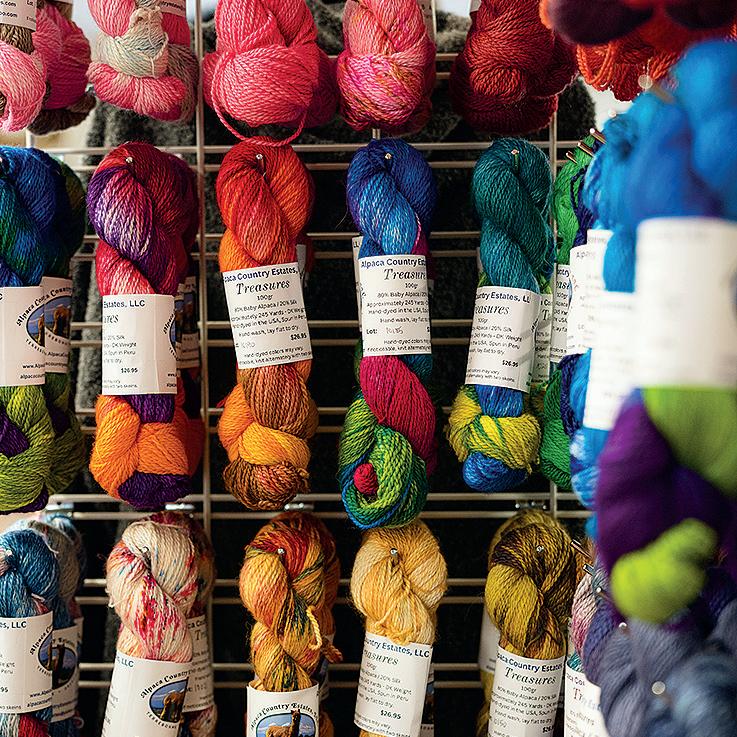
BY BILL BARTLETT | PHOTOS BY CODY RHEAULT
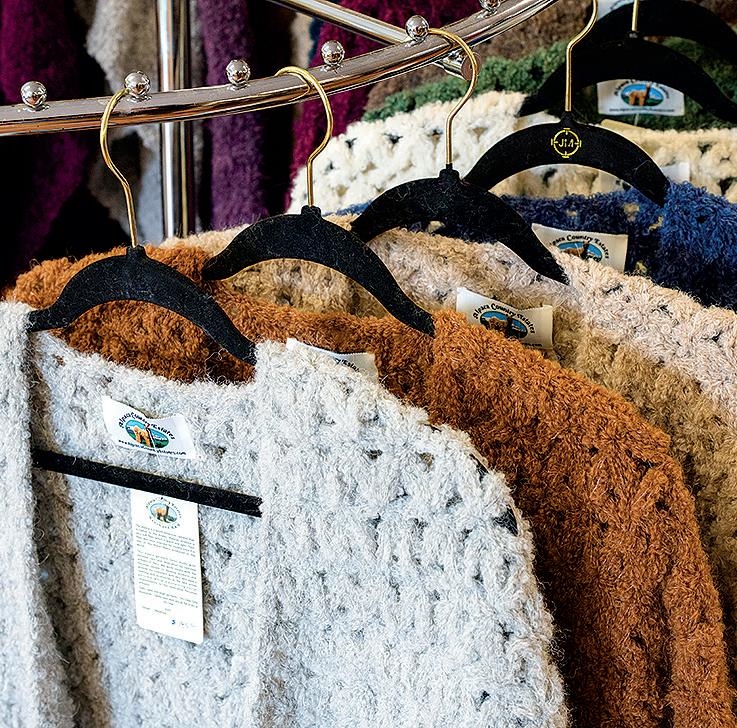
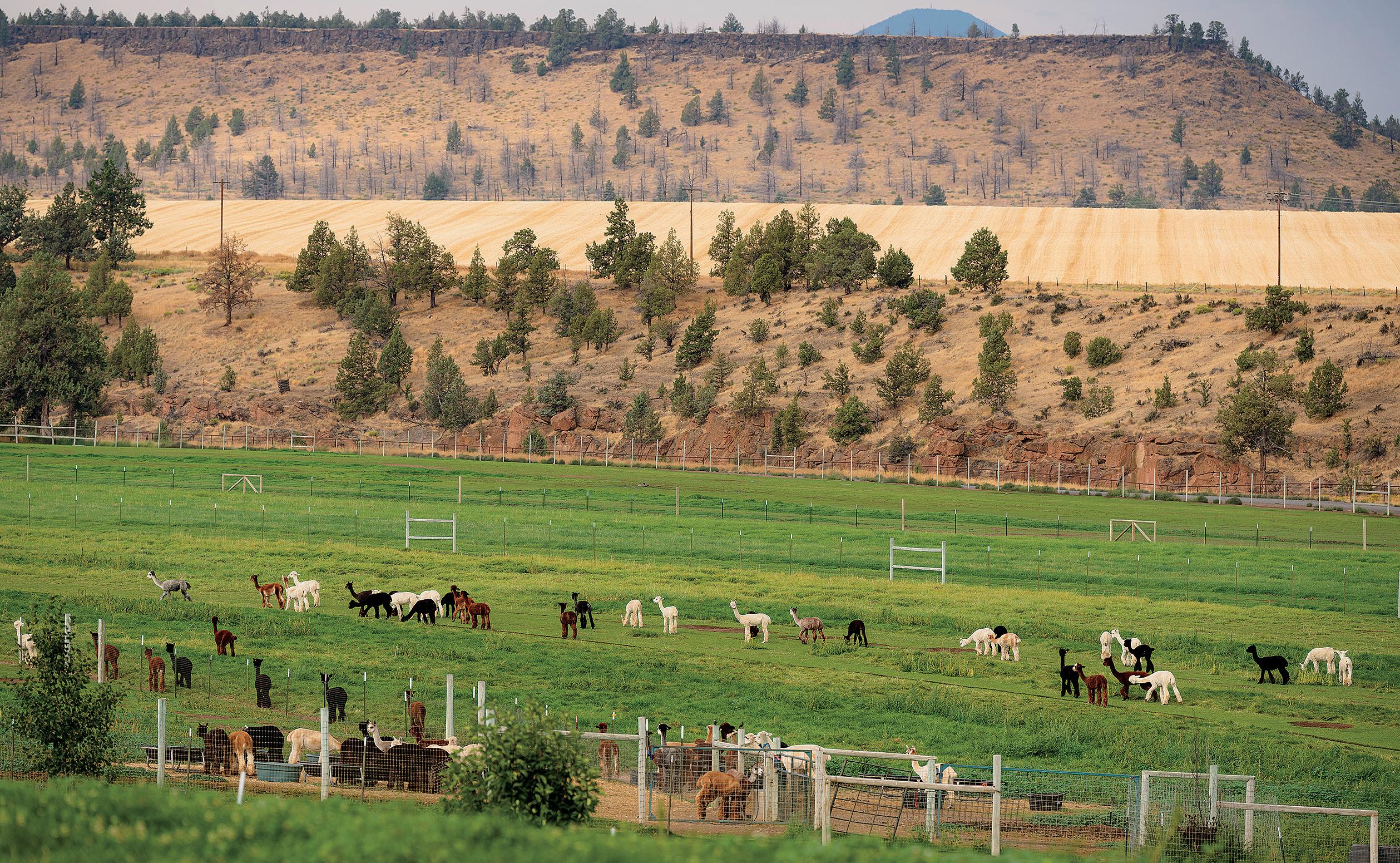
Central Oregon is home to more than 2,000 alpacas. Alpacas are highly sociable, gentle, and curious. They are the smallest members of the camel family, on average three feet high at the shoulder and four to seven feet long.
Alpacas never spit at or bite humans (unless they’ve been abused) which makes them instant favorites of parents. Children are instantly drawn to their whimsical, crimped faces and their adorably docile and friendly personalities.
You can make a whole day visiting alpaca ranches where you can get up close and personal, petting, feeding, and “chatting” or walking with them. Alpacas make a gentle humming noise when happy.
No less than 1,000 are happily nestled on Buckhorn Road in Terrebonne, seemingly the Alpaca capitol of Central Oregon. Alpaca Country Estates started with just six Huacaya Alpacas in 2006. The 234-acre pastured ranch is set with breathtaking views of the
Cascades. On site is a fashion design studio, artistry classroom, and boutique store. Alpaca fiber produces amazingly soft garments from head to toe — socks, gloves, mittens, vests, and hats are but a few of the many products alpacas are famous for.
Another 10-minute drive brings you to Crescent Moon Ranch, also in Terrebonne, open seven days a week. They grow their own hay on 18 acres and keep large numbers of alpacas on 24 more. If you fall in love with them on your visit, you can buy one and take it
home as they make good pets. Their boutique store is next to a 1911 historic farmhouse. Luxurious alpaca fiber is one of the rarest and most treasured natural fibers in the world. Preferred by kings and universally admired, it is quickly becoming one of the most popular garment-producing commodities on the planet.
When you’re ready to do more than just admire or pet them, you can walk with them. Not just around the barn or shed. No, the Canyon Walk that borders Smith Rock State Park offers a walk
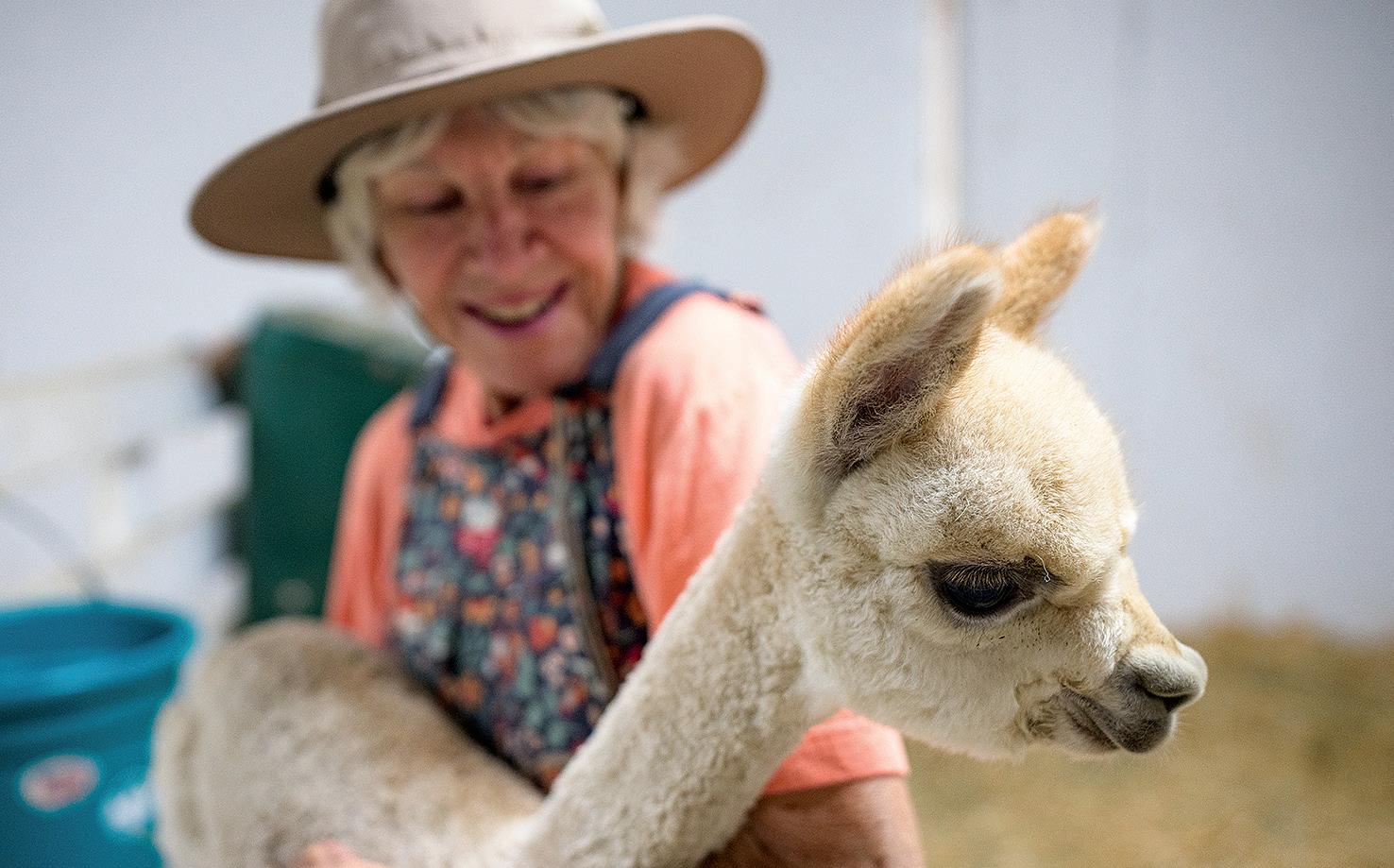

with an Alpaca to a lookout for viewing the amazing rock formations, dramatic canyon, and the Crooked River from a unique vantage point.
Offered by Smith Rock Trail Rides, their girls — Grace, Hazel, Josie or Stella — will brighten your spirit and cast away your stress. Go deeper. Try Reiki/Meditation with Alpacas.
They have partnered with Narce Rodriguez, a gifted and compassionate healer. Together they offer truly unique and calming experiences, like Reiki
healing or meditation sessions amidst the peaceful presence of alpacas, surrounded by stunning landscapes and breathtaking mountain views. The tranquil setting provides a near perfect environment to deepen your connection to nature and enhance your personal healing journey.
Narce’s and co-owner Melanie Thomas’ collaboration began through their shared love of nature and healing, as well as a serendipitous connection through their grandsons. Both kindred
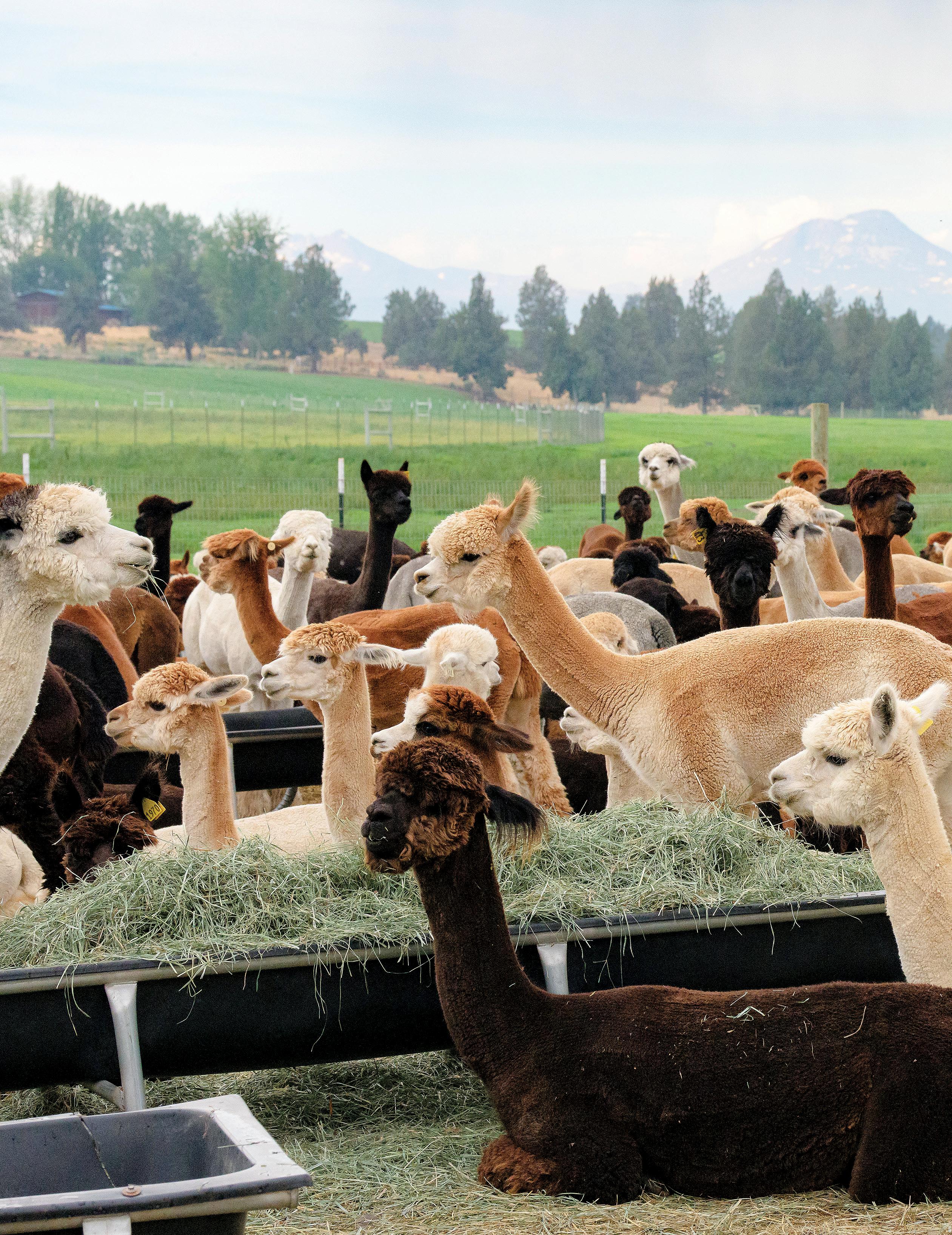
spirits, they discovered their mutual passion for Reiki, meditation, and alpacas, and have since come together to create transformative outdoor healing experiences for others.
When asked what makes Alpaca’s so special, Thomas said, “Alpacas make you smile! Just being near them and experiencing their sweet curious nature will melt your heart and dissolve any stress and anxiety.”
Picnic with alpacas for an even deeper connection to these lovable
creatures.
That’s right. At Paca Picnics you’ll eat, drink, and be merry while surrounded by a pack of friendly alpacas. Some will be just as curious about you as you are about them. Some won’t even acknowledge your existence. But the one thing guaranteed is that all of them will put smiles on your face.
The fun is all managed by the same folks who run Alpaca By Design, a premium apparel shop in downtown Sisters. Picnics happen at Flying
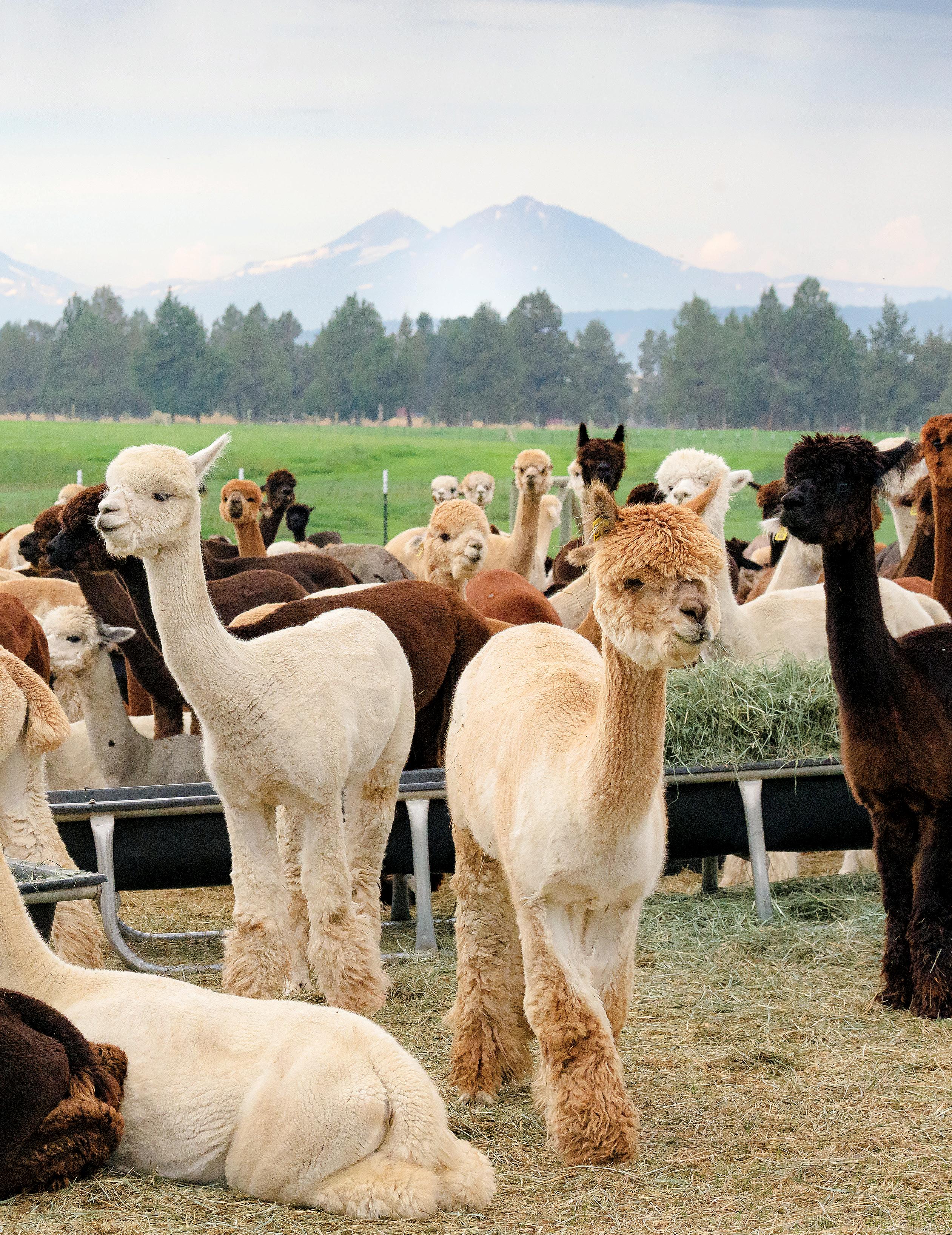
Dutchman Alpacas in Bend who provide boarding, birthing, and herd sire males for breeding both Huacaya and Suri.
Wasim Muklashy, a co-owner of Alpaca By Design, gets straight to point when talking about Alpaca appeal.
“Alpacas are irresistibly adorable. With their big, expressive eyes, gentle faces, and fluffy wool, they seem almost too cute to be real. Their natural smile adds to their charm, making them social media darlings. You can’t scroll past a photo of an alpaca without feeling a
pang of happiness, and in today’s digital age, cuteness is a powerful currency.”
There is another dozen or more alpaca hobby ranches scattered around Central Oregon, most with fewer than six. Over at the Ponderosa Best Western in Sisters, guests and town folk are treated to a few dozen roaming the large pasture running alongside busy Highway 20 delighting passing motorists.
Once you meet your first Alpaca, you’re bound to be enchanted.
BY BILL BARTLETT
BY
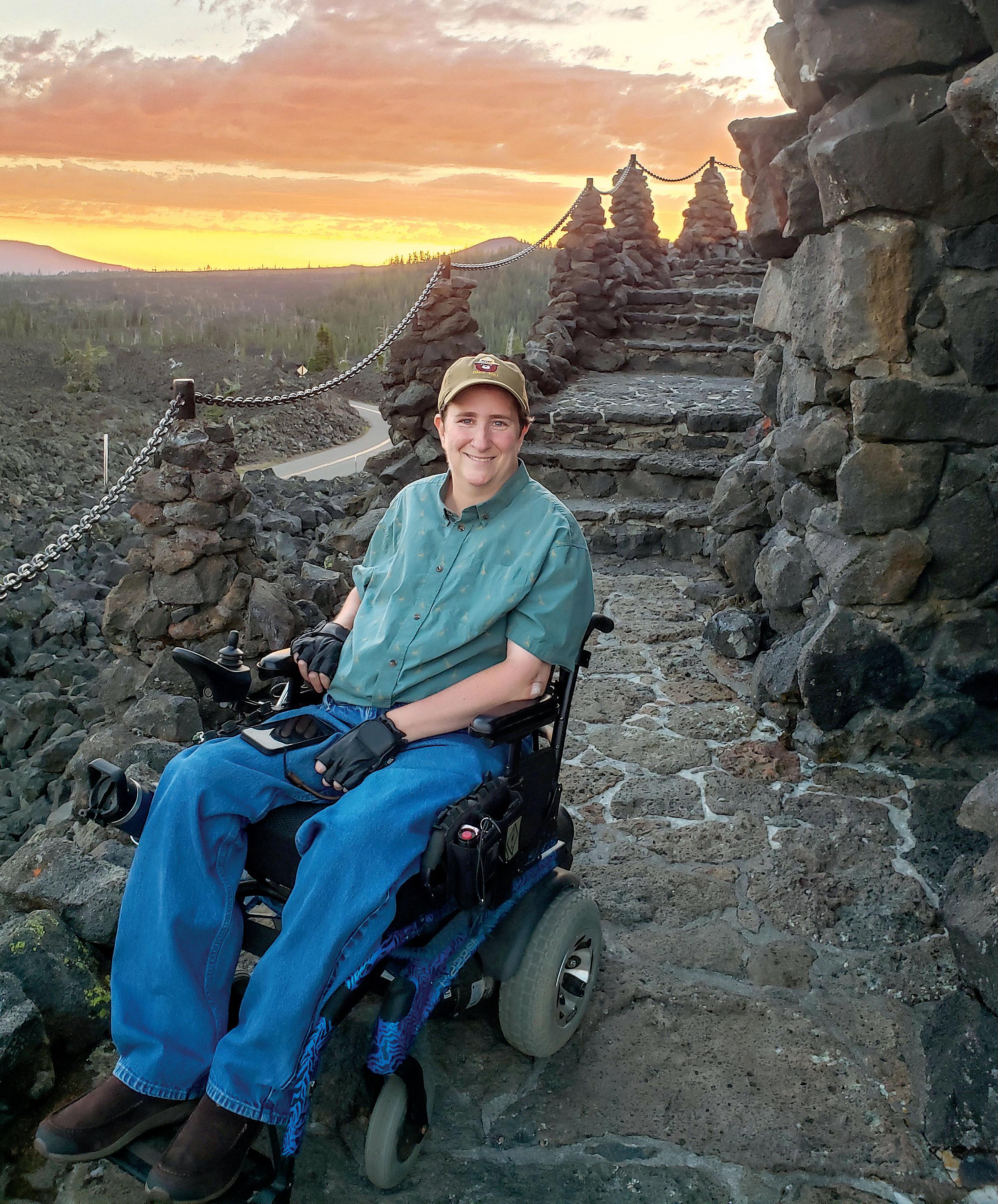
Gabrielle Richards at Dee Wright Observatory. Richards has been in a wheelchair since she was in a car accident at the age of 18. She has built a career in journalism and the law, while enjoying the adventures Central Oregon has to offer.
Being saddled to a wheeled chair does not keep Gabrielle Richards from showing up. Gabby, as she is known to nearly everybody, is an attorney in Central Oregon with an indomitable spirit and zest for life that covers a vast waterfront of advocacy.
Her life is nothing short of amazing. She wouldn’t say that, but those around her would. Her education is as diverse as her law practice. From Oklahoma State University she earned a bachelor’s degree in journalism and was editor in chief of the Daily Collegian
Six years later she garnered a master’s degree in Aeronautical Science from Embry-Riddle University. And two years following she enrolled and graduated with a J.D. (Doctor of Law) from Lewis & Clark Law School in Portland.
She arrived at The Washington Post in 1994 and for nearly seven years was a copy editor and the night sports editor.
She did all this while in a wheelchair, having suffered a severe spinal cord injury at the age of 18, in an automobile accident.
Spirit of Central Oregon asked Richards what drove her.
“When I was in rehabilitation
after my accident, I was being directed by hospital personnel to live with my mom and dad instead of return to college. There was not support from hospital personnel for me returning to college and pursuing a career,” she said.
Adding, “That support came from my family and friends. They were supportive of all my post-accident endeavors: returning to college out-of-state, pursuing internships, living on the other side of the country, and ultimately attending law school. I’ve always wanted to make my parents proud of me because I know how devastating it was for them when I became paralyzed.
“I’ve also wanted to show people that a devastating disability doesn’t render you useless or unable to contribute to society in a meaningful way. Disabled people can go to school, have jobs, and participate in their community. That is my motivation for pursuing my aspirations. I’m also very hardheaded,” she concluded with a characteristic warm smile.
Jennie Bricker, an environmental attorney in Portland, recently said of Richards: “Richards lives near Sisters and grew up in Texas, so it’s hardly surprising that she
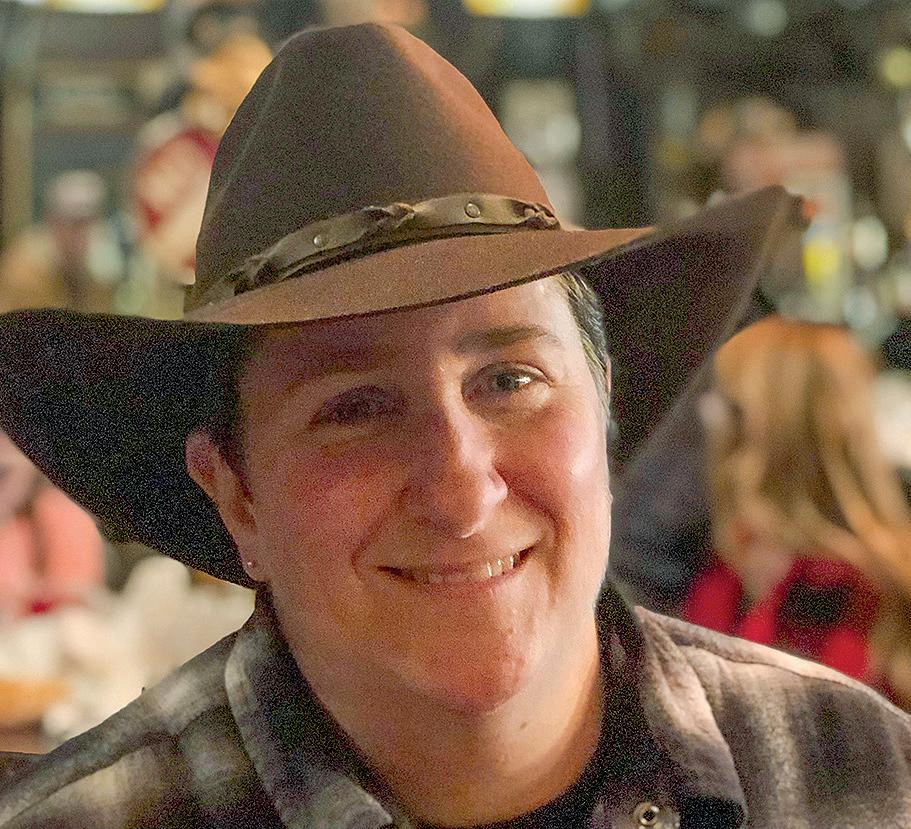
owns eight pairs of cowboy boots. In fact, she seems like someone who’d boot open a locked door without much hesitation.
“In her professional life, like other litigators, she opts for the ritual combat of the courtroom. And as with other folks who have spinal injuries and use wheelchairs, her door-kicking is metaphorical. If a door lacks an accessible push-to-open button — like most interior doors in most courthouses — she has to ask for help.”
Richards cut her law teeth with one of the country’s premier law firms, Perkins Coie LLP. But since 2015 she has been in practice with her life partner, Christie
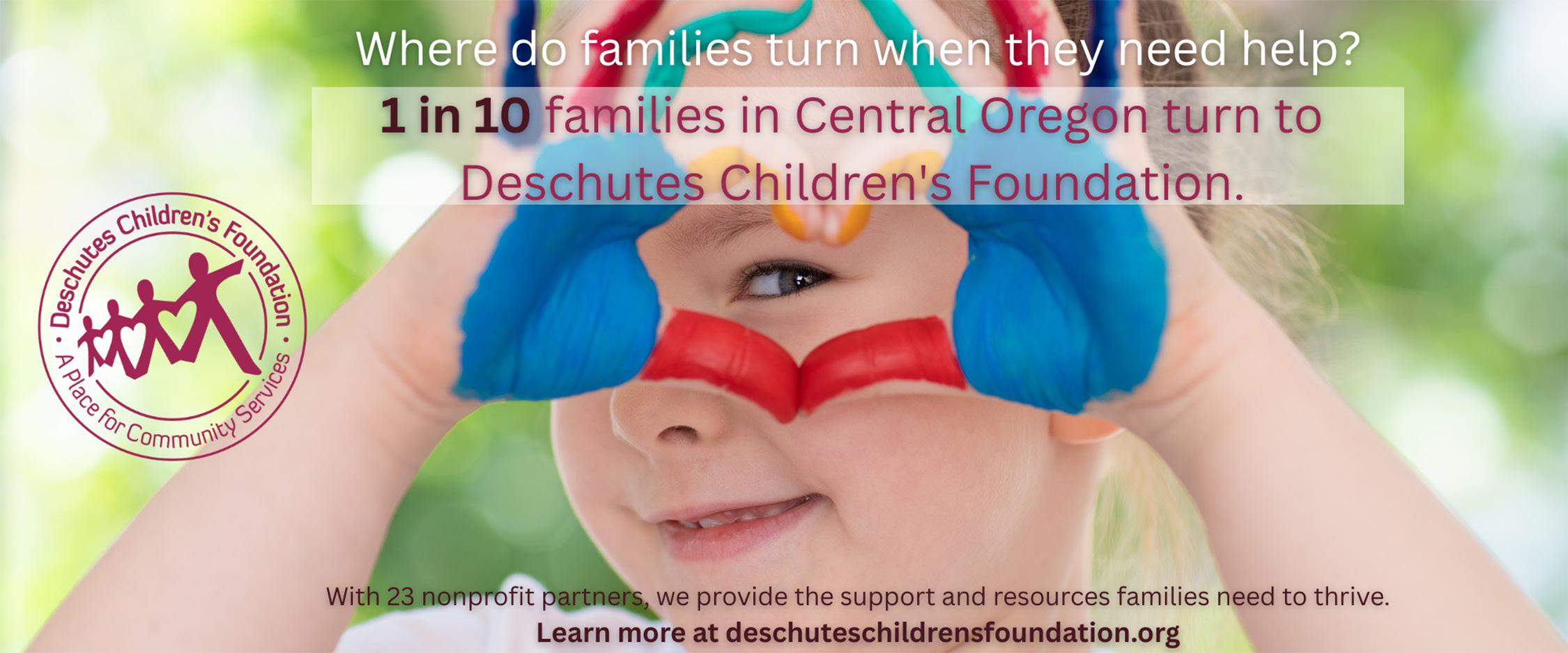
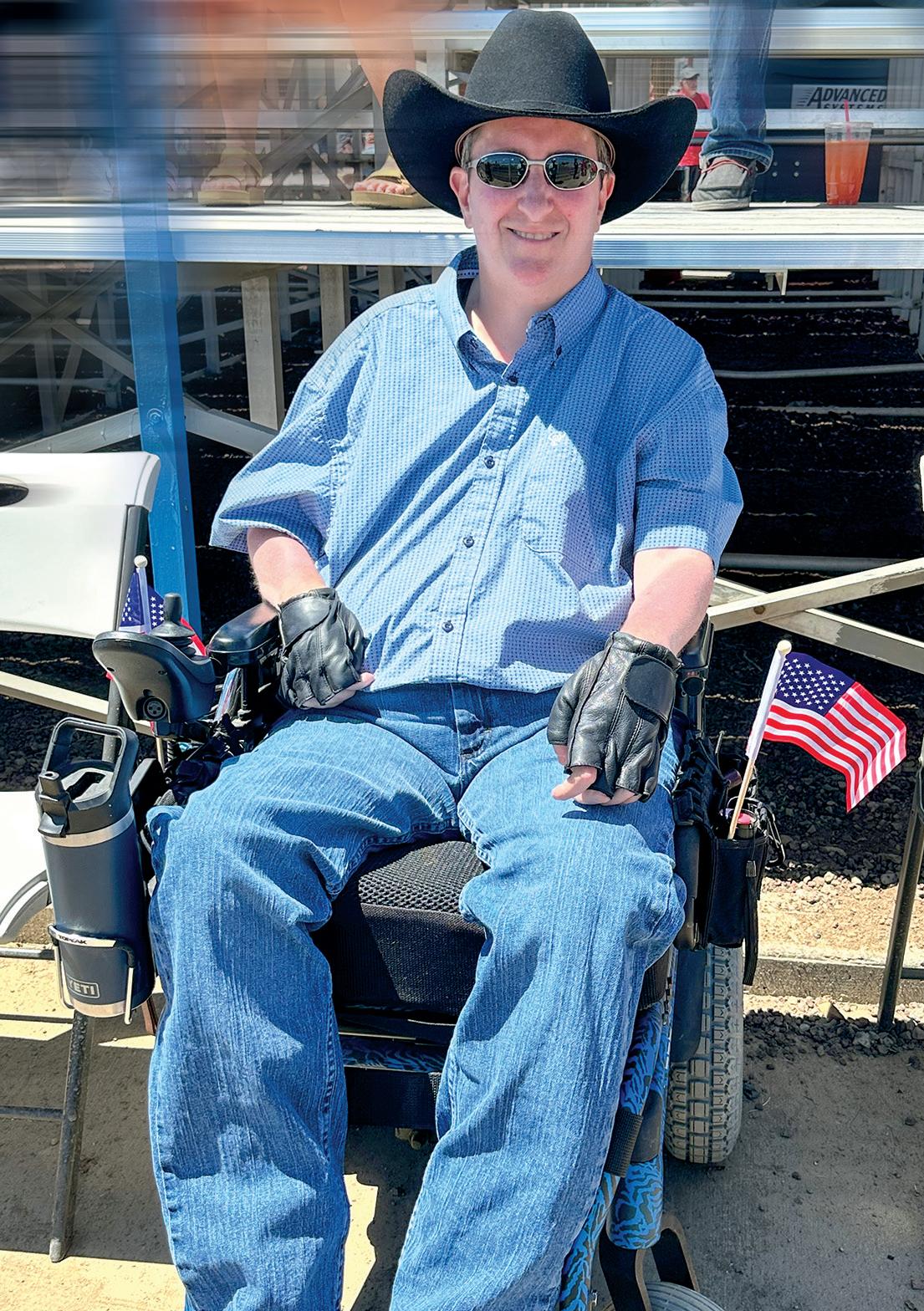
Martin. They are licensed in Oregon and Washington and maintain a virtual presence in Portland and Vancouver, Washington, as well as working from their home
in Sisters Country. Their practice areas are varied and include estate planning, conservatorships, guardianships, estate and trust administration, and property issues.
Richards and Martin regularly travel around Oregon and Washington in their RV offering pro bono and reduced-fee legal services to clients in rural areas under the umbrella of Cascadia Mobile Legal Clinic.
Cascadia handles wills, trusts, powers of attorney, advance directives, guardianships, conservatorships, consumer (debtor/creditor), landlord/tenant, domestic violence/elder abuse, probate/estates, contract disputes, and property disputes.
They don’t have a brick-and-mortar office and never have. Most of Richards client interactions, and most of her courtroom appearances are by Zoom, phone, or email. Such a
remote, work-from-home model is as common today in law as any professional field, indeed thousands of businesses.
“My North Star or guiding principle is to live every day to the fullest, as tomorrow is not promised,” she said. “I broke my neck in an automobile accident my first weekend of college, when I was just 18 years old. My life changed forever in the blink of an eye. That can happen again, at any moment, particularly with all the complications arising from a spinal cord injury. Seize the day.”
She recently told the Elder Law Newsletter : “Personally, living with a disability has affected how I relate to clients and handle cases. That experience has shaped my work, especially in conservatorship cases, and in how I relate to clients with dementia or Alzheimer’s — my mom passed away from Alzheimer’s, so I have a deeper understanding of what families are going through.”
Richards is a member of Oregon Attorneys with Disabilities Association whose motto is “We Exist.” Richards does more than exist. She thrives. Don’t be surprised to find her anywhere, as shown here.




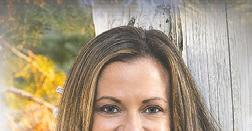


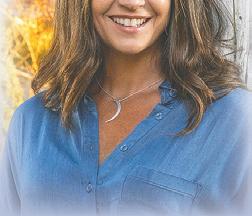


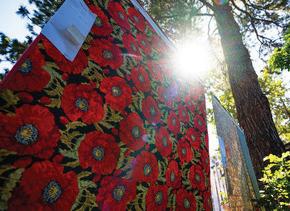







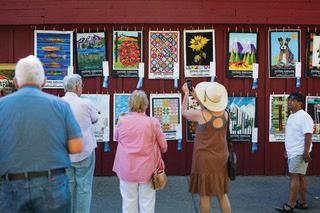
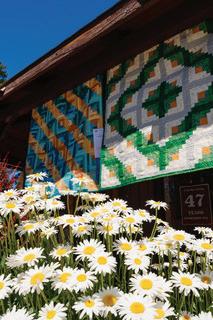



• Pick up a FREE print copy of The Nugget at locations throughout Sisters, and at select locations in Black Butte Ranch, Camp Sherman, Tumalo, and Redmond.
• Have the paper delivered to your mailbox. Subscription cost covers postage and handling. $55/year inside 97759, 97730, 97703, 97759, $70/year all other zip codes. Subscribe at www.nuggetnews.com/subscribe or call 541-549-9941.
• Read the digital version for FREE. Looks just like the print edition but read the PDF on your eReader or computer. Email jess@nuggetnews.com to be added to the list.
• Read stories online at NuggetNews.com — most stories from the paper are free to read. Visit NuggetNews.com anytime!
• Read ALL the stories online at NuggetNews.com with an online subscription. Supports community journalism and gives you access to extra content, behind the scenes, and more. $50/year; visit NuggetNews.com/subscribe.
• Substack coming soon...email jess@nuggetnews.com to be the first to know when we it's ready.

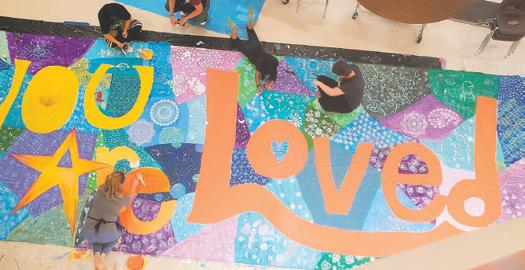
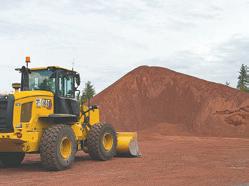
BY MATT VAN SLYKE
PHOTOS BY MOT PHOTOGRAPHY
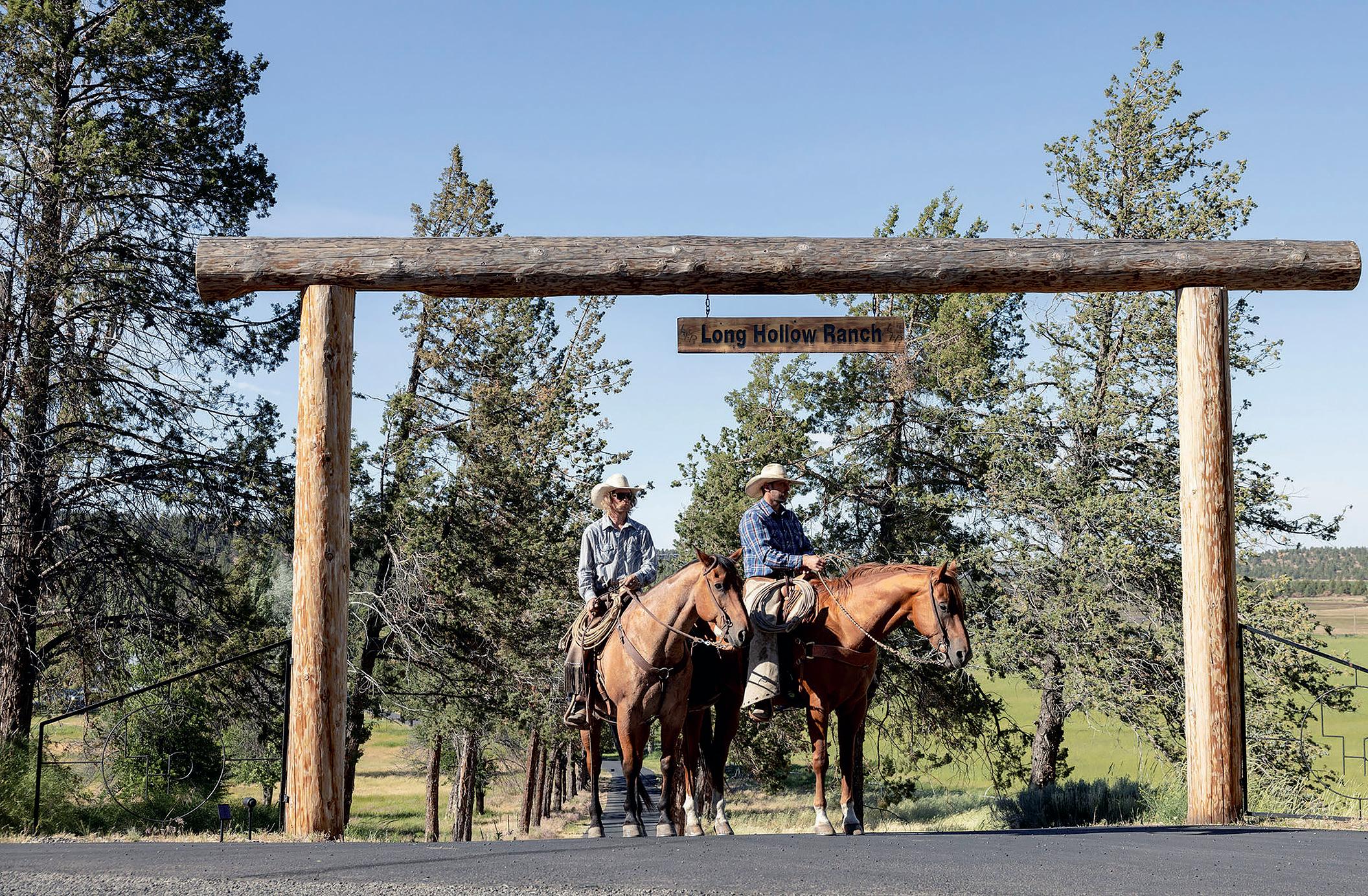
The Old West is alive and enchanting in a Central Oregon valley, where 130 years of history are preserved in a newly refined ranch that welcomes visitors from around the world.
Jenna Hallman not only lives and works on Long Hollow Ranch but, in under two years, has transformed it into a destination for get-togethers romantic and rustic. Hallman is a fitting steward; she first worked there as a wrangler when she was just 15 years old. Twenty years later, bringing an education
from the former Canyonview Equestrian College and experience as an event planner at Brasada Ranch, Hallman is now director of operations, sales, and events.
“The ranch dates back to the 1800s. The Ranch House on the property was officially built in 1904. A lot of the windows and light fixtures are some of the original ones. Arnold Sovereign Holmes and his wife, Ida, lived here and managed the Black Butte Cattle Company from 1904 to 1918. They had a blacksmith shop, which is still one of the original buildings here from back in the day,” explained Hallman.
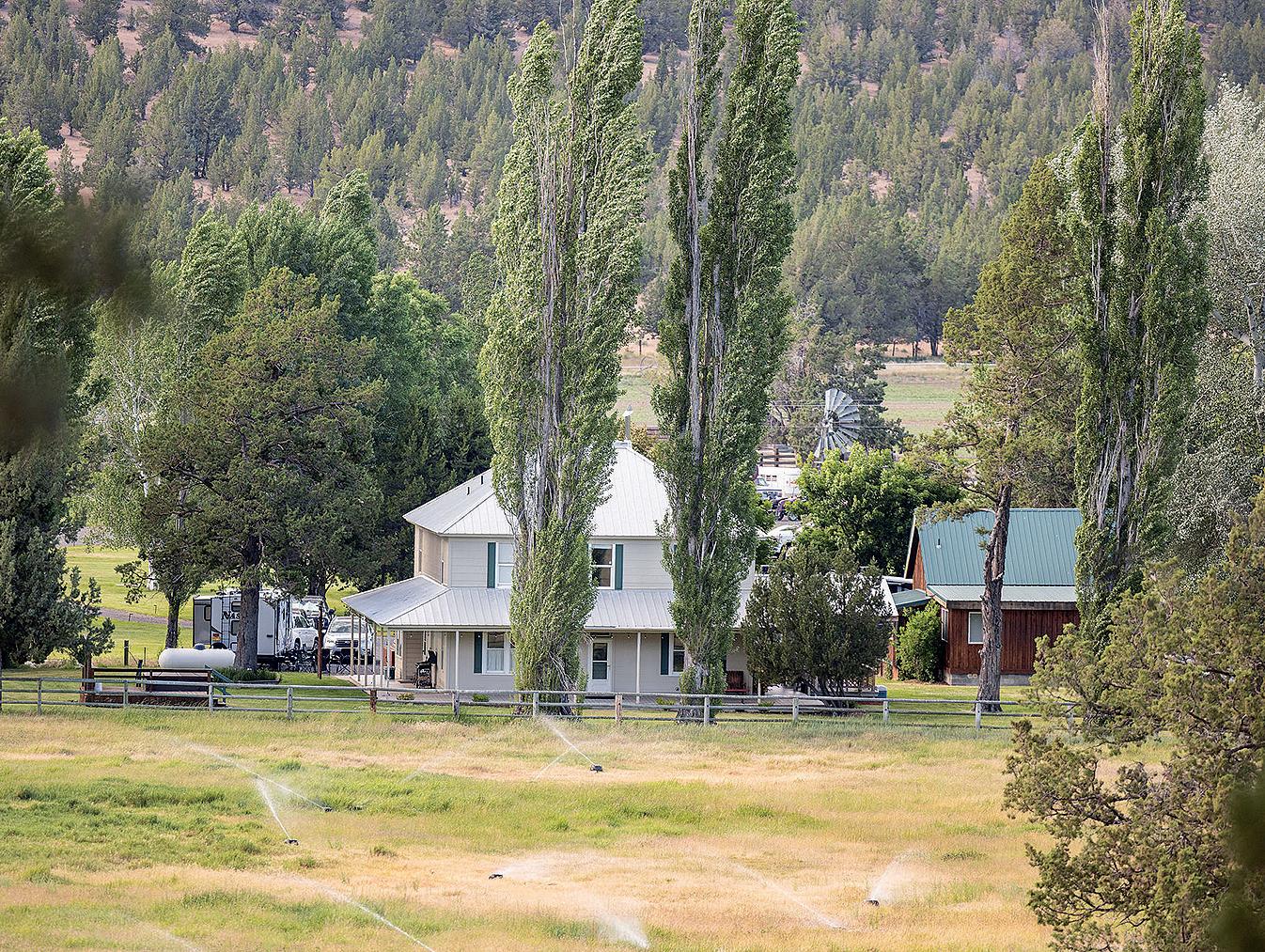
“People could stop here on their way from Sisters to Prineville on their big town day, but the Holmes were well known for throwing their big 4th of July parties. Everyone would come and stay for a couple of days, and I thought that
was pretty cool.”
A century ago, Long Hollow Ranch established one of the first dude ranches in Oregon.
“People would come from Europe and they would stay here, be served three meals a day with Long Hollow Ranch beef, go trail riding, work the cows, and live the cowboy lifestyle,” Hallman said.
The ranch fell into disrepair over the ensuing decades but Hallman renewed LHR for a new wave of events and celebrations. She coordinates weddings, reunions, retreats, getaways, and, yes, dude-ranch weeks.
While a board of directors oversees the ranch, Hallman’s boots are the ones on the ground.
“Every day starts with me feeding the animals. I try to do the landscaping, watering, lawn mowing, pulling weeds, and social media. I make sure I’m up-to-date on all of the bills, balances, and accounting on top of buying, selling, planning groups, doing events, communicating with brides, doing site tours, and trying to come up with new ways to make more money and streamline things to cut costs,” Hallman said.
She has added features, amenities, decorations, and style, but her heaviest lift was in restoring the ranch’s reputation as a wedding venue. She renewed relationships with planners and reached out to learn from any previous customers whose dreams did not quite come true.
“I’ve been trying to pave the way of thinking differently and offering couples more. Instead of that come-ina-panic-and-get-out-by-11 p.m. feeling, you’re getting a whole ranch experience. You get to stay in all the houses — The Ranch House, the Bunk House, and The Homestead House — for two nights and three days; you get cowboy mounted parking guides, you get the saloon, the watering holes, a bar program; you get tables, chairs, and pretty much everything other than a caterer, DJ, florist, and table decor. You don’t have to go anywhere for the rehearsal dinner. You have the whole weekend with your friends and family, because what are the odds of you ever getting all these people under the same roof again?” said Hallman. ”By the time the bride gets here, they know me, I know them, and we’re gonna rock
the socks off of their wedding weekend. That, to me, is what I’m most proud of.”
Another highlight for Hallman: breathing new life into the ranch’s trail riding program.
“We do the Wine & Ride, where you end at The Ranch House porch with a charcuterie board and wine tasting. The girls love that one. We do the Starry Nights & S’mores evening ride and bonfire. There’s also the Rod & Reel, with an hour-long trail ride plus fishing in our stock pond. That’s always fun for the kiddos to do, and the dads like that one, too.”
She even donated her and her horses’ time this past summer to put on an event dozens of children won’t soon forget.
“We worked with Color Outside the Lines this year: a group of inner city kids that came out, and it was the coolest experience, because these kids had never roasted s’mores, never seen stars, never ridden a horse, never had a fire-pit bonfire, never fished, never swam in a pond. Things that you and I just take totally for granted, these kids were just shell shocked that they got to
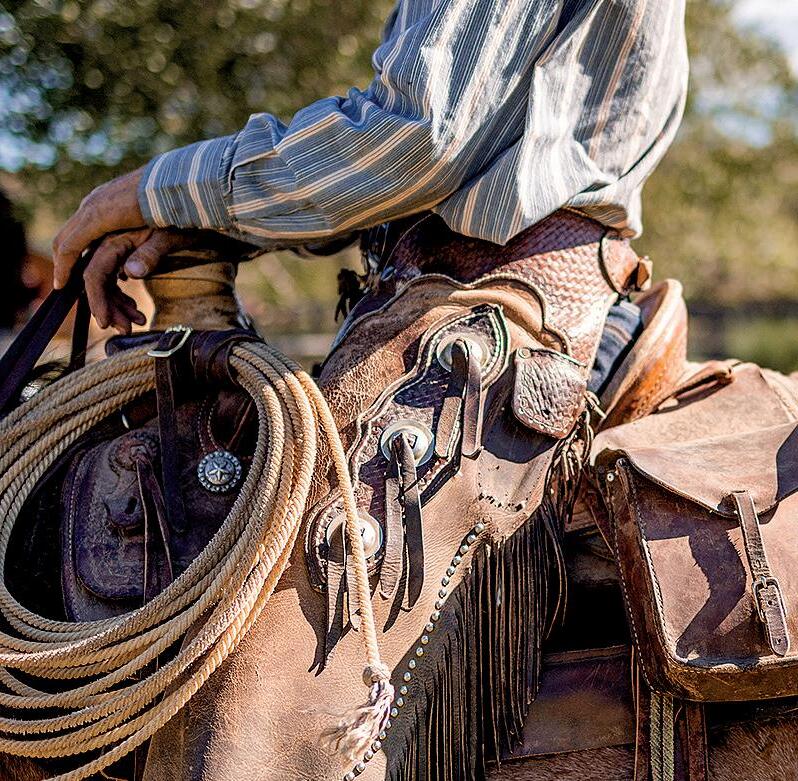
come enjoy ranch life two days and one night. We grilled fresh burgers from the cows outside, they did nature hikes, they learned how to set up their own tent. It was amazing. Everyone had an awesome time. I’m hoping to utilize the horses more for helping kids that need to have an outlet. That’s a little side passion project of mine.”
Come winter, after the wedding season winds down, LHR will host wellness retreats with hot yoga pods, and Hallman will stay busy brainstorming ways to make more visitors happy at the place that makes her the happiest.
“I’m here to make sure your weekends are as magical as possible, and you’re always going to get that extra touch,” pledges Hallman.
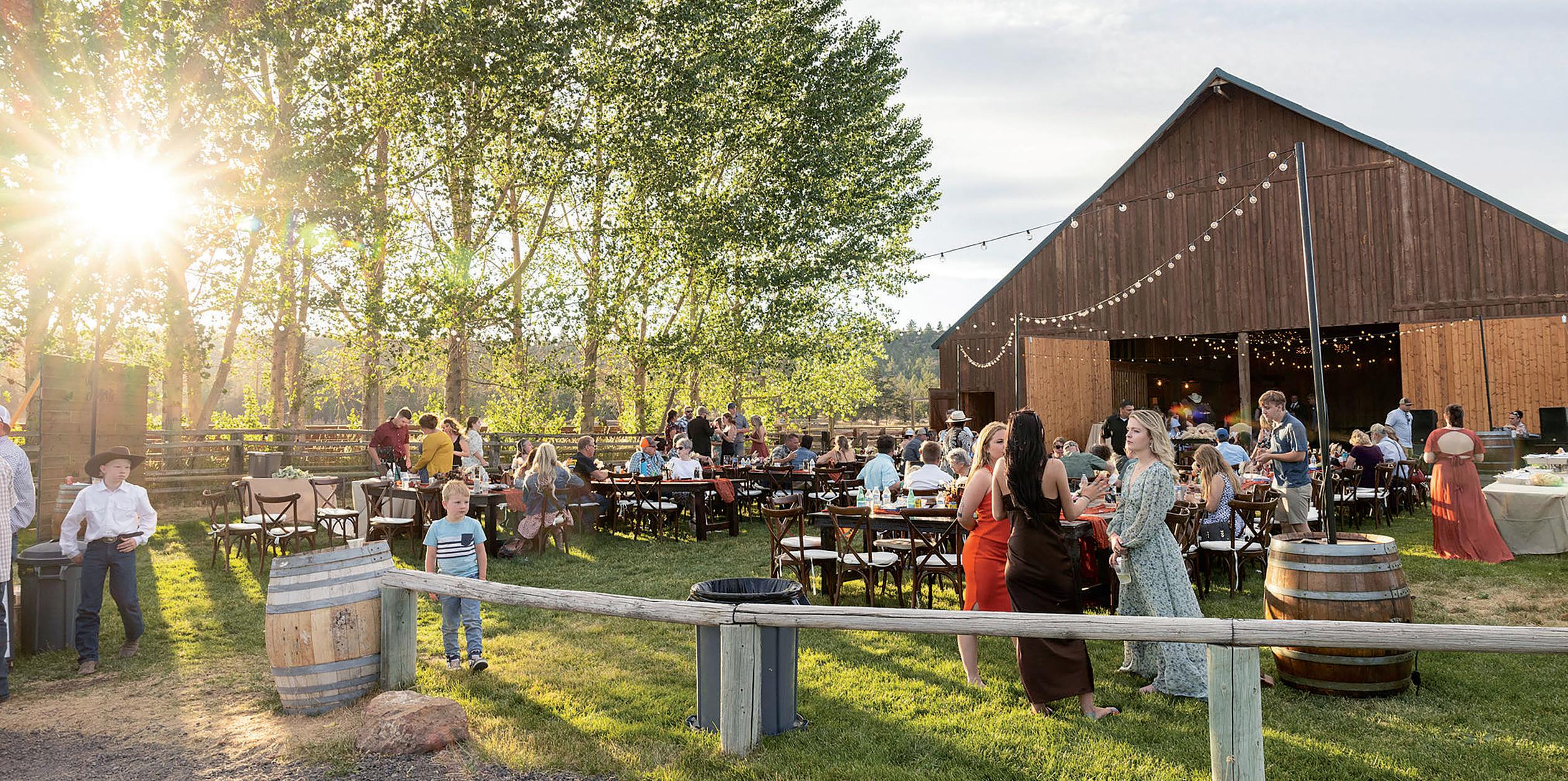
With 130 years of history to draw upon, Long Hollow Ranch has become a destination site for weddings and other events that connect people to the rhythms of ranch life.
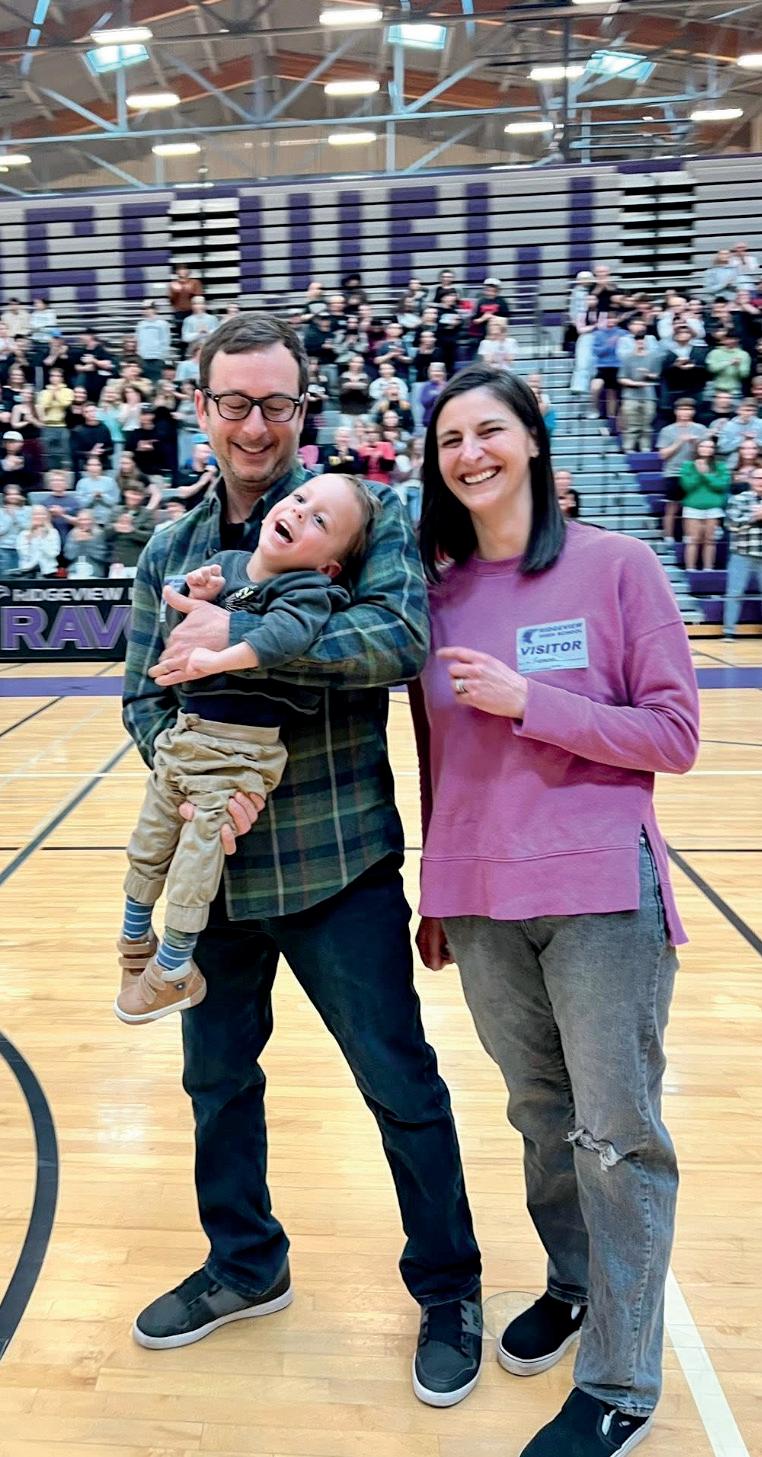
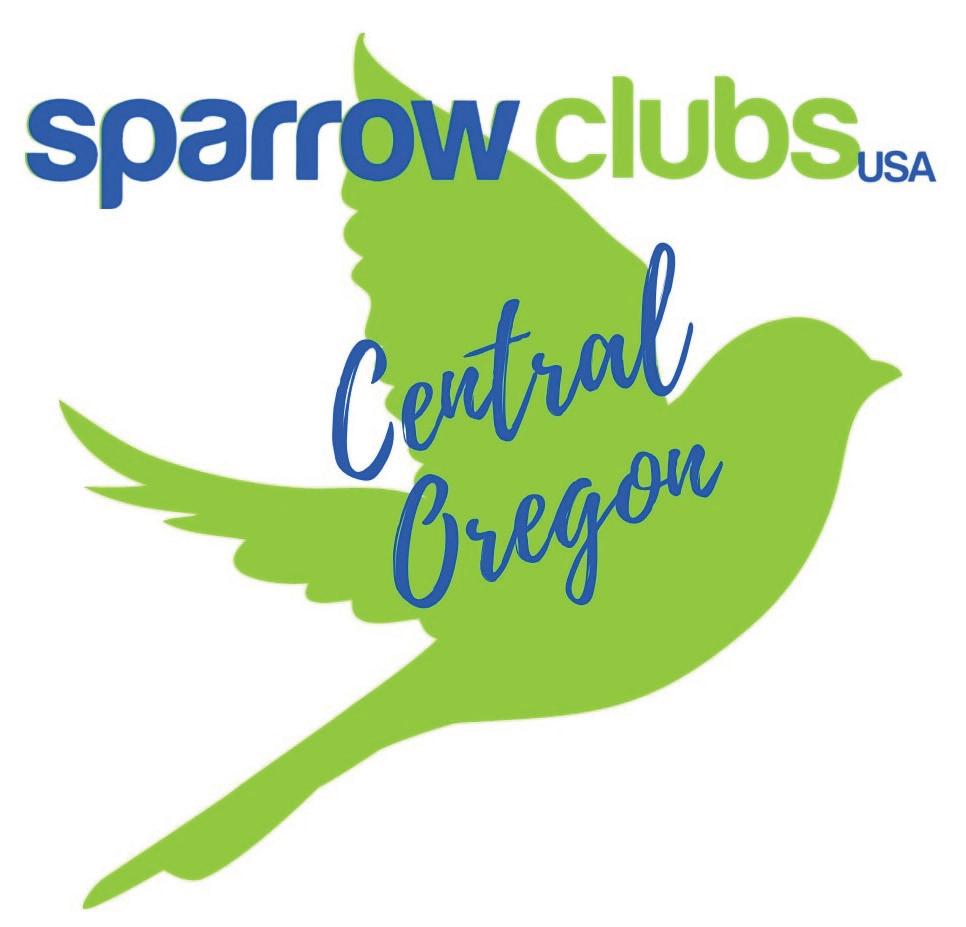
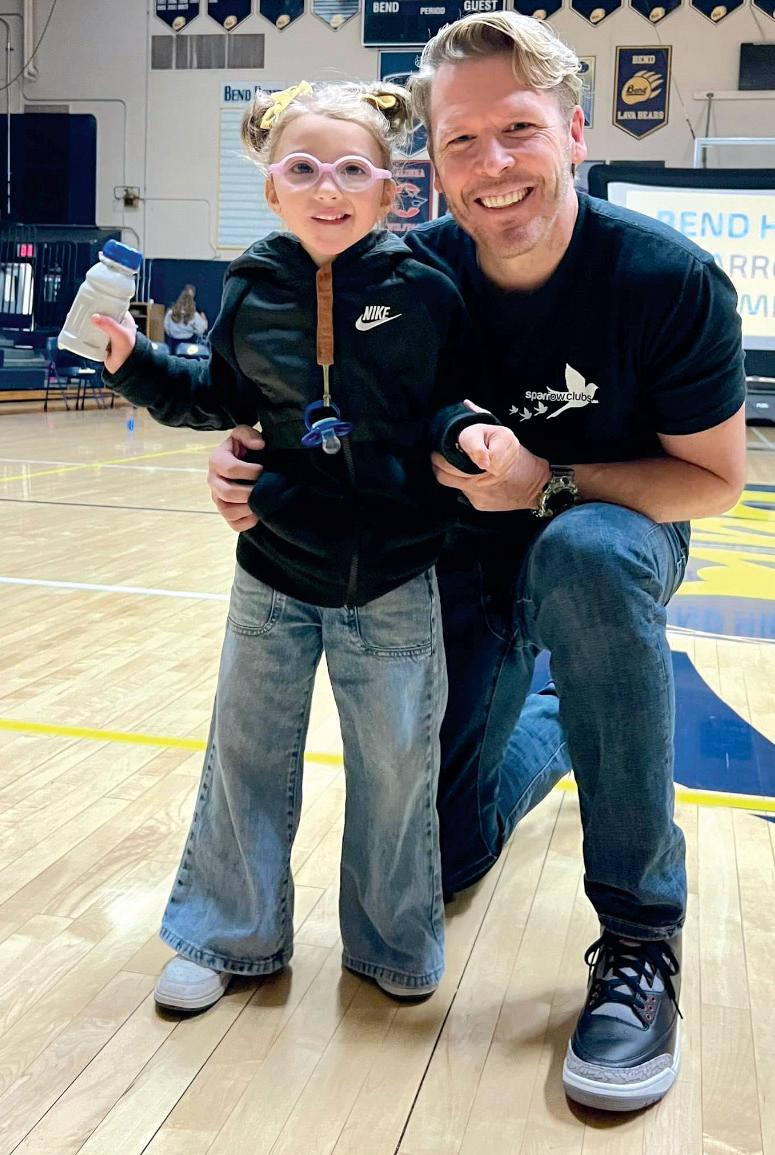
BY JIM CORNELIUS | PHOTOS PROVIDED
Sparrow Clubs are proof of the axiom that great things can grow from a single small seed.
A single act of kindness, compassion, and generosity from one young middle schooler blossomed into a movement that has raised thousands of dollars to help families in medical crisis — and elevates the lives of those who learn to serve others through its mission.
It started in 1992, when sixmonth-old Michael Leeland was diagnosed with a rare and deadly leukemia. He desperately needed a bone marrow transplant to save his life. His parents’ insurance company sent his parents a letter denying an insurance claim, and they were looking at a $225,000 bill just to get Michael admitted to the hospital for treatment. His parents, Jeff and Kristi Leeland, had no way to pay for treatment.
“They were in a hard spot,”
Michael recalled this year.
The fact that he is not only alive, but thriving, in 2025 shows that they found a way out of that hard spot — thanks to one person’s generosity.
Michael’s father, Jeff, was a middle school teacher, who worked with special needs kids. One named Dameon heard of his teacher’s plight. Dameon’s own circumstances were not easy — but he was thinking of his teacher’s young son.
“Dameon had a rough life,” Michael recalled. “But ultimately, he had the heart to help people.”
Dameon and his mother went to the bank and emptied his entire savings account — all $60 — to donate to his teacher in hopes of making some difference. They were headed to school to hand over the cash.
Michael’s father protested that he should not do that, but Dameon’s mother insisted it was what her son wanted — needed — to do.
“She said, ‘Well, he’s already made up his mind,’” Michael recalled. “'We’ll be there in 15 minutes, so please don’t leave.’ And she hung up the phone.”
A $60 donation was obviously not going to make a dent in a huge, looming medical expense. But the power of giving has its own momentum. Staff and other students heard about the Leelands’ circumstance and Dameon’s extraordinary gesture of love and compassion — and started conducting fundraisers and collecting donations. The effort, which has been described as “a chain reaction of compassion and generosity” raised over $227,000. Michael got his bone marrow transplant, with his sister as the donor.
“I went through full-body chemo and radiation,” Michael recalled.
Michael Leeland survived his childhood cancer and is now an executive with Hayden Homes in
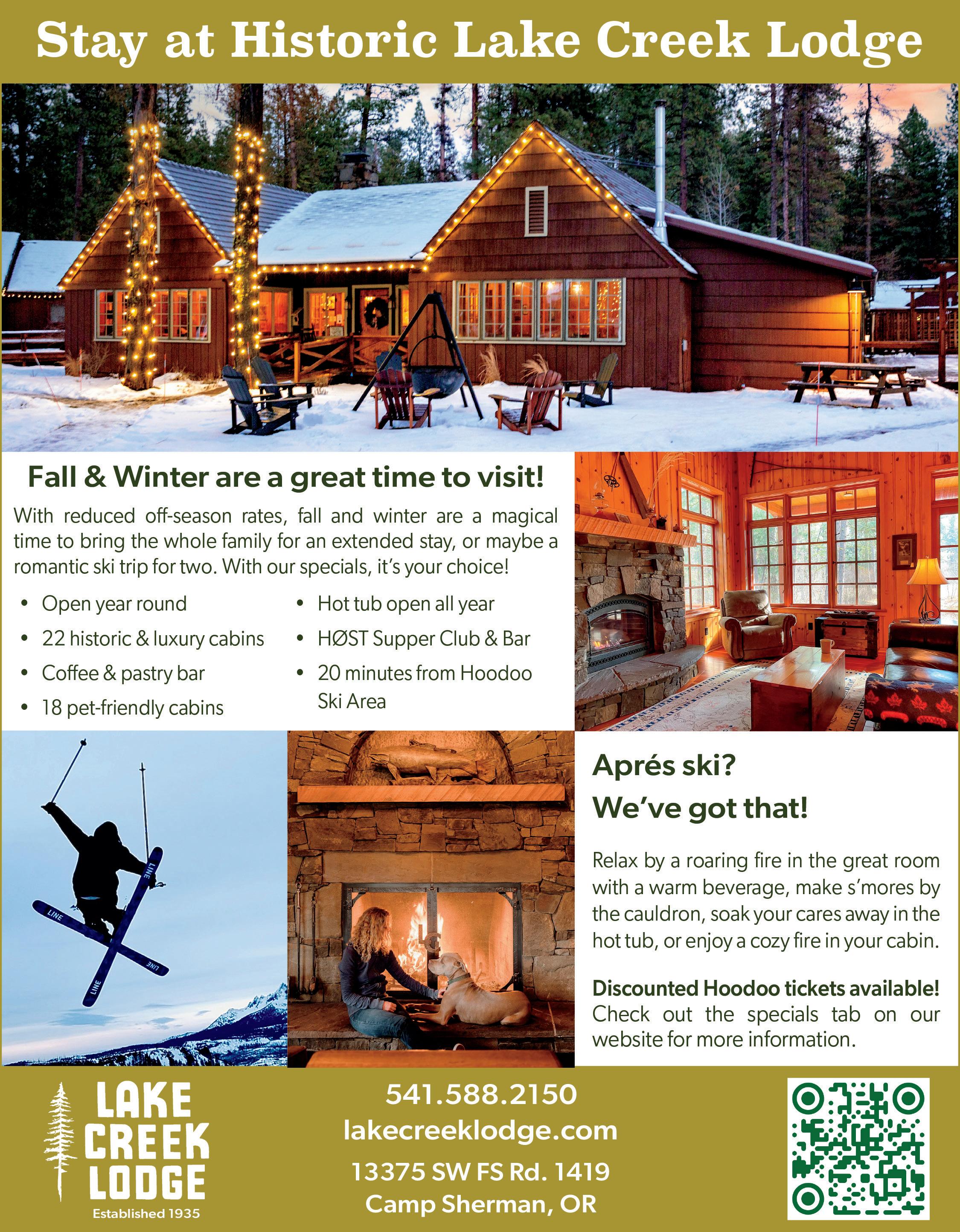
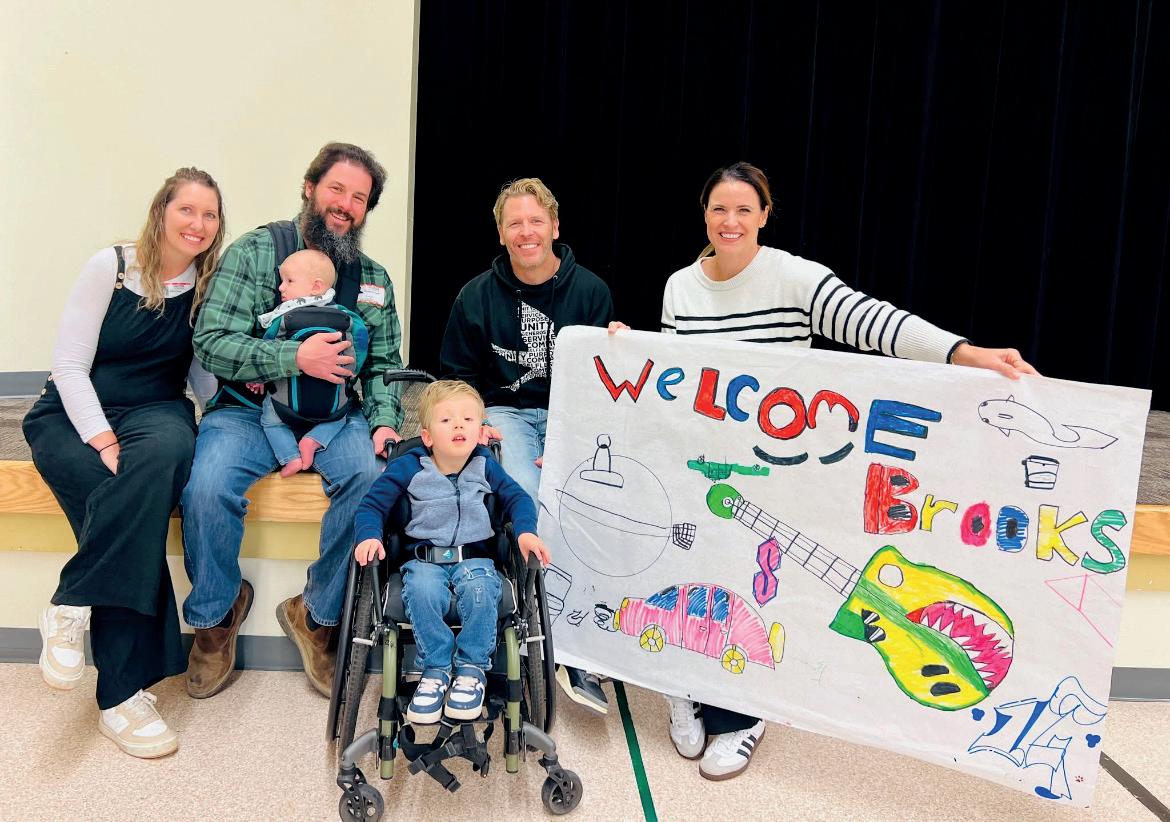
Central Oregon.
“I’ve been cancer free for over [30] years, thanks to Dameon and his generosity,” he said.
The story would be remarkable enough had it ended there. But Dameon’s act of kindness has had a long echo. Four years after Michael’s treatment, his parents founded Sparrow Clubs — an organized way to tap into young peoples’ desire to give and to make a difference to help other families in similar medical crisis.
Students in Sparrow Clubs in schools across Oregon “adopt” children in medical crisis and earn



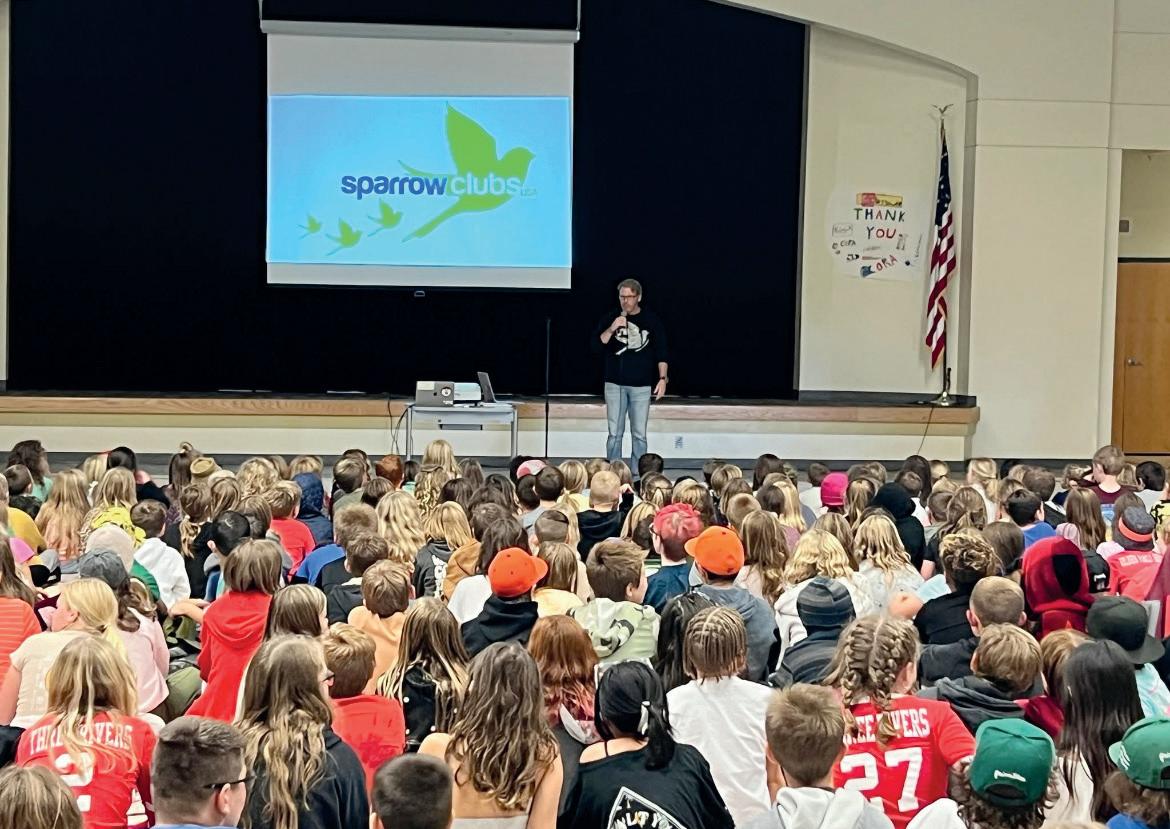
donated funds through community service. Those funds are, in turn, committed to helping the families of each Sparrow.
When the Leelands launched the program, they hoped to help a thousand kids and raise $1 million.
“Sparrow Clubs has long surpassed that now,” Michael said.
Leeland worked for several years in the organization before going to work with Hayden Homes.
One of the unique features of Sparrow Clubs — and a guiding light of the organization — is that the impact of giving on the giver is powerfully emphasized.

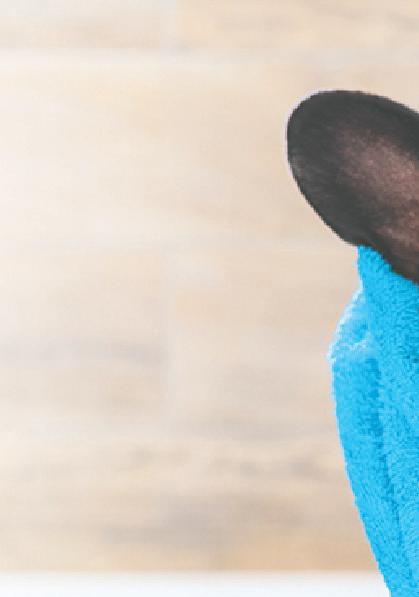

Sparrow Clubs Executive Director Matt Sampson believes that a sense of purpose is “the secret key to a more meaningful life.”
Youth who participate in Sparrow Clubs find a sense of purpose and meaning early. They learn that they don’t have to be a superhero — or even an adult — to have an impact.
“Every single person, every single kid, can serve,” Sampson said. “Let me tell you right now, you already have what it takes. When kids choose to believe that, when they take us up on that challenge, their lives are changed.”
Recent years have dealt some
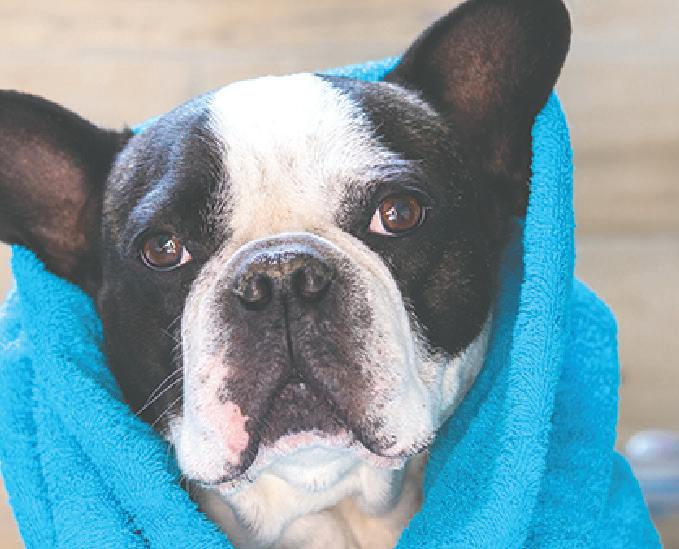




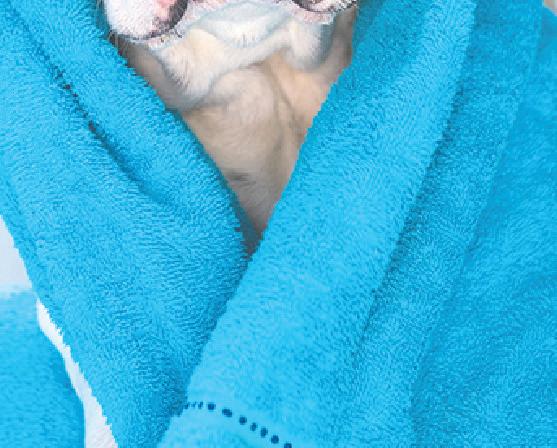

setbacks to the organization.
“COVID was really hard for us, but we stayed the course,” Sampson said. “We turned our program virtual for about a year. Coming out of that, it knocked us back a bit... it took a little while to get back on our feet.”
The program, which once had a vibrant presence in Central Oregon, retreated a little. Sampson, who operates out of Medford, is traveling frequently to Central Oregon to work on projects.
“Our goal is to rebuild our staff in Central Oregon so we have boots on the ground there,” he said.
The organization is striving to “reboot” and get back to pre-COVID levels of activity and service.The organization has had about 10 projects in the 2024-25 school year and the goal is to get up to 12 to 15 in this school year.
To apply for Sparrow status, a family fills out an application, which must be signed-off on by a medical professional. There is an hour-long interview to assess suitability for the program.
“It’s not a quick process,” Sampson acknowledged. “When you see a Sparrow launch in a school, there’s a month, month-and-a-half of work behind that.”
The program is actively looking for
referrals for candidates, and is also actively seeking sponsors who will support the community service-based fundraisers that drive the program. Active participation is desirable.
“We love sponsors who want to be more than check-writers,” Sampson said.
While he’s busy with a thriving career as Training and Development Manager at Hayden Homes, Michael Leeland is still actively involved with Sparrow Clubs. His whole family is.
“I’m just very passionate about what the organization stands for,” Michael said.
He attributes his optimistic and enthusiastic personality to his survival against the odds — and to the sense of community and solidarity that lifted and carried him.
“I think that my ‘why’ is kind of to spark joy in other people and show them that they are valued,” he said.
And he believes that Sparrow Clubs point the way toward building a culture of kindness and generosity.
“They always say compassionate young people make compassionate adults,” he reflected. “I saw that dayto-day working with Sparrow Clubs.”
For more information on getting involved with Sparrow Clubs, visit https://www.sparrowclubs.org.

The guide chock full of Sisters Country information. The best hikes, where to eat, local hot spots, calendar of events, and much more!
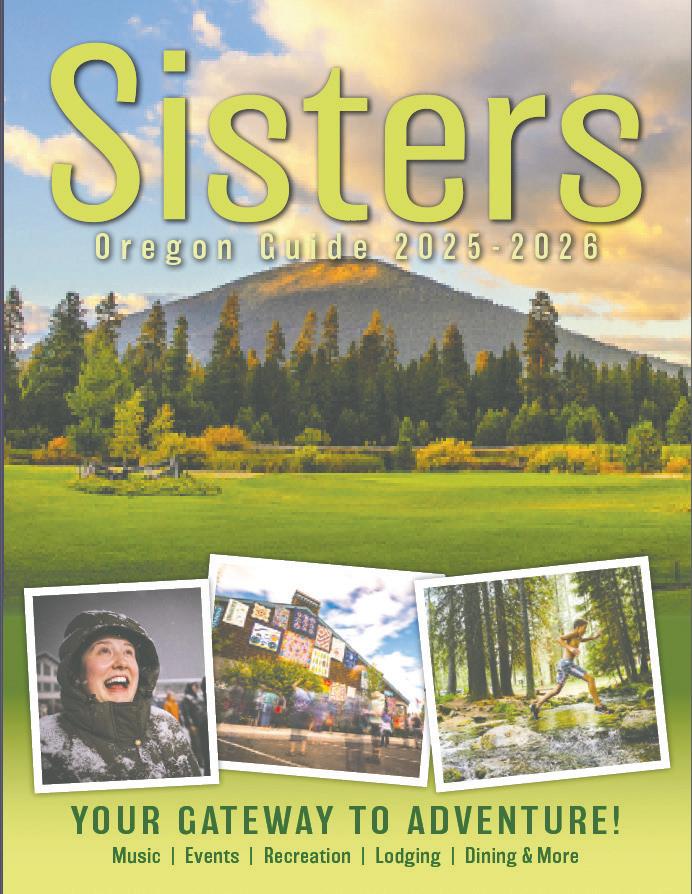
Pick up a complimentary copy of Sisters Oregon Guide on stands throughout Sisters and Central Oregon or scan the QR code below to read online or download to your device.
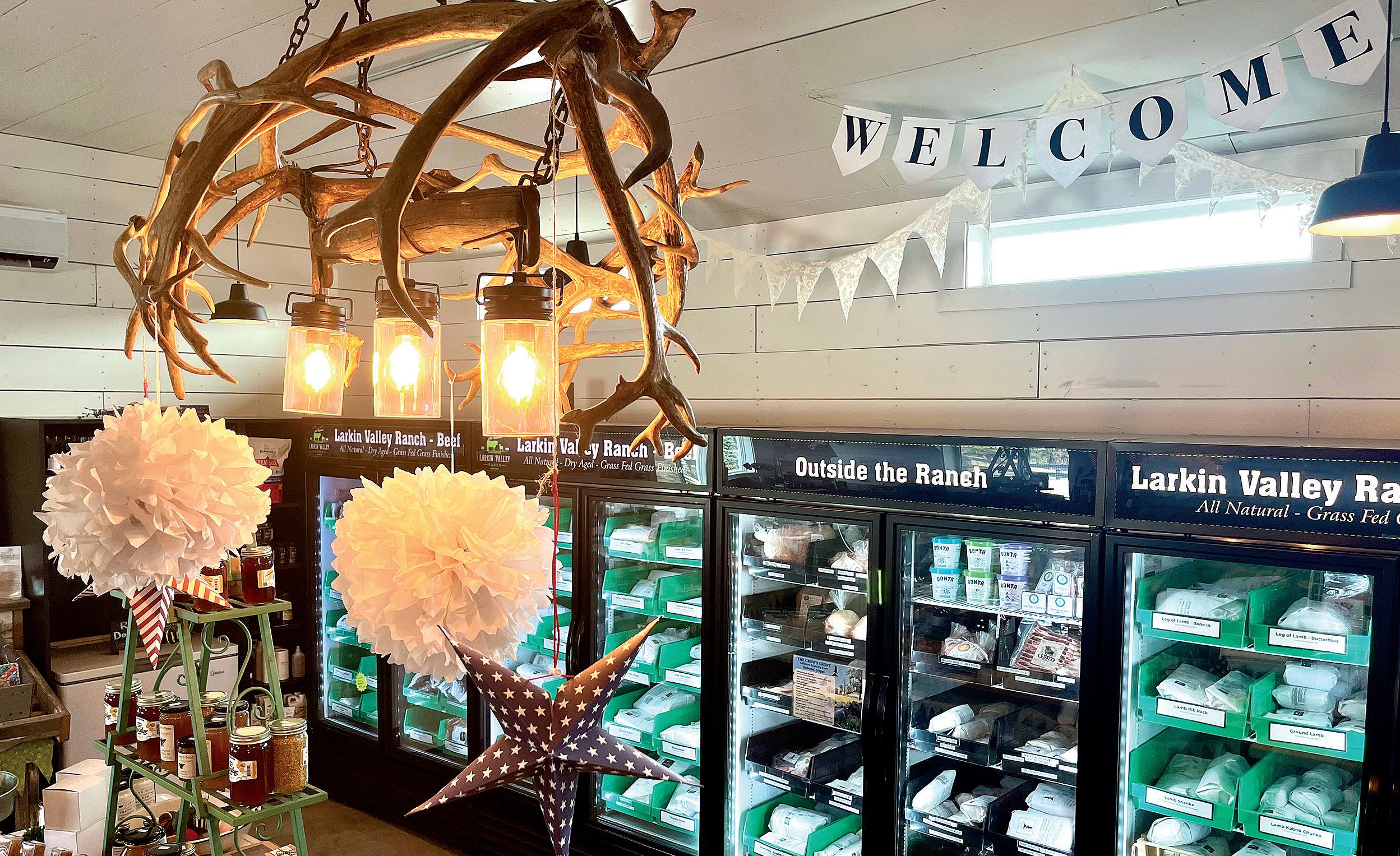
BY MATT VAN SLYKE
A local landmark has become a community gathering point featuring natural foods and products from across Central Oregon and the Pacific Northwest.
Jeff and Julie Larkin of Larkin Valley Ranch in Redmond run The Ranch Market at Helmholtz Way and Highway 126 in Redmond, a location many know as the Old Reindeer Ranch.
The ranch was started in the early 1950s with reindeer brought in from Alaska. It was the home base for Operation Santa Claus, which displayed reindeer at shopping centers and community events across the country during Christmastime. Operation Santa Claus had a herd of nearly 100 reindeer.
What is now the Larkins’ farmstore was once the reindeer birthing barn. A reindeer-antler chandelier hangs above a selection that Julie has curated through making connections at farmers markets and researching products that fit her customers’ wants and needs.
“We’re finding that people are wanting ingredients that aren’t as complicated, so they can understand and know what they’re putting in their body. We are drawing that kind of a customer base: people looking for organic food, wanting to get back to the basics of food,” said Julie.
The quaint farmstore carries local meats, giftable goods, and fresh produce.
“A neighbor of ours is growing all of this here in
Redmond,” she says of the bell peppers and heirloom tomatoes before pointing out other things for sale. “This is from St. Paul. This is from a winery in the valley. That coffee is from Bend. That’s Hood River. This is from a cottage-industry baker; she brings fresh stuff in every week.”
Inside a line of refrigerators and freezers are steaks, roasts, ground beef, hot dogs; breakfast and summer sausages; lunch meat and pepperoni sticks.
“That’s our lamb. We use everything of the animal that the USDA will allow, so there’s offal. We keep beef fat; a couple of gals use it in their tallow lotion products,” Juile says. “These are all old recipes, like your grandmas used to use, because they didn’t waste that stuff when they had cattle.”
The Larkins proudly serve all-natural, grass-fed, grass-finished beef and lamb.
“Usually, on a steer, the last 90 days of that animal’s life, feedlots will really amp up the feed to get the weight up super fast. They are grain- or corn-finished. Those grains and corns are genetically-modified feeds. Basically, you are what you eat; you are getting that genetically-modified grain through that animal. We don’t do that. With grass-fed, grass-finished, it’s less inflammatory on our system than the commercially-processed meats,” Julie explained.
Her retail operation started online in 2013.
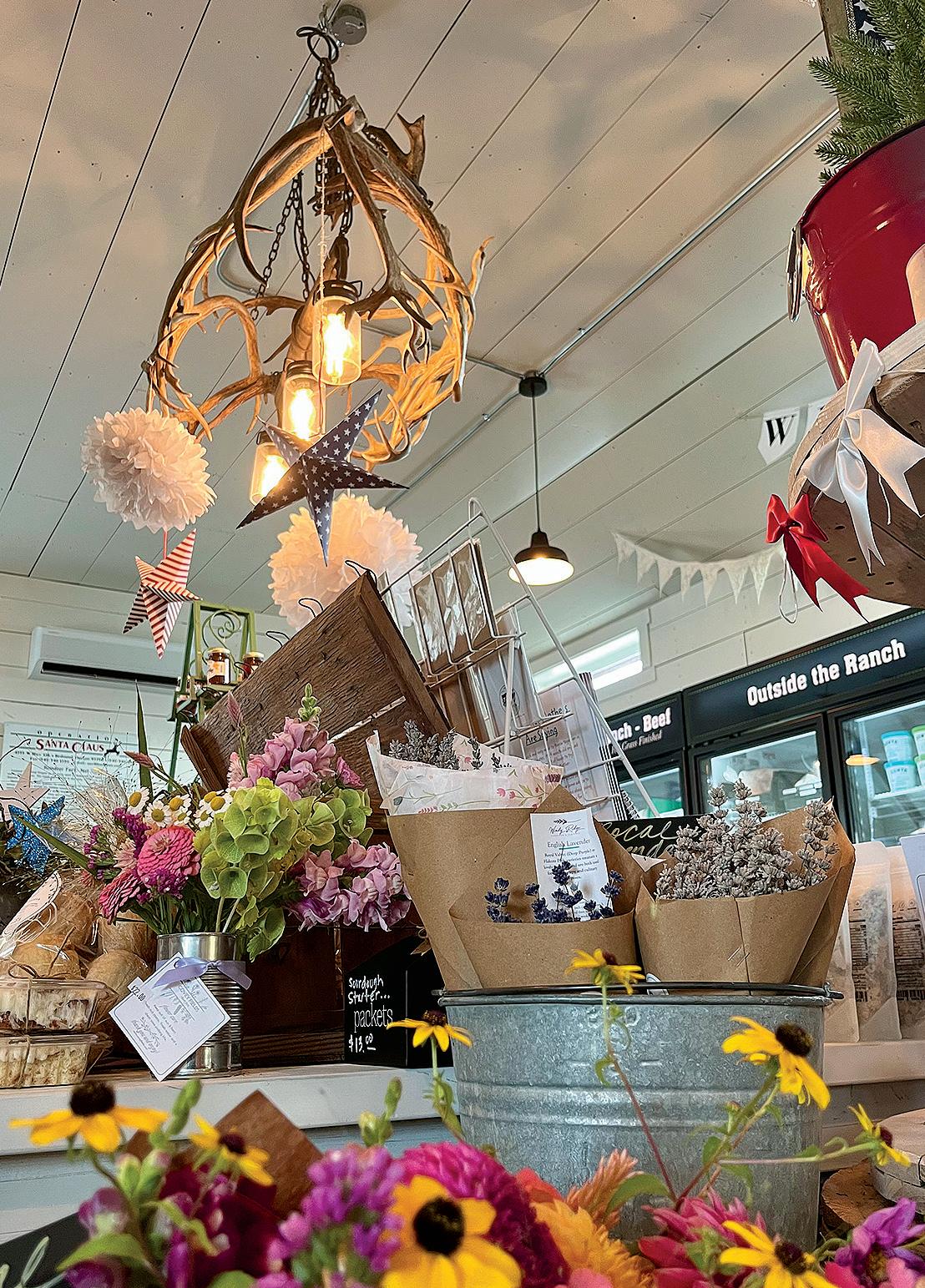
“We were going directly from our breeding program to the package, direct to the consumer. We cut all the middle people out, then Julie built up that online store,” said Jeff of larkinvalleyranch.com. “We deliver all over Central Oregon to people’s doors. Then in 2021, we bought this place and wanted to have a retail outlet that would showcase what we do and our principles of responsibility and passion for good, healthy food,” said Jeff.
The couple have entrepreneurial roots. Julie’s mom ran a tavern in Prineville. Julie bussed tables at the country club when she was 13.
“It was back when Les Schwab was alive. He’s a big icon of Oregon, and he would tip all of us kids who were working there. He would put $100 in the hat for us,” Julie remembers.
Jeff, a third-generation rancher, used to walk alongside the reindeer in annual holiday parades in Redmond. He became a realtor, and met his wife while the two were on the job.
“I was doing interior design work, and he hired me to do that,” Julie says. “He had just built a new home, and he needed help with some interior finishes.”
Jeff has always had a soft spot for the Old Reindeer Ranch.
“I’ve been driving by this since I could drive. It has always been an iconic spot here in Redmond. I kept thinking it would be an ideal place where we could have a collective spot

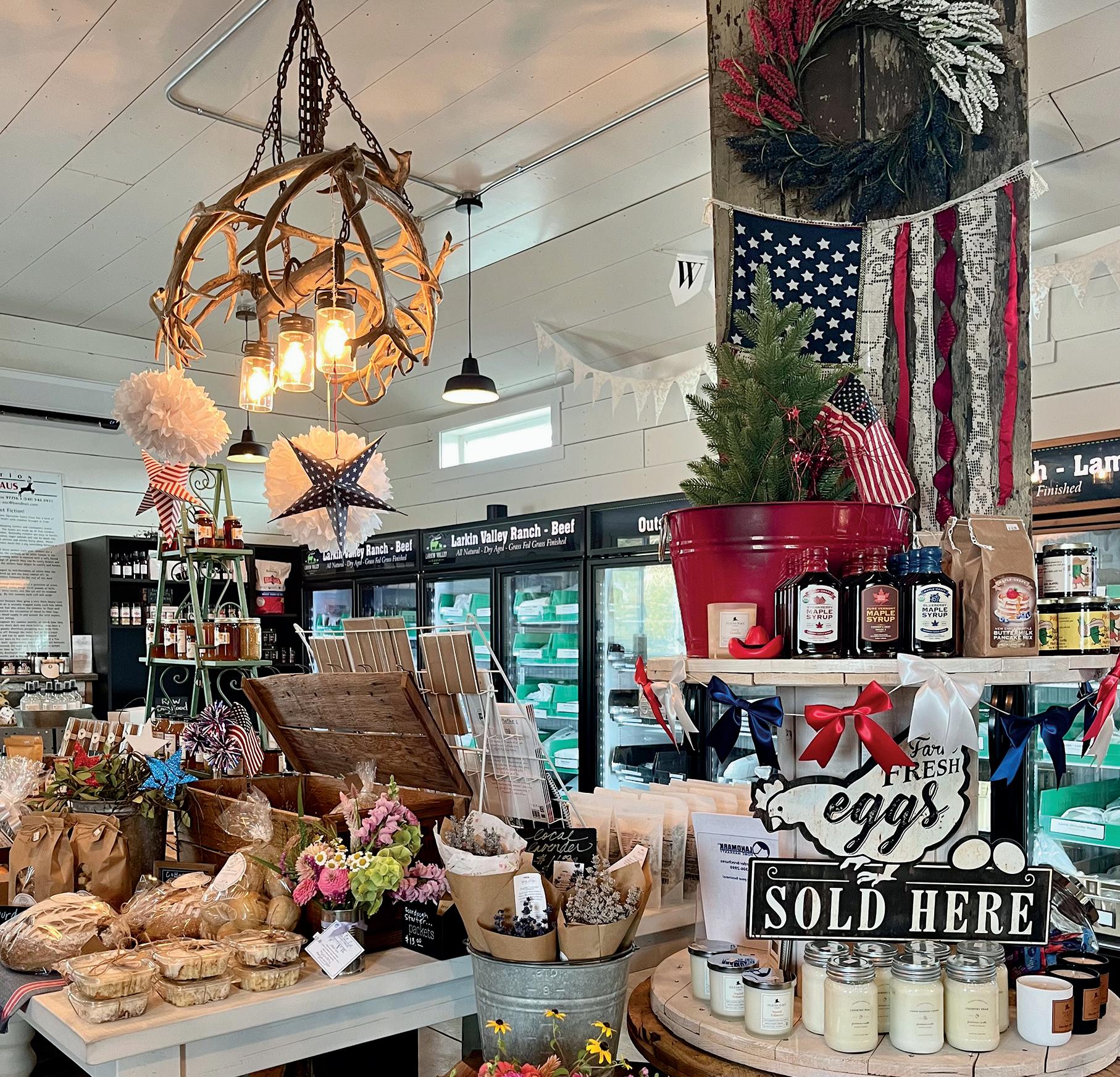
for the area’s producers. From my mid-20s to probably mid-40s, I thought, ‘I could make this place so cool.’”
What they purchased was a prime location but a mess of broken-down corrals.
“It was all orange: orange roof, orange house. It was a mess. We salvaged and repurposed the old corral boards. We used a lot of that in the store. We tilled up the ground out there, because it hadn’t been farmed since probably the ‘60s, and started taking down fencing. It just kind of evolved. We got our permits and two-and-a-half years later, we were able to open,” Jeff said.
The Larkins recently celebrated the first anniversary of The Ranch Market.
“The community has gotten behind us and supported us and endorsed what we’re doing and this whole store,” explained Jeff. “We support nonprofits where we’ll donate all the beef for a meal for Friends of the Children, for Rimrock Trails in Central Oregon. We’ll donate 100 pounds of hamburger to auction off for Shepherd’s House. If our freezers are full of something extra, we’ll drop off 300 pounds of meat to help them.”
The most beautiful part, they say, is the relationships they get to build.
“I just love my customers. We have the best regulars. We know their names. We know what they’re going to pick up. Our regulars are our bread and butter,” said Julie.
Plans to grow their customer base include seasonal events like Tractor & Treat.
“We’ll bring a dozen tractors, fill buckets full of candy at each tractor, and let all the little kids in their costumes go from tractor to tractor and trick-or-treat. We serve hot apple cider and fried dough. It’s really fun,” said Julie.
Then in December, Nicholas the Santa Cow stops by to take photos with families.
The Larkins plan to preserve the historic Redmond property and make memories for years to come: “This will always be the Old Reindeer Ranch to us, so we will never tear this down. As long as we have it, it’s not going to be anything different.”
The Ranch Market opens at 10 a.m. Thursday through Saturday.








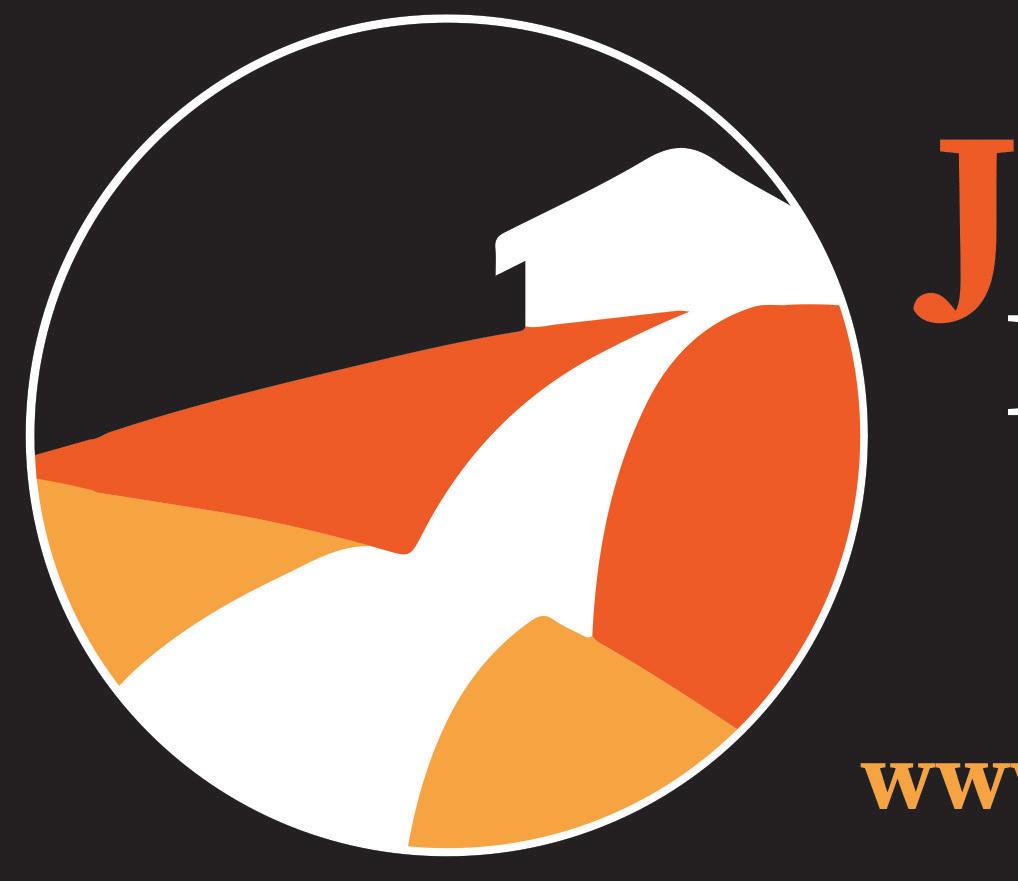
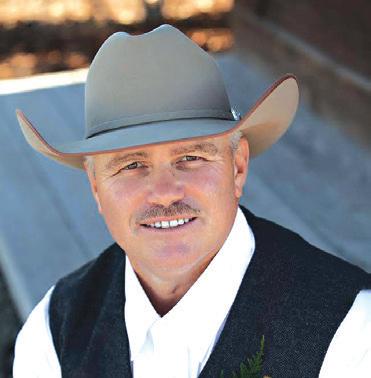





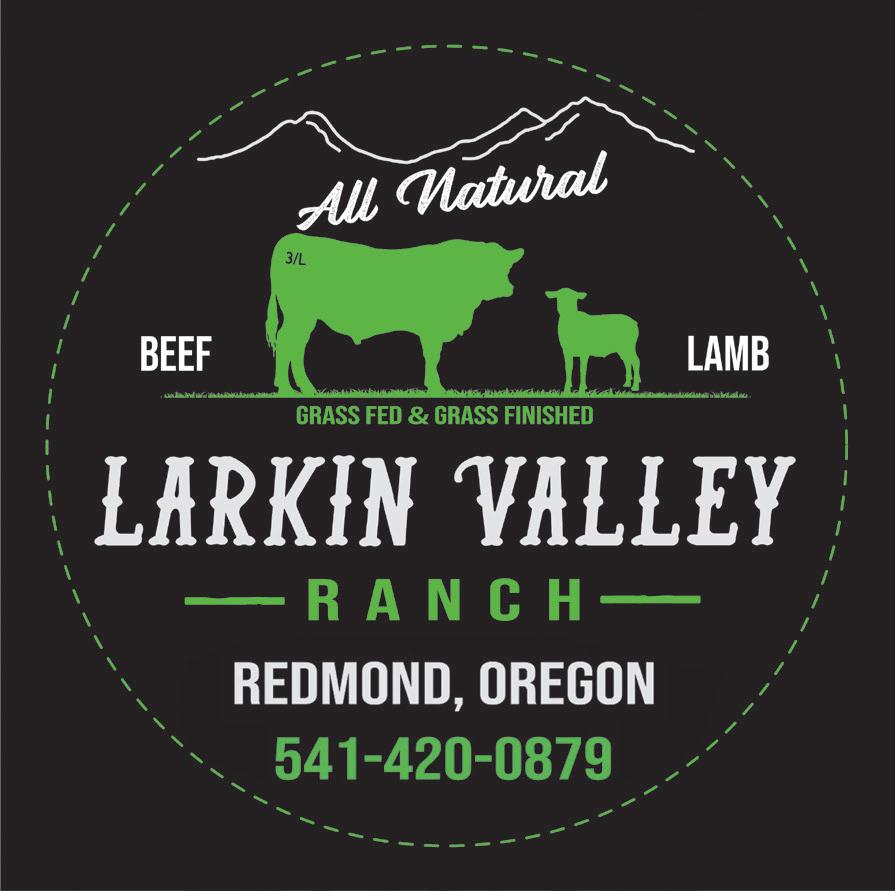

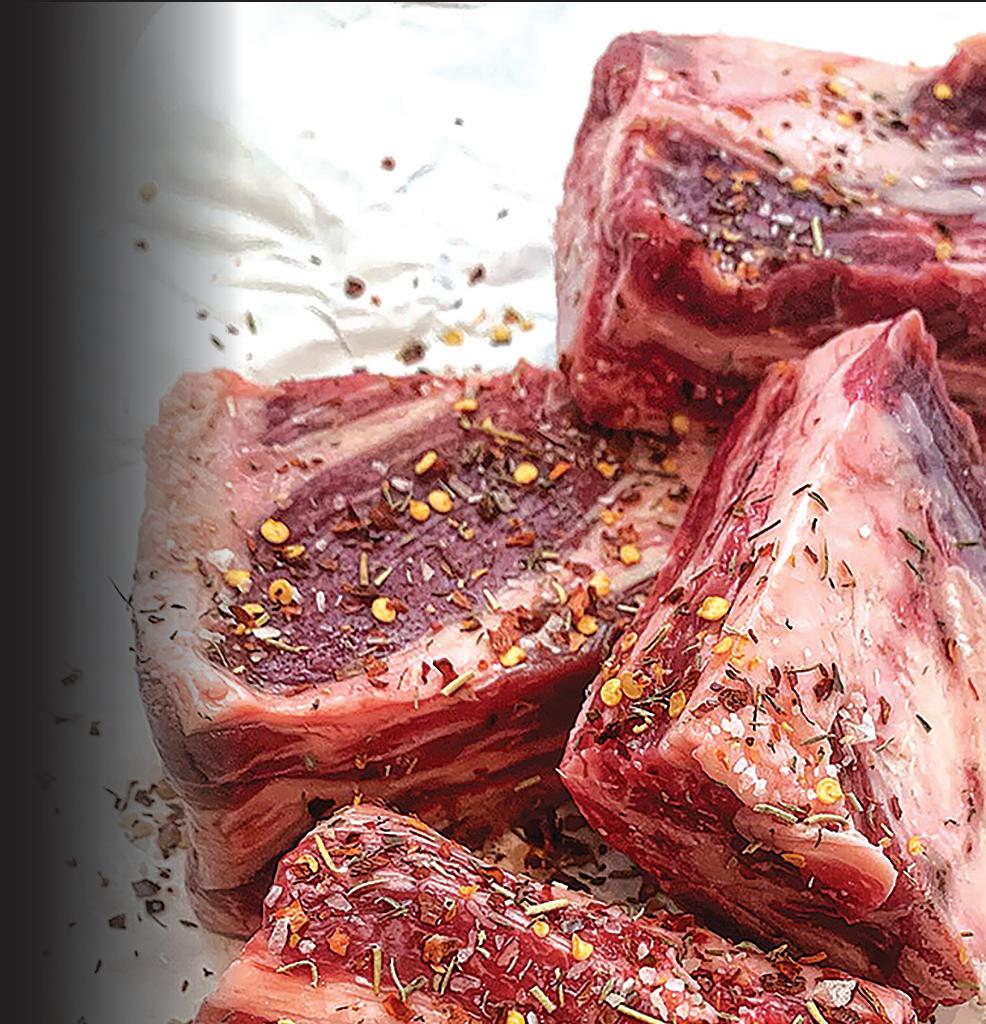
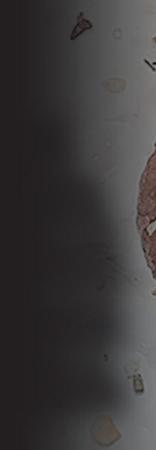
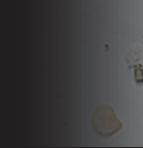
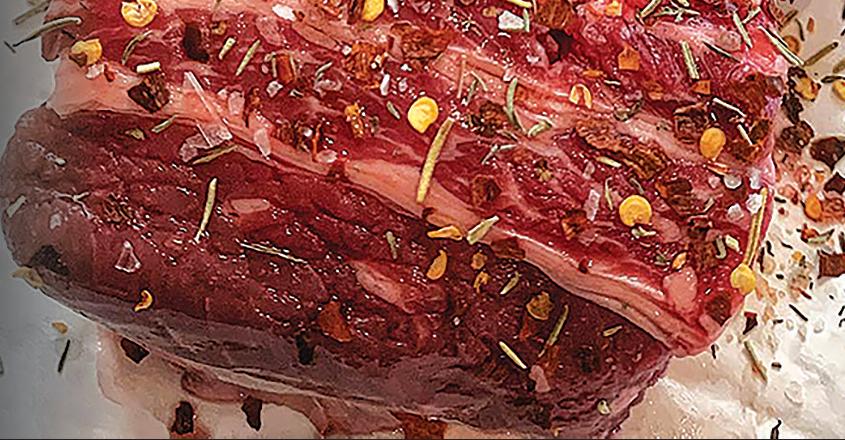

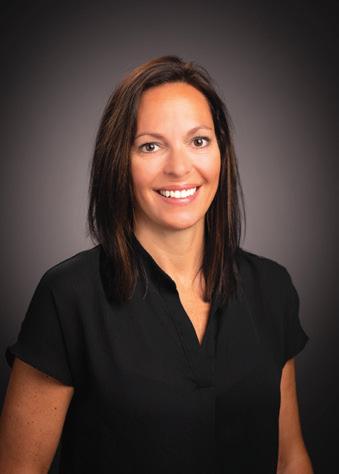

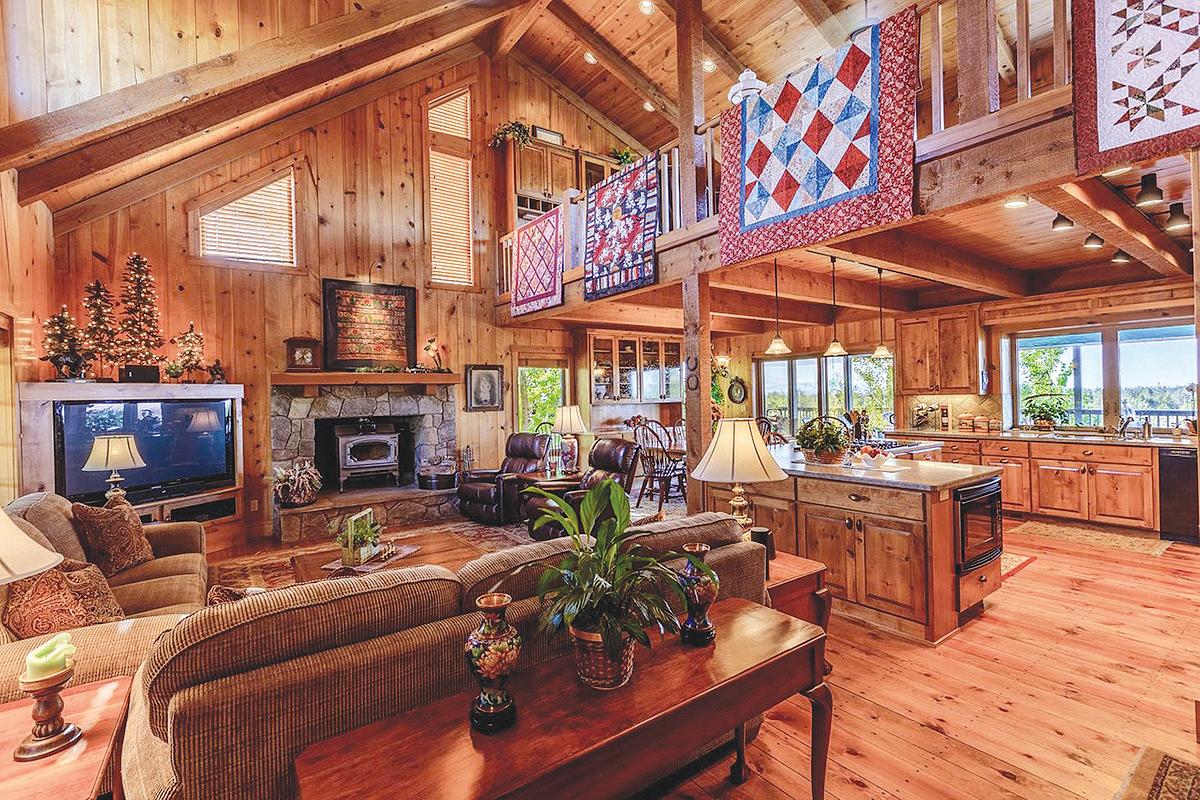
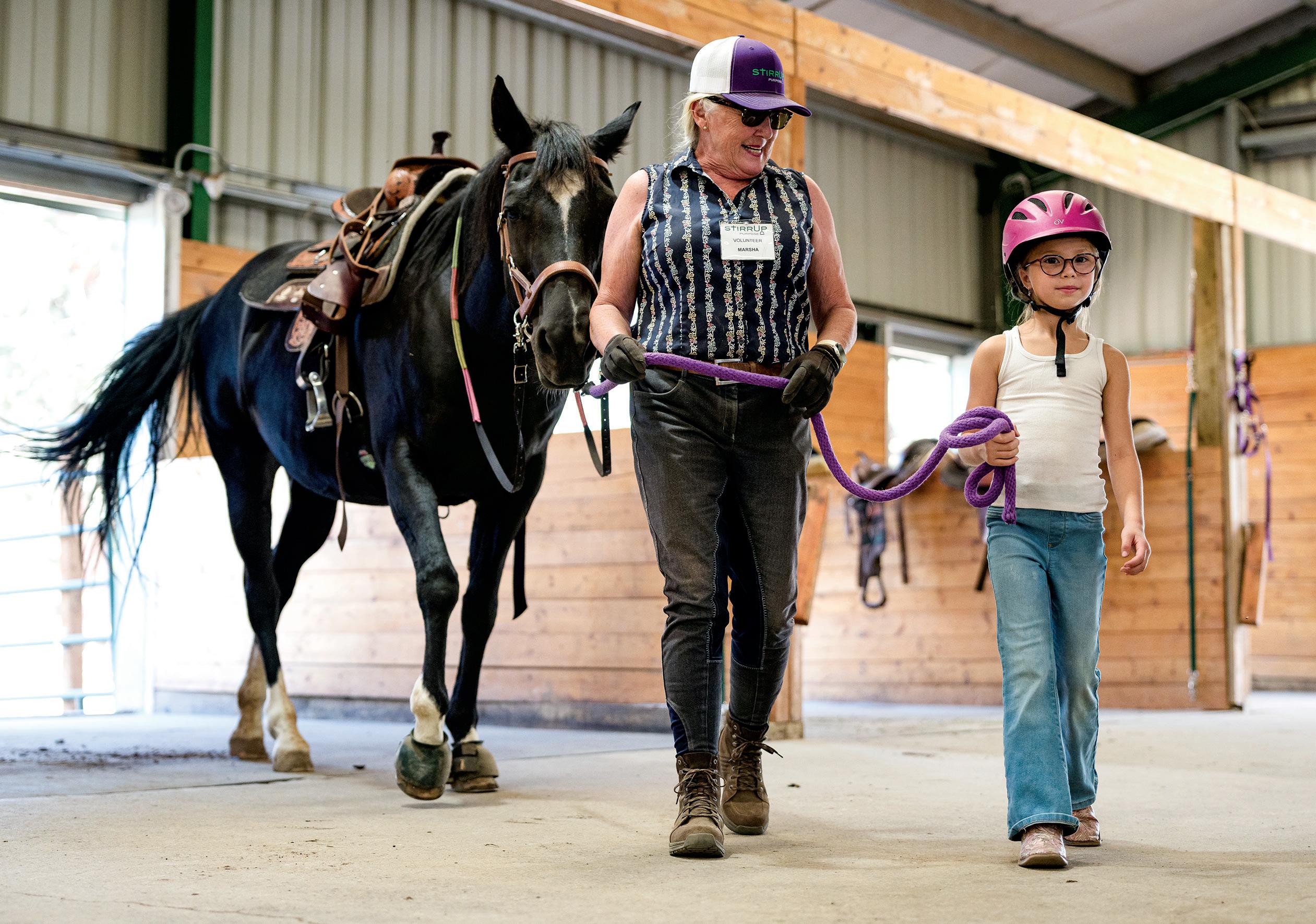
There is a famous quote attributed to Winston Churchill: “There is something about the outside of a horse that is good for the inside of a man.”
Men and women, young and old, have found that there is truth in that sentiment, that there is something healing about a person’s connection with a horse.
Central Oregon is fortunate that its abundant terrain favorable to horses, and a deep well of equestrians volunteers, is a natural blend to provide a comprehensive range of therapeutic services.
Equine therapy is best described as a therapeutic practice involving interaction with horses to promote healing and self-discovery. Different than most forms of traditional therapy, equine-assisted therapy is experiential, meaning participants learn and grow through hands-on activities with horses.
BY BILL BARTLETT | PHOTOS BY CODY RHEAULT
This approach leverages the horse’s unique qualities to address emotional, physical, and behavioral challenges, according to Eagala, a national certification program for equine therapists.
Horses are especially wellsuited for therapy due to their sensitivity to emotions and their ability to mirror human behaviors. When interacting with horses, humans receive instant, non-verbal feedback, helping them understand their emotions and behaviors in a new way. Horses also contribute a calming presence, creating a nonjudgmental environment that fosters trust and connection.
Equine therapy includes several forms; each tailored to specific needs. From mental health-focused equine-assisted
psychotherapy to physical rehabilitation through hippotherapy, the versatility of equine therapy ensures there’s an option for everyone to benefit from equine interactions.
What is Hippotherapy?
“Hippotherapy refers to the utilization of natural, rhythmic equine movement as a specific treatment tool by occupational therapy, physical therapy, or speech-language therapy professionals as part of their overall treatment plans,” says Penny Campbell, executive director and instructor at StirrUp Purpose based in Bend with a satellite facility in Sisters. “Clients can experience more normal movement patterns which can improve posture, balance, sensory integration, endurance and ultimately, gait.”
It’s not always about healing.
Laura Forest LCSW, a seasoned psychotherapist, and Victoria Williams, a professional horse trainer and instructor, have combined their talents and over 20 years of friendship to partner up and create exceptional equine facilitated workshops. They offer a variety of unique personal growth workshops and wellness retreats guided by magnificent horses and expert human facilitators at Discovery With Horses in Tumalo.
At Healing Reins, also in Tumalo, they provide a range of services including horsemanship itself.
“It’s a powerful outlet for children, teenagers, and adults with a wide variety of cognitive, emotional, physical, and developmental challenges,” says Polly Cohen, Executive Director.
Their range of services
includes Equine-Assisted Mental Health (EAMH), an interactive therapy process in which a licensed mental health professional working with a credentialed equine professional, partners with a horse to address psychotherapy goals set forth by the mental health professional and the client.
On the physical side is an occupational and physical therapy clinic providing weekly or biweekly individual therapy sessions with options of a variety of treatment options and settings including a fully outfitted clinic, nature-based functional activities, animal interactions, and equine movement as a treatment tool.
Physical therapy is a treatment strategy used by a physical therapist in which the walking patterns of the horse are utilized to improve the core strength,
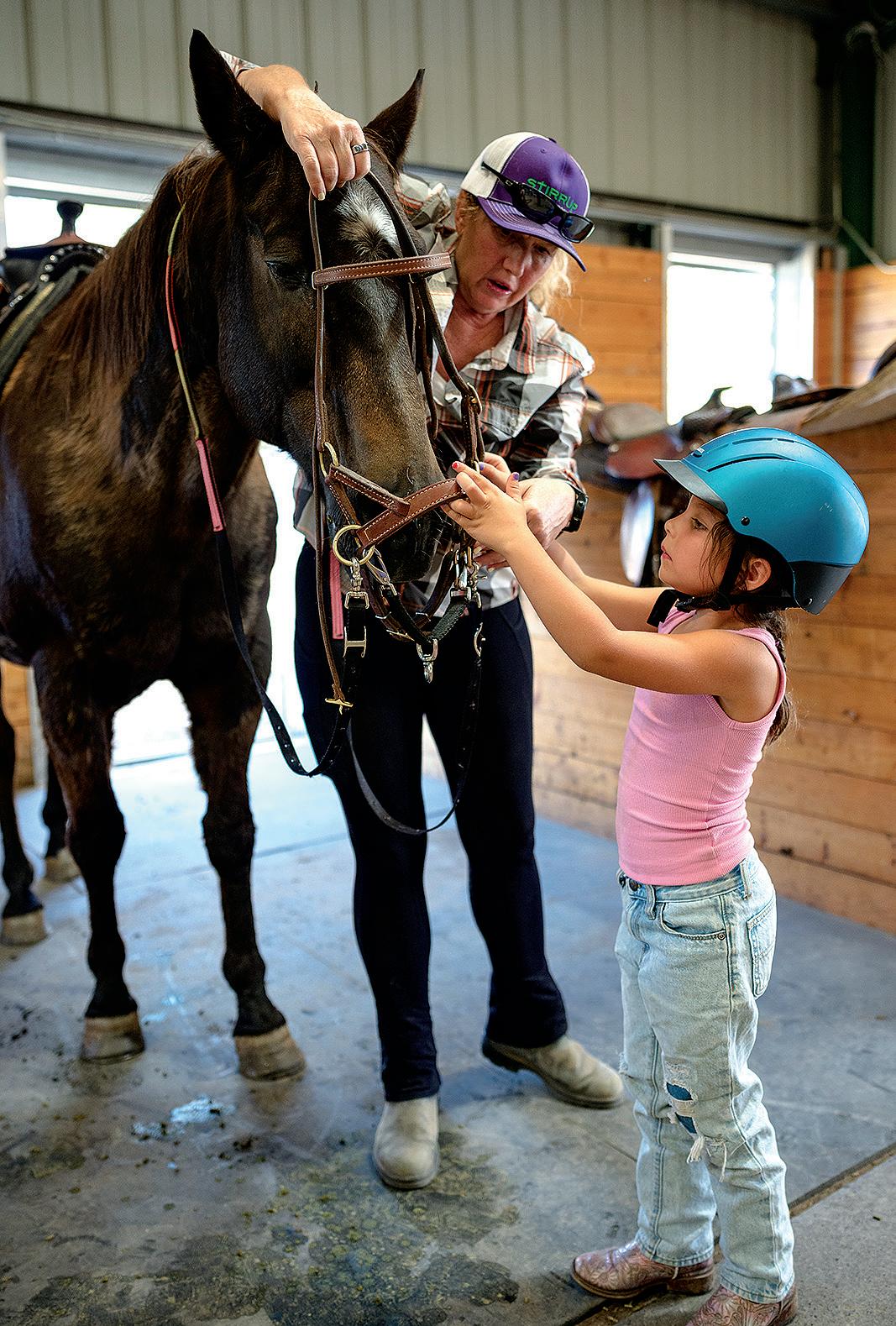

balance, coordination, and increase the overall function of the client.
Occupational Therapy is a treatment strategy used by an occupational therapist that combines the movement of the horse with other standard intervention strategies to work towards improving functional daily living skills.
H.O.R.S.E.S. on the Ranch in Prineville is a trauma-informed organization, sharing over 30 years of experience, offering programs for all people, with a focus on the needs of women, veterans, and young people.
They offer both individual and group therapy sessions for children and adults to support and facilitate healing of a variety of conditions, including but not limited to depression, anxiety, grief, PTSD, substance abuse and recovery, behavioral and social difficulties. Programming focused on growth and learning are available to support communication, collaboration, social-emotional skills, anti-bullying, resilience, teamwork, and leadership.
Located in Tumalo, Central Oregon Wellness Ranch is a serene and private ranch designed specifically to accommodate trauma survivors and veterans. This facility offers individual equine facilitated therapy sessions in addition to integrative one-day wellness retreats that allow clients to heal outside the confines of a traditional therapist's office.
The wellness ranch strives to incorporate trauma-focused mental health treatments in a nontraditional setting. The ranch integrates groundwork with horses as a part of the therapy plans and utilizes psychotherapy, yoga, acupuncture, rhythmic drumming, and other innovative modalities to support clients in their healing journey.
Tammy Harty, founder, says: “The horses serve as catalysts for change and emotional growth. With this hands-on, experiential approach to therapy, clients will learn more about themselves and find deeper meaning and understanding of their maladaptive patterns and behaviors by participating in activities with horses.”
When Adelynn first came to Healing Reins, she had such low muscle tone that she couldn’t sit upright without full support. As her mom, it was heartbreaking to watch. Not because I didn’t believe in her, but because I genuinely wasn’t sure what her future would look like — what her body would be capable of, or how far she could go.
Now, she’s trotting with just a light hold. Her core strength has come so far, and the progress she’s made is nothing short of remarkable. We celebrate every milestone — big or small — because each one represents real growth, hard work, and hope fulfilled.
"The truth is none of this would be possible without the volunteers, staff, and supporters. Without that community, individuals like Adelynn wouldn’t have access to something so transformative.”
— Adelynn’s mom, Tiffany
Equine therapy hasn’t just strengthened Adelynn’s body. It’s
helped build her confidence, her independence, and her joy. She lights up the moment we pull into the property. She’s formed deep connections with the horses, and there’s something so meaningful about the quiet, natural bond she shares with them. That connection is a kind of therapy that no traditional setting can replicate. She especially loves the sensory trail — riding through pool noodles, opening surprise mailboxes, weaving between obstacles on the ground. And beyond riding, she enjoys learning horsemanship skills like brushing the horse and connecting with it on the ground — simple, meaningful moments that help her feel more capable and included.
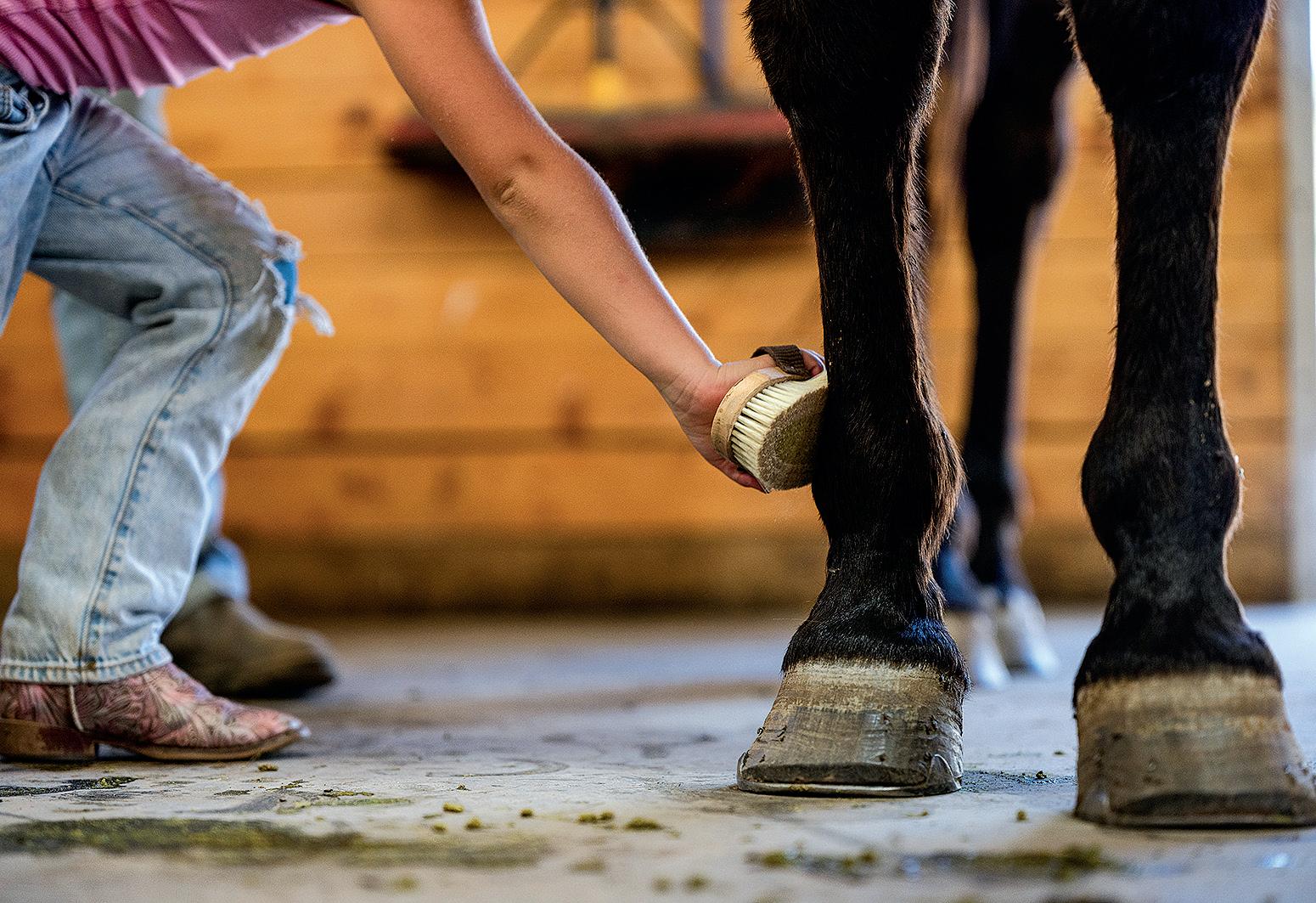

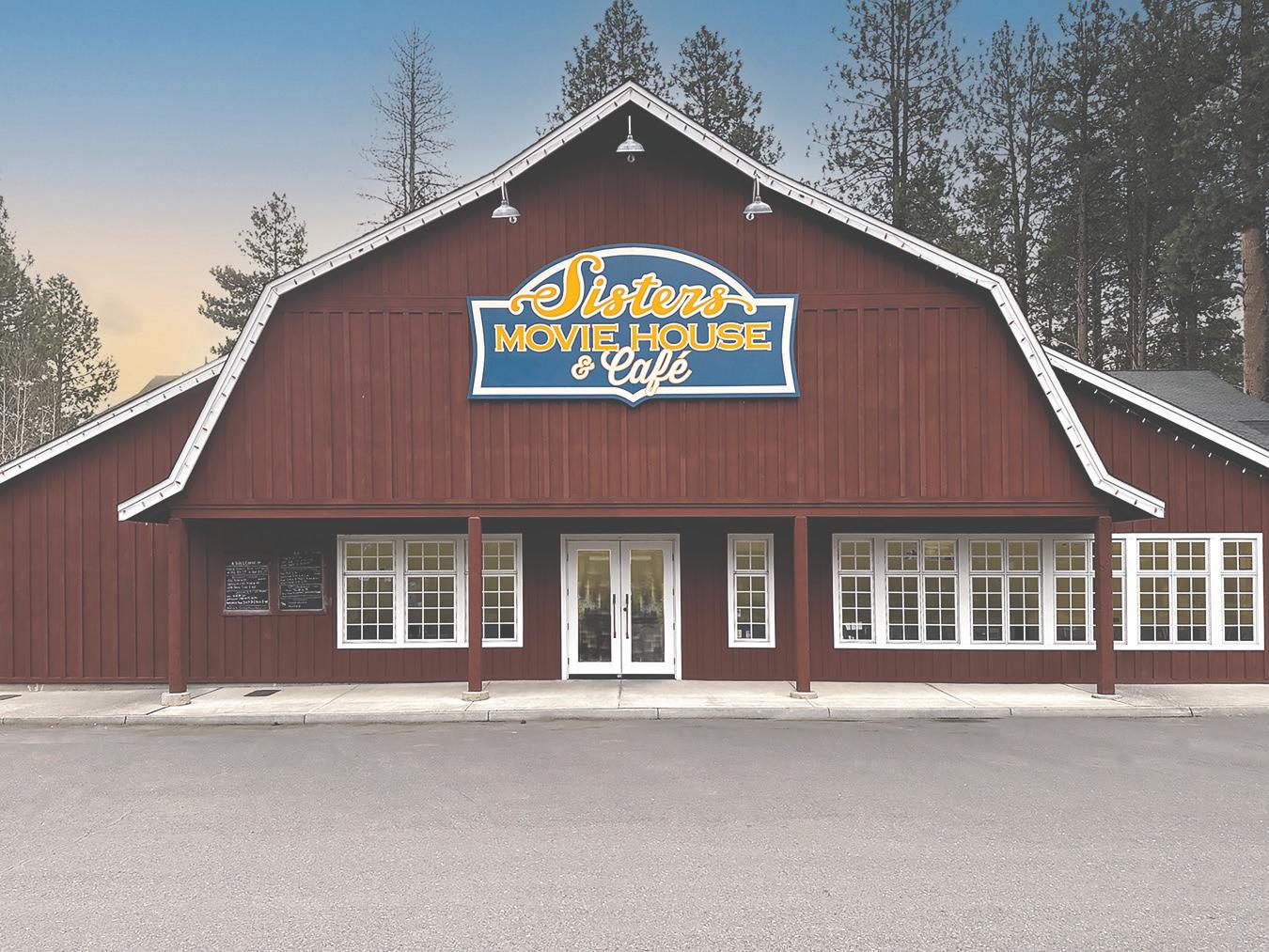


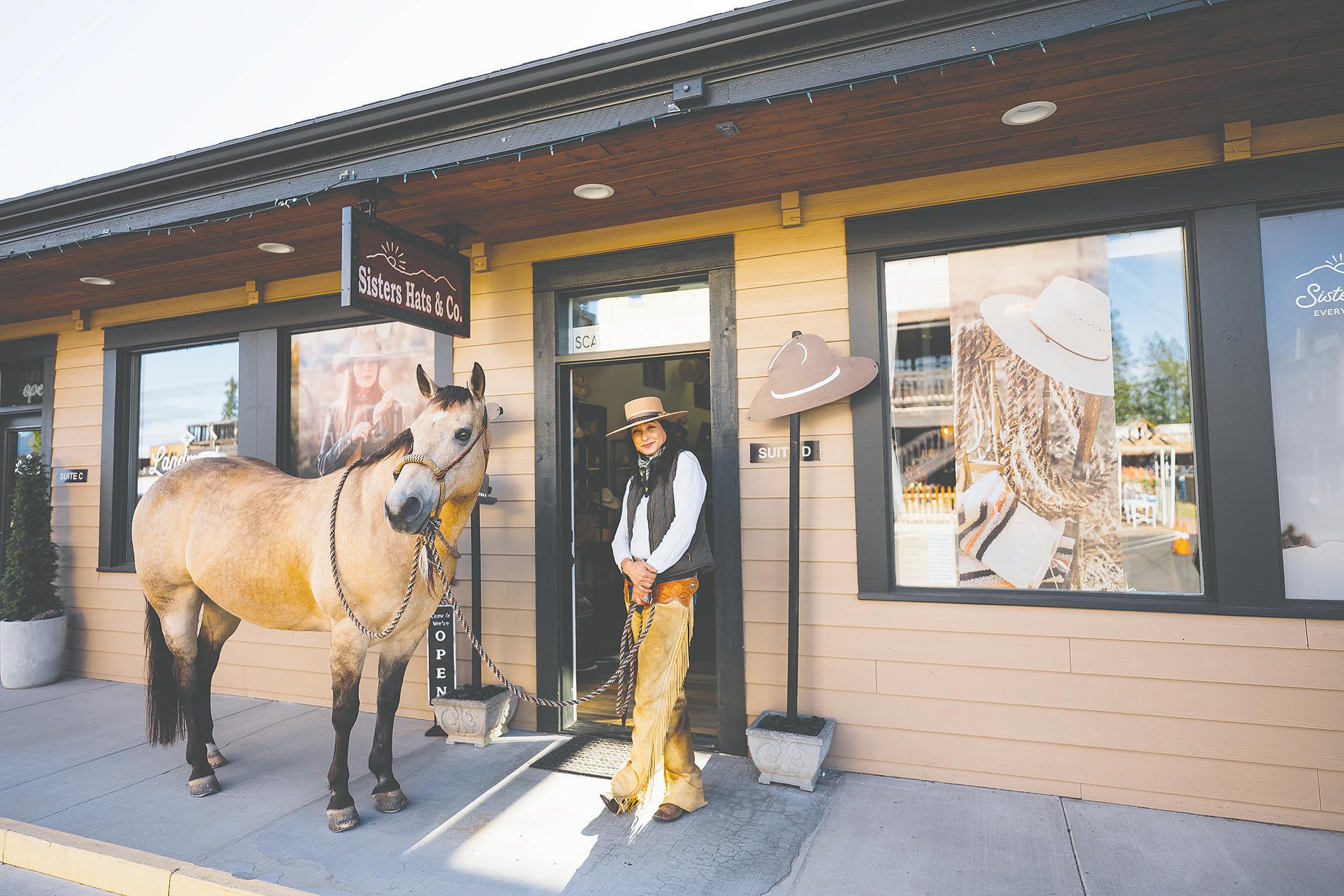
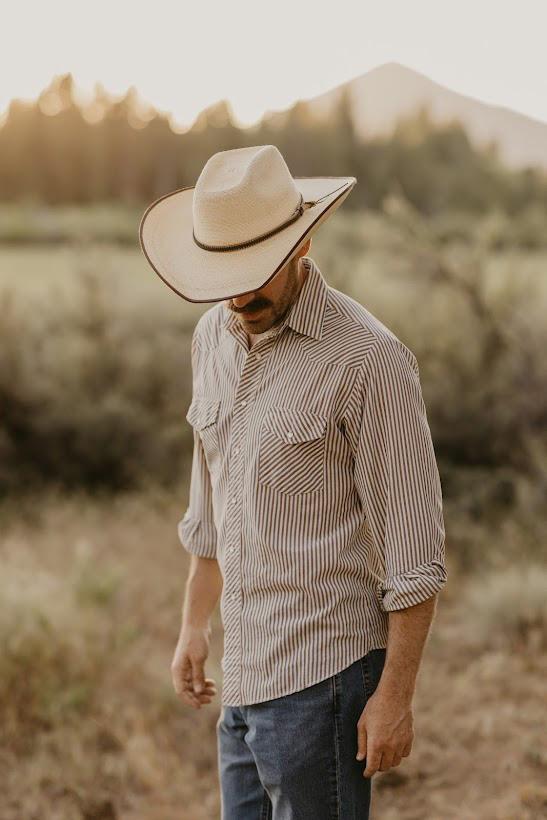
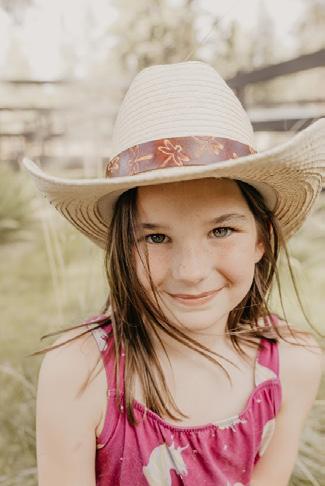
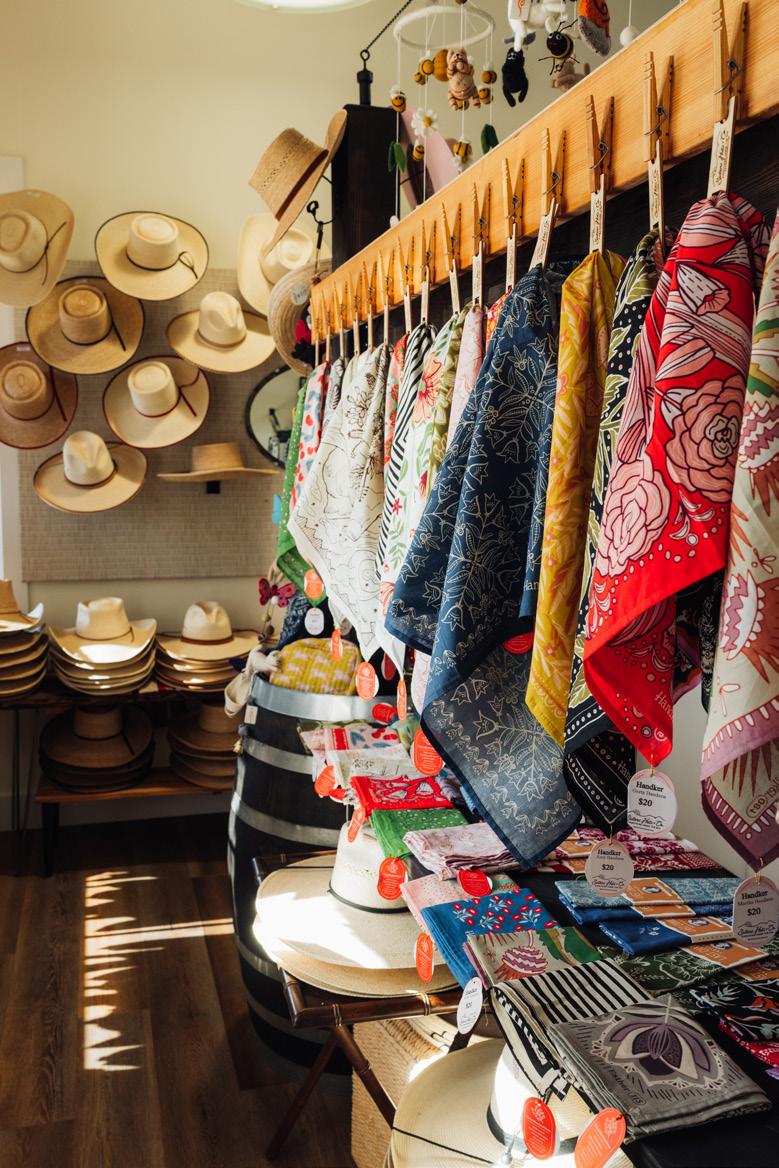
BY JIM CORNELIUS | PHOTOS PROVIDED
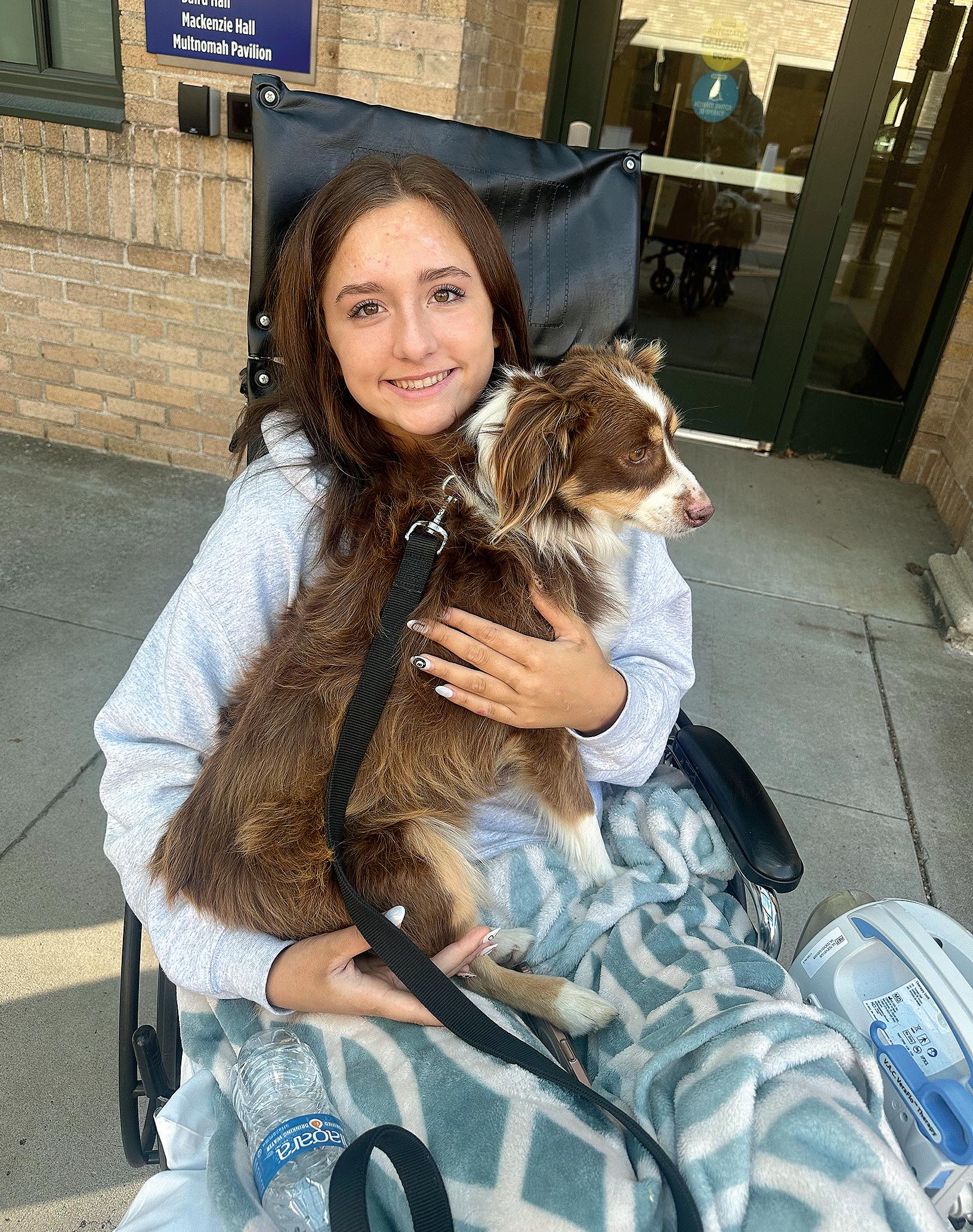
Paige Wood’s life changed profoundly in an instant on August 10, 2025.
The 16-year-old was driving home to Prineville from the Eugene area when she fell asleep at the wheel and crashed into the trees on the side of Highway 126, near Blue Pool. She was trapped in the crumpled hulk of her vehicle, her legs pinned. She tried to keep calm while first responders used saws to cut her out of the wreckage. Paige was airlifted to St. Charles hospital in Bend, alive but badly injured. Both of her legs were severely mangled, and it looked like she might have to have her lower left leg amputated. Her kidneys were lacerated, she had a broken elbow, and the force of the crash had damaged her retinas. From Bend she was transported to Doernbecher Children’s Hospital, then on to Oregon Health & Science University hospital in Portland, where she was put into a medically induced coma.
Over the next weeks, Paige underwent dozens of surgeries that stabilized her legs with rods and pins. She endured a 10-hour procedure to graft a 10-by-4-inch piece of skin from her upper left leg to her severely damaged lower left leg.
Through it all, her mother Heidi Wood was constantly at her side. Heidi

acknowledged that the initial days were dark.
“For a long time, it was just kind of raining on everything,” she said. "And then it changed, and everything was positive — and continues to be, knock on wood.”
One tremendous positive element came unexpectedly; the entire Central Oregon community seemed to rise up as one to lift the Wood family up. It started as soon as the word percolated out that Paige had been in a terrible accident. Heidi is a long-time volleyball coach, and Paige is an athlete, and a “larger-than-life personality,” according to her mom — so the family was well known across Central Oregon.
“When she was in the Bend hospital,” Heidi recalled, “they were getting an overwhelming amount of phone calls. We just had so many people asking how they could help. I had 180 texts in an hour.”
In order to keep friends, family, and the community updated on Paige’s condition, Heidi started sharing information on Facebook — and even more people began to seek ways to pitch in.
“People were genuinely invested in her journey, and part of it,” Heidi said. “We didn’t realize that people were that invested in her recovery. It was pretty neat to us.”
Pink T-shirts and wristbands with
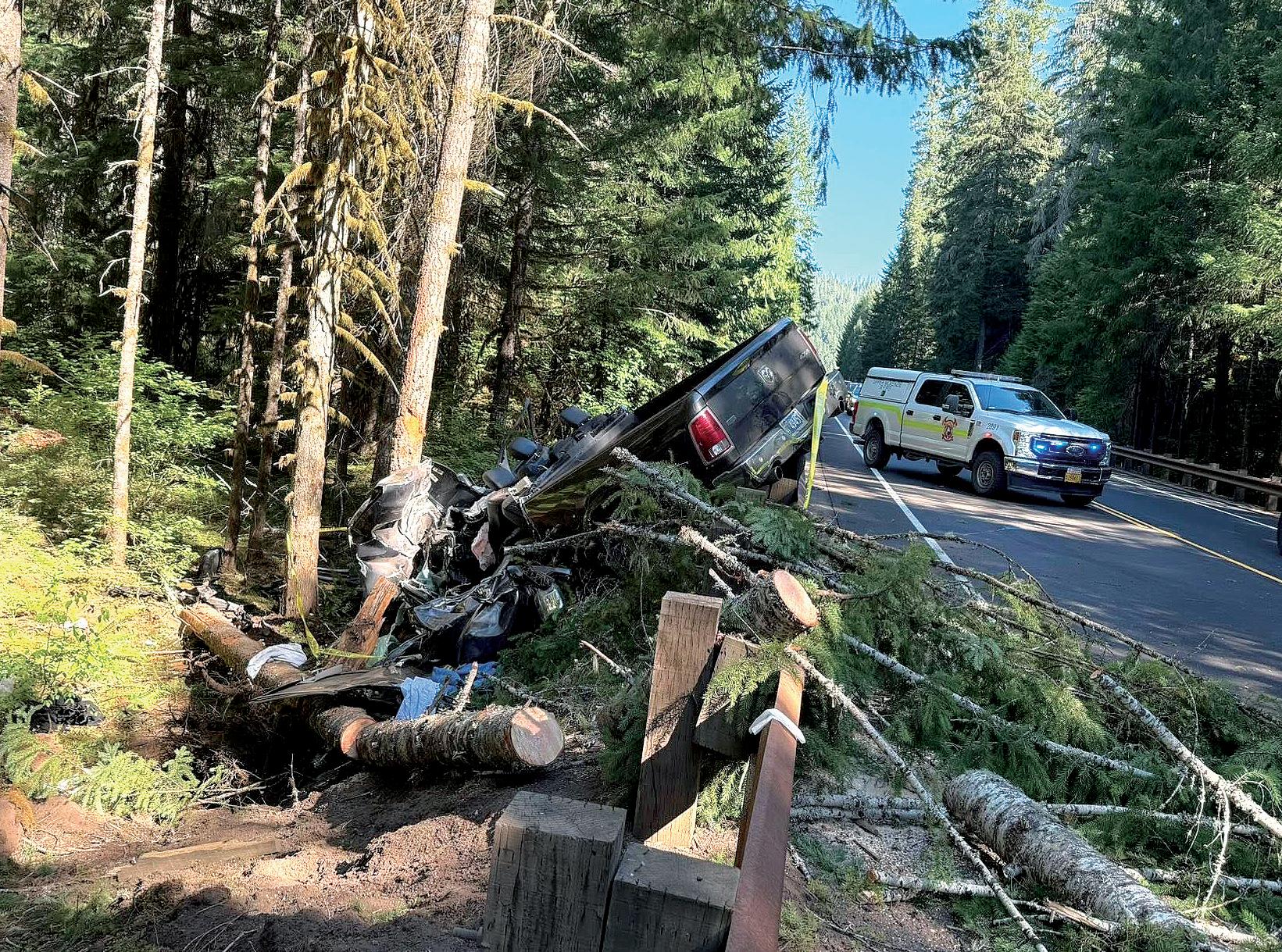
the legend “Paige Strong” began cropping up all over Prineville and Redmond, and businesses from bakeries to coffeehouses and eateries launched fundraisers that brought in thousands of dollars to support the family. A GoFundMe page was set up which, as of press time, had raised nearly $100,000 to benefit a family that is facing mountainous medical bills and a near-total interruption in the ability of Heidi to work.
The financial support, as vital as it is, is not the most important aspect of the massive outpouring of love and
Paige Wood was involved in a terrible car crash near Blue Pool on Highway 126 last summer. She has made a remarkable recovery from devastating injuries.
support. Seeing how much she is loved, even by strangers, has helped Paige face the long and often painful battles she has been through — and will continue to face through a long recovery.
“That’s been a really good thing for Paige’s recovery,” Heidi said. “Those things really pick her up, knowing so many people are cheering for her. The reality of it keeps setting in on her. It’s a lot for her, but she’s determined to get better.”
The prognosis is good for the worst of Paige’s injuries. She appears to be

out of danger for losing her left leg. And initial fears about her eyesight due to the retinal injuries have abated.
“She’s gonna walk again, which is pretty darn amazing,” Heidi said.
Paige is home now, with a remodeled bathroom that allows her a level of self-sufficiency and dignity that is important to her well-being. She’s been to sporting events at her school, and soaked up a continuing outpouring of love and support.
The challenges remain real, however, and not all of them are physical. In a recent post, Heidi acknowledged that mental healing is a significant and ongoing part of Paige’s journey:
“I talk a lot about the physical healing Paige has done. How she is doing a great job about working hard, staying strong and moving forward to regain her strength physically...
“When you are in a severe accident, suffer severe injuries, and go through scary times, too often the mental recovery, the emotional toll, and
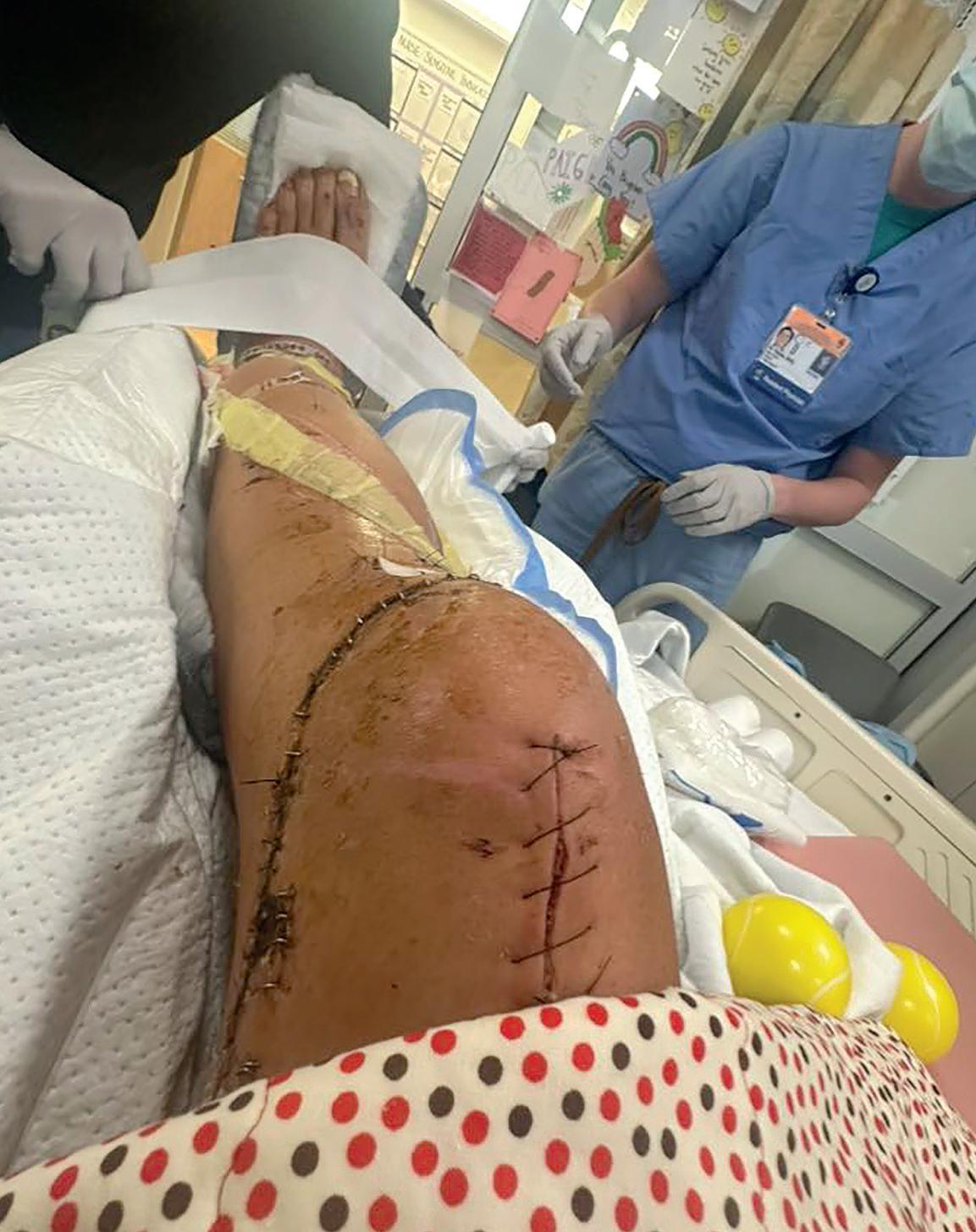
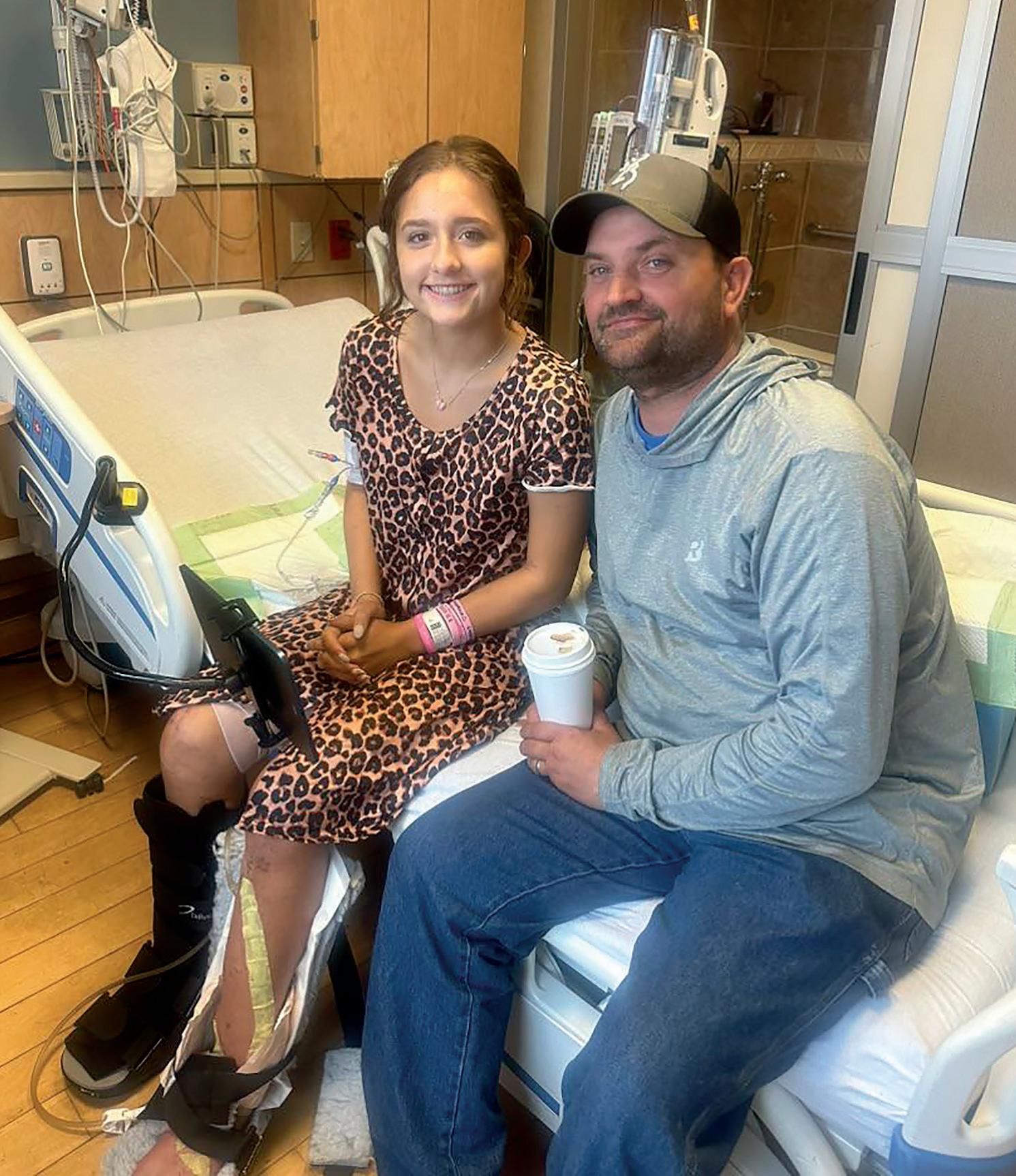
the emotional ups and downs stay out of the focus of your success and your setbacks… Nightly and daily I remind Paige that when she wakes up mom will be here, dad will be here, we aren’t going anywhere. Her eyes [fill] with tears and the word promise means promise in our house. I promise Paige that I’ll be here, she will wake up, and it’s okay to close her eyes. She is safe, she is home, and she is doing a great job.
“This is not a suck it up job, processing this is a day-by-day, minute-by-minute healing mission. The mental
has a huge role and effect in her healing, in anyone’s healing and moving forward. Mental fear plays a huge role and can be the devil in the healing process. Rebuilding mental security and mental strength in Paige is on the front burner, listening to her fears and reassuring her she is safe and loved is on the front burner, making her believe and know she’s not going to die is on the front burner. Letting her talk about these fears and not downplaying them is a top priority.”
And the whole Wood family knows that the Central Oregon community will continue to have their back, offering support in so many unexpected ways. Their gratitude is deep.
“It’s special,” Heidi said. “It’s really special.”
The Rally For Paige GoFundMe can be accessed at https://www. gofundme.com/f/rally-for-paigehealing-after-her-accident.


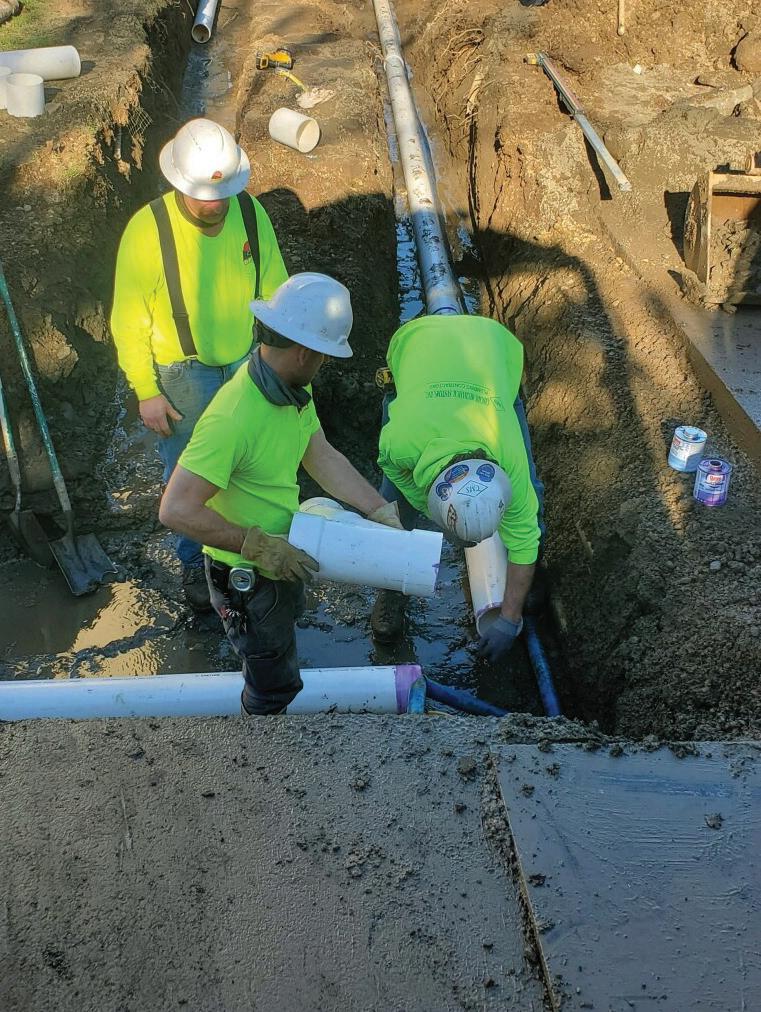





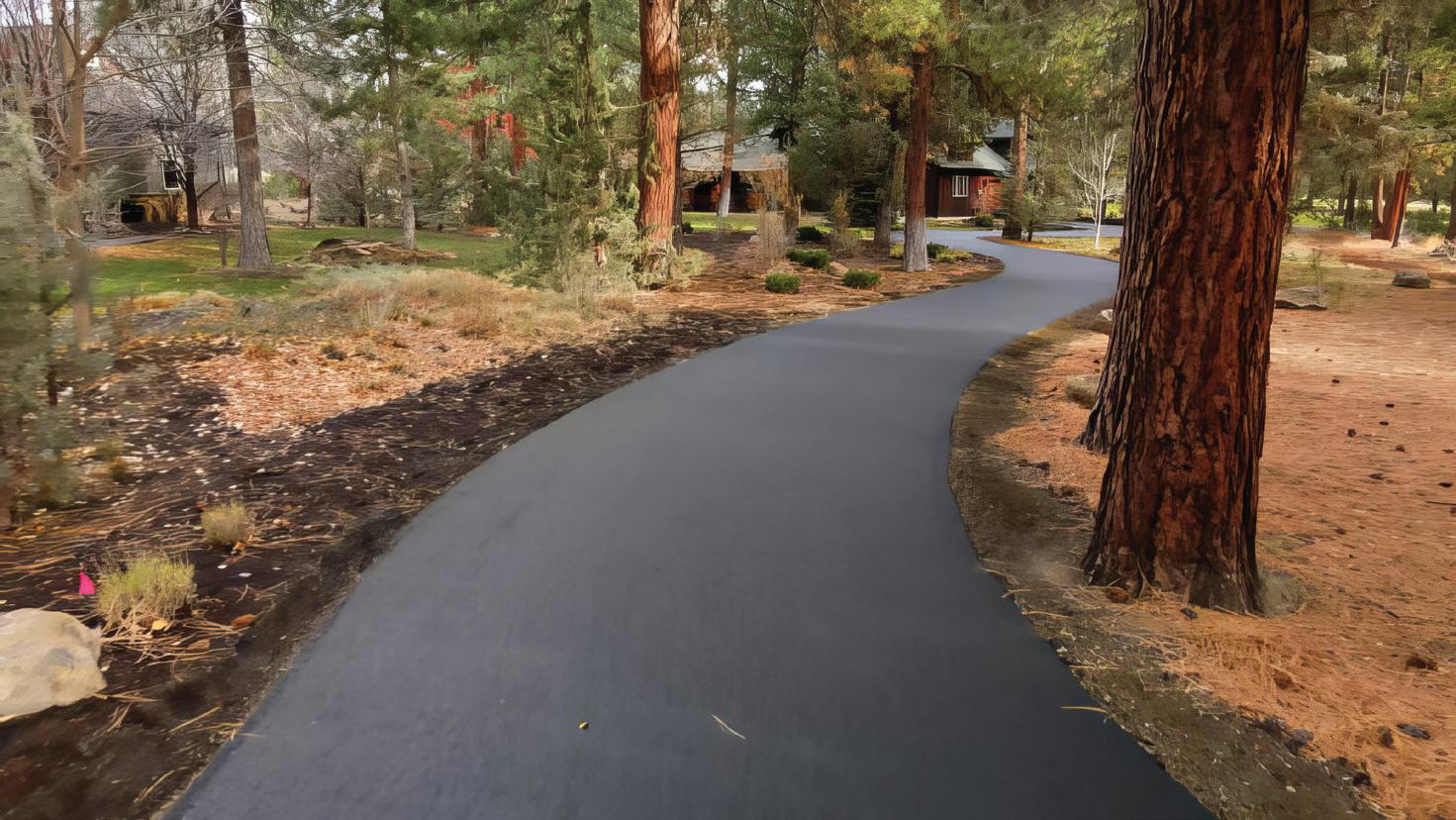



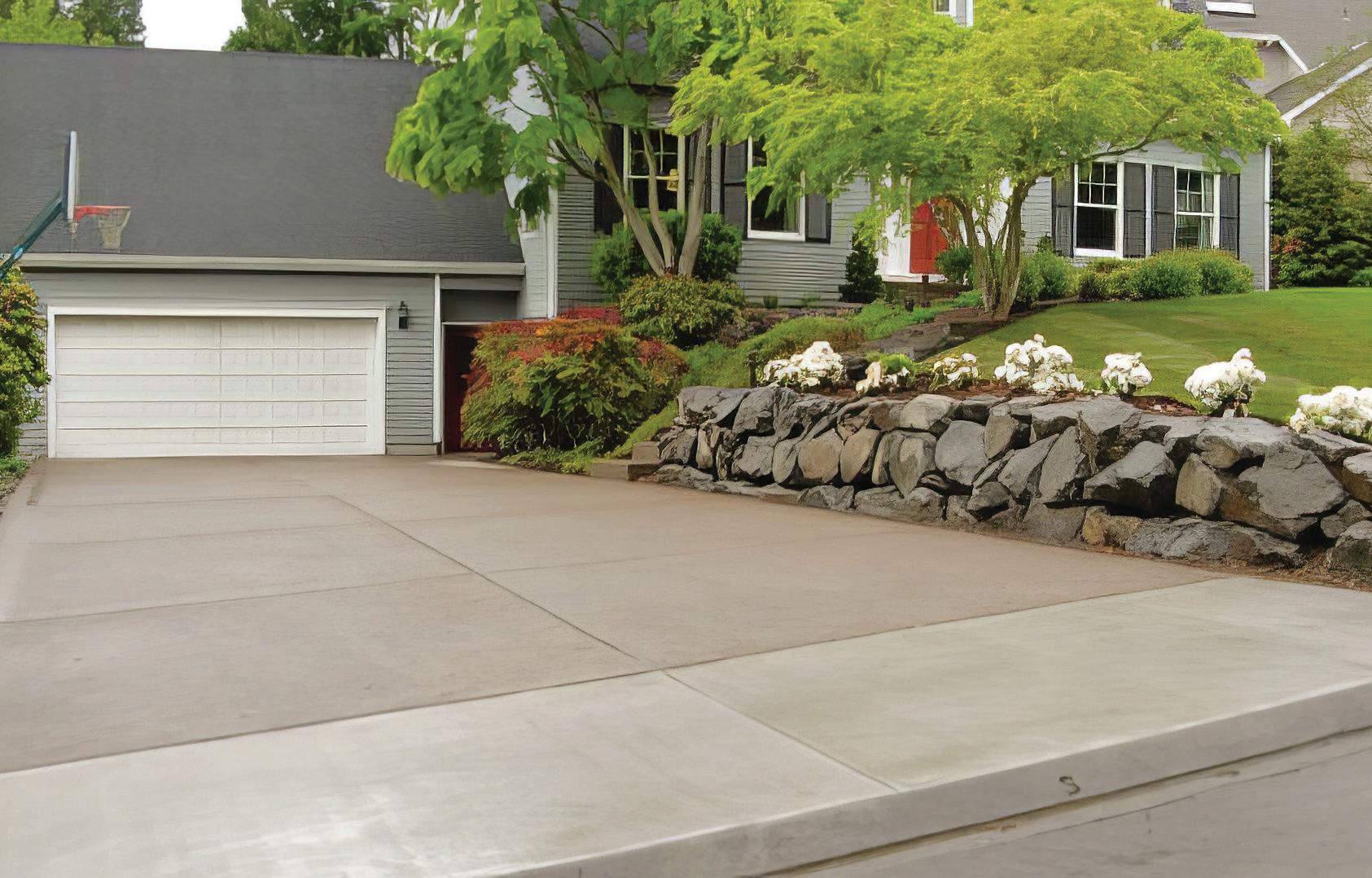
“We continue to get praise from our neighbors on our new driveway. The BANR crew is professional, kind, and thoughtful, leaving a clean worksite behind each day. We have already recommended BANR to others!”
— Jeff & Theresa R., Bend

• Clearing & removal of trees, stumps, brush
• Sewer, water, electrical, and drainage lines
• Foundation excavation and backfill; site grading
• Curbs, driveways, patios, and RV pads

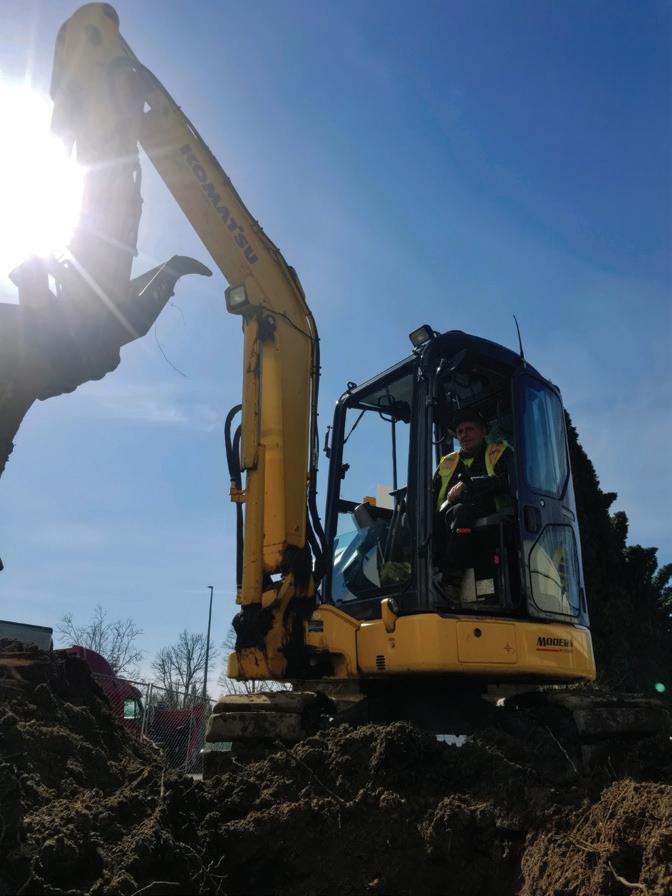



• Gravel and asphalt driveways; concrete sidewalks
• Rock and border retaining walls Gravel and





